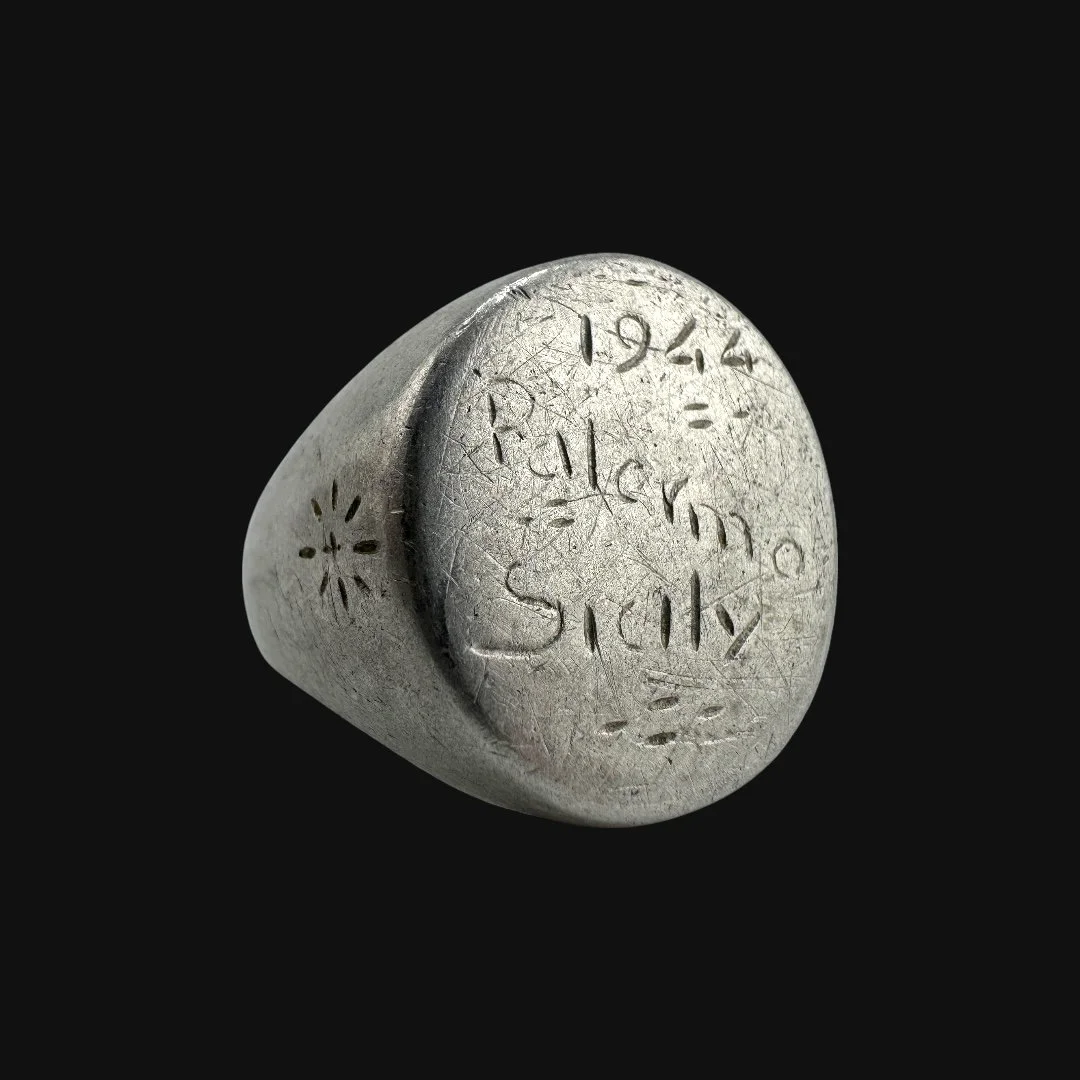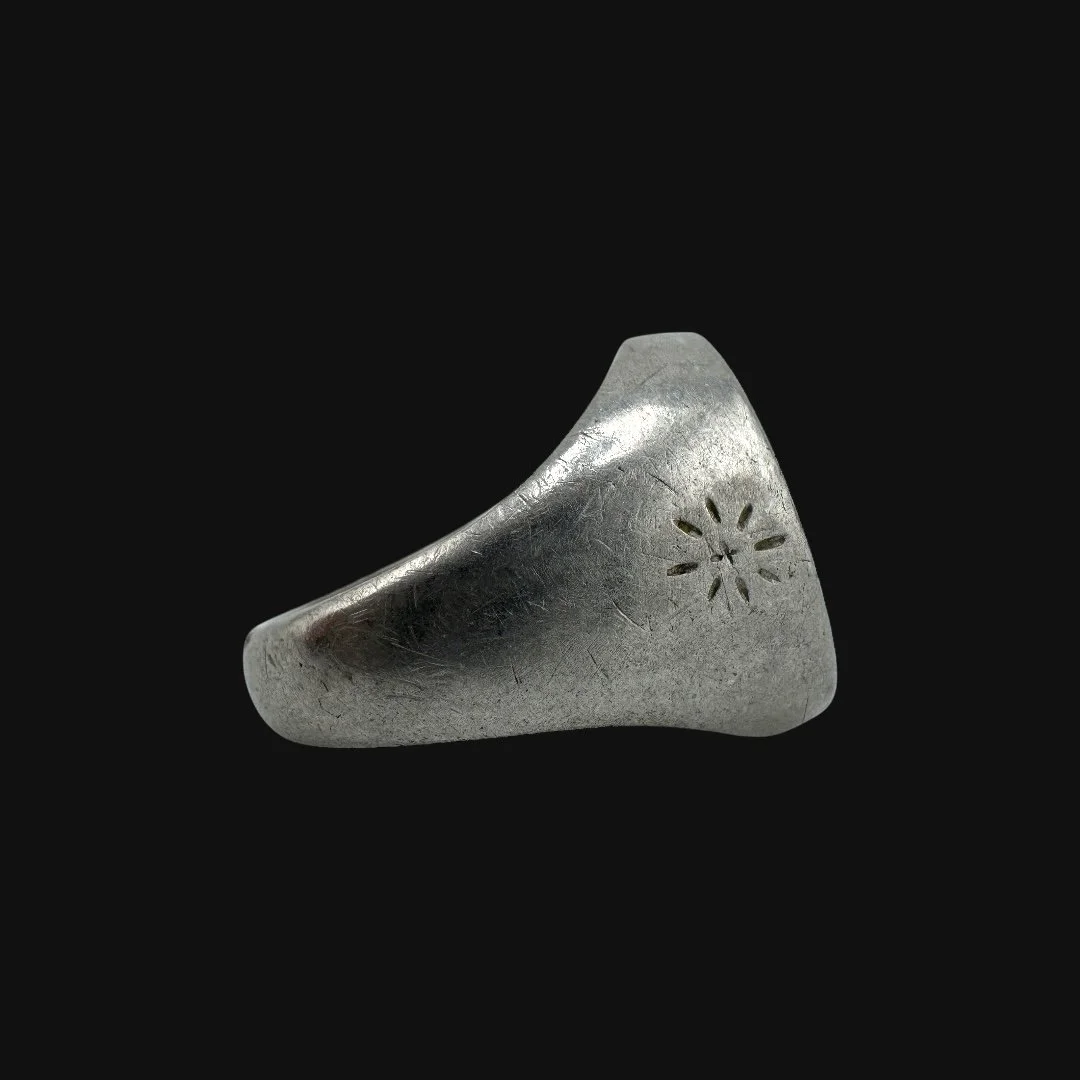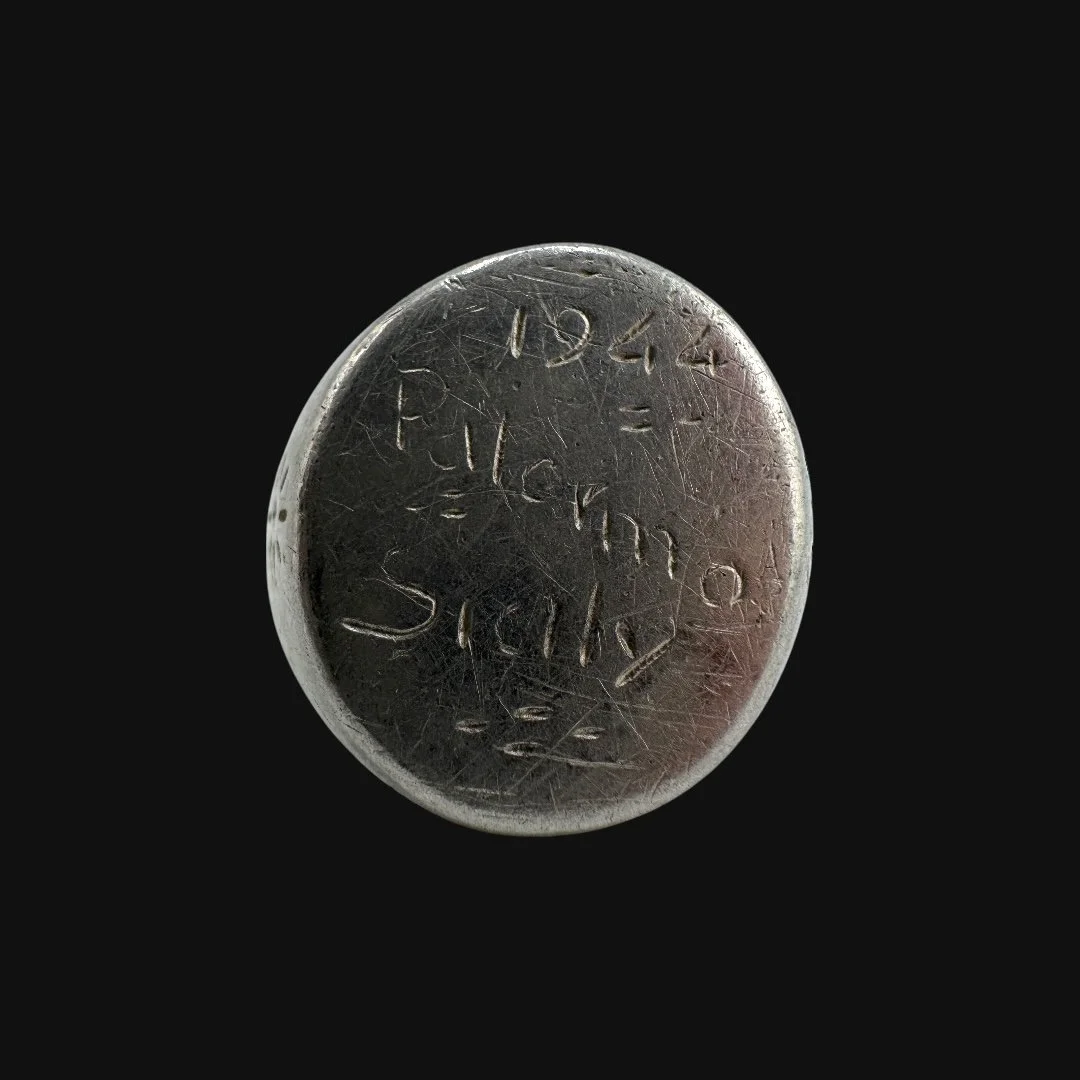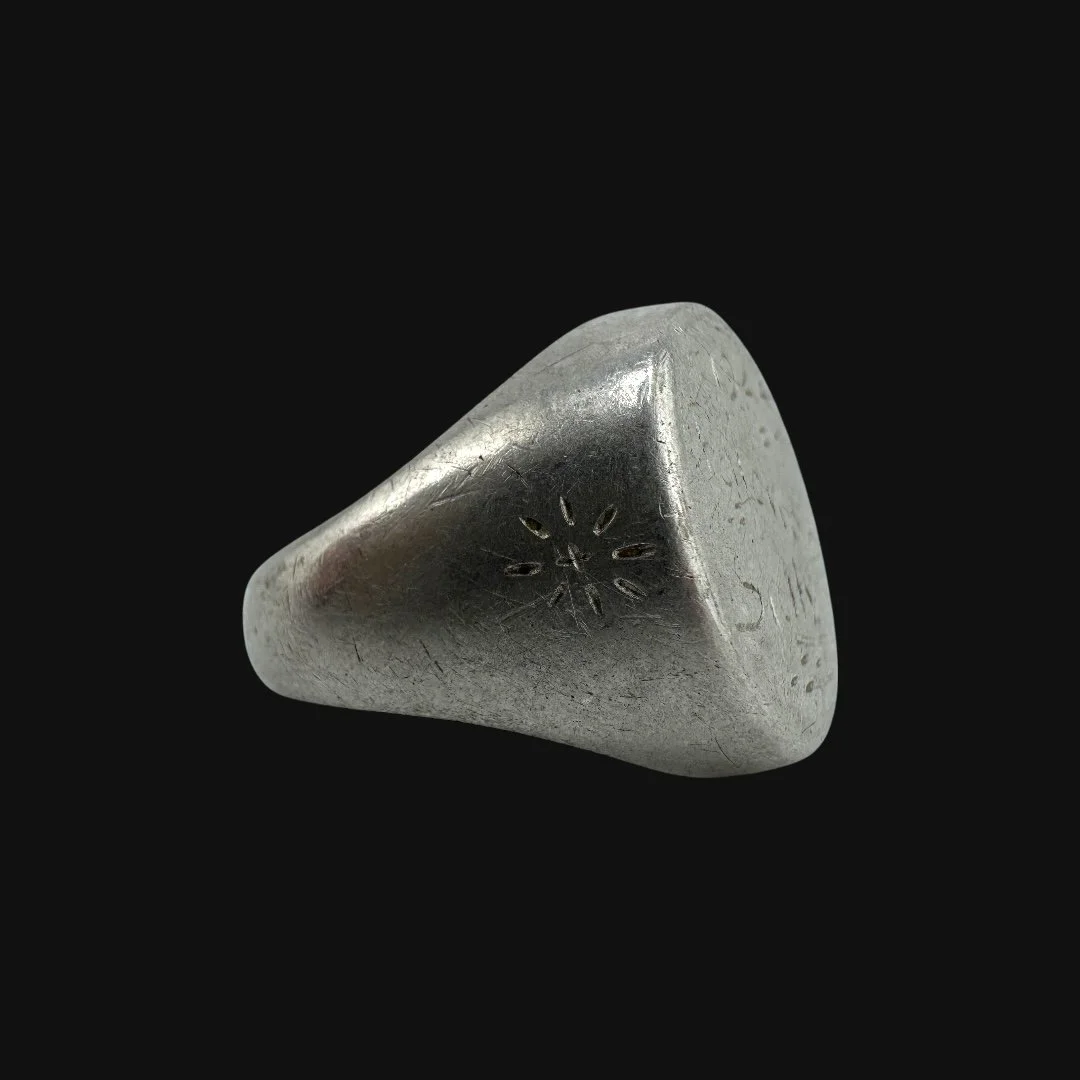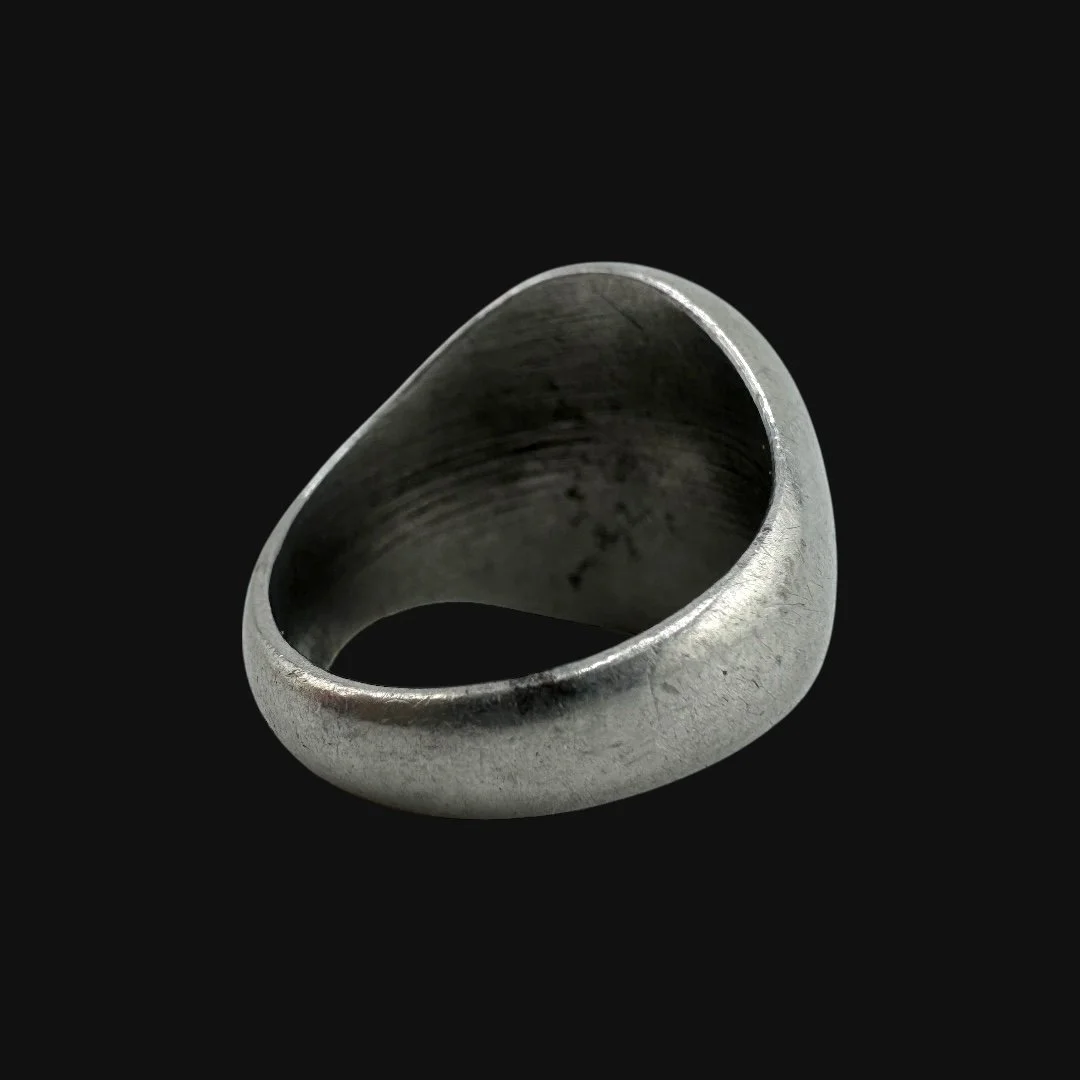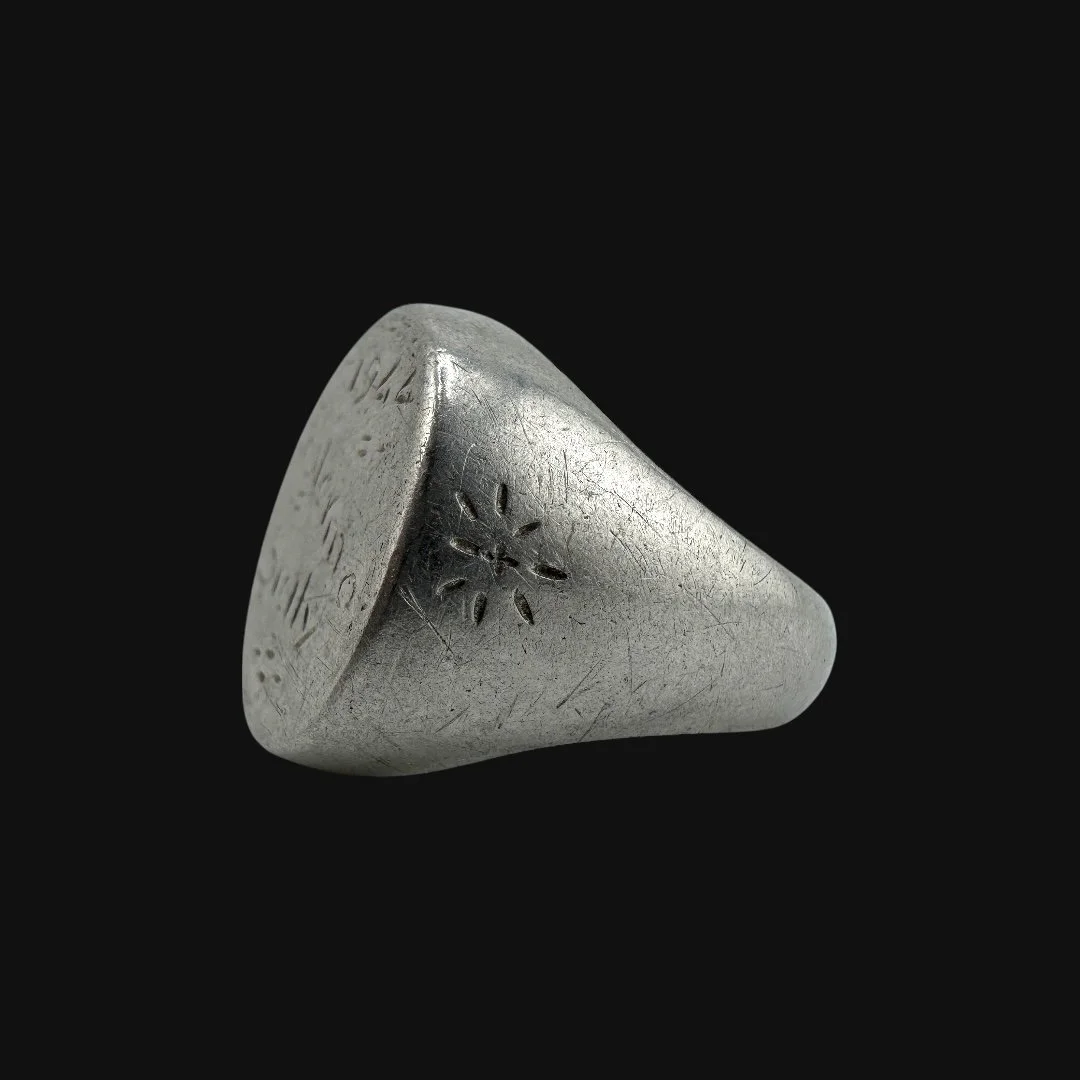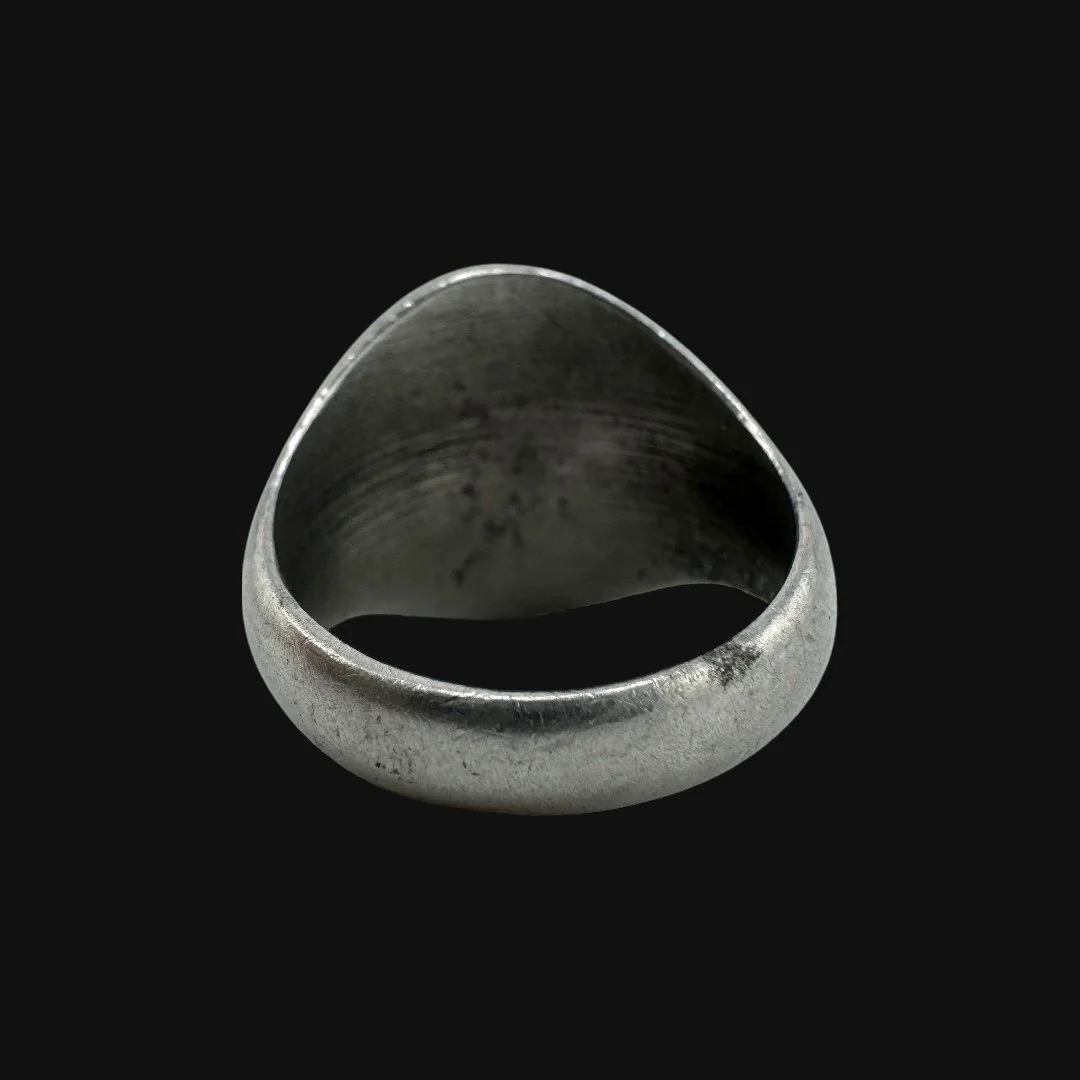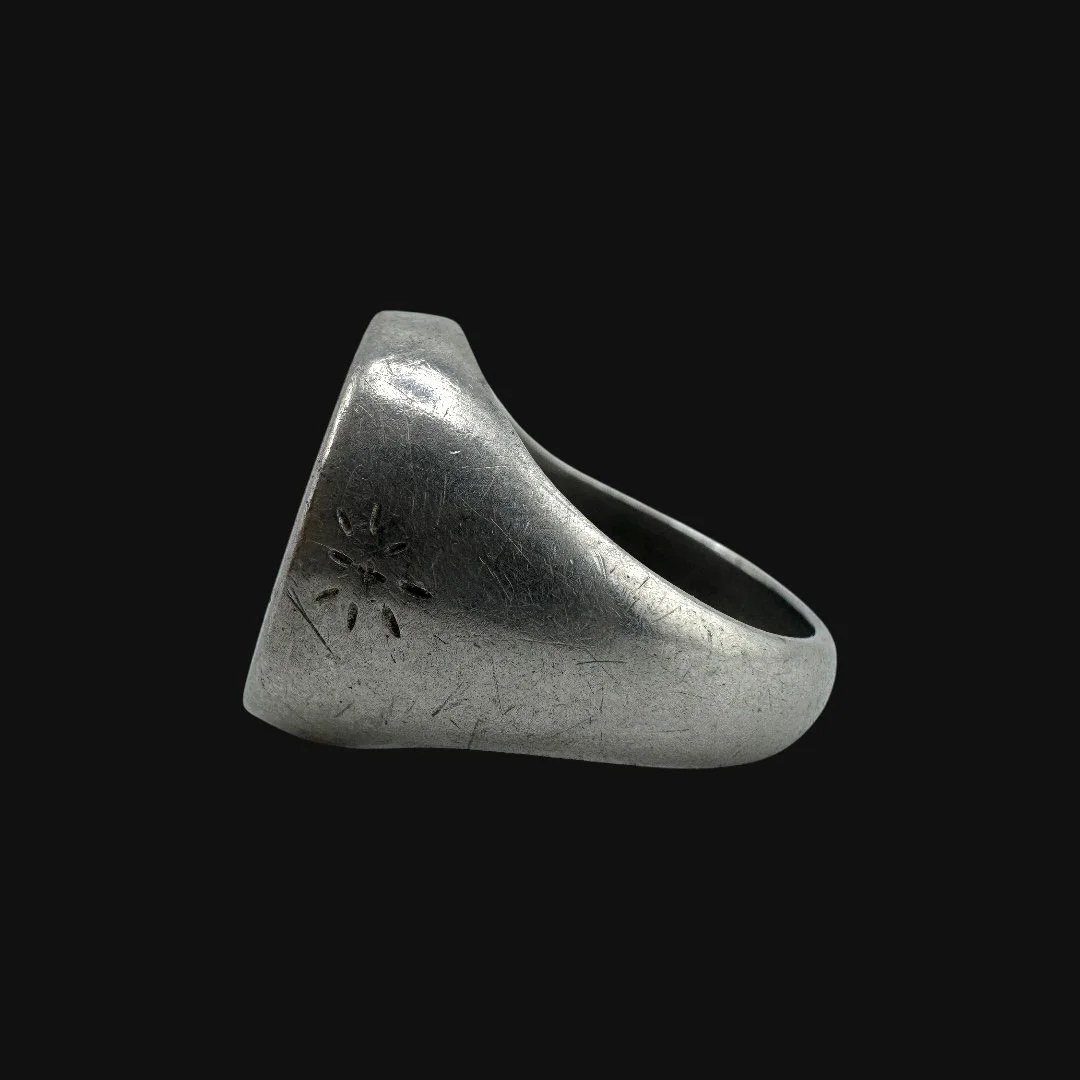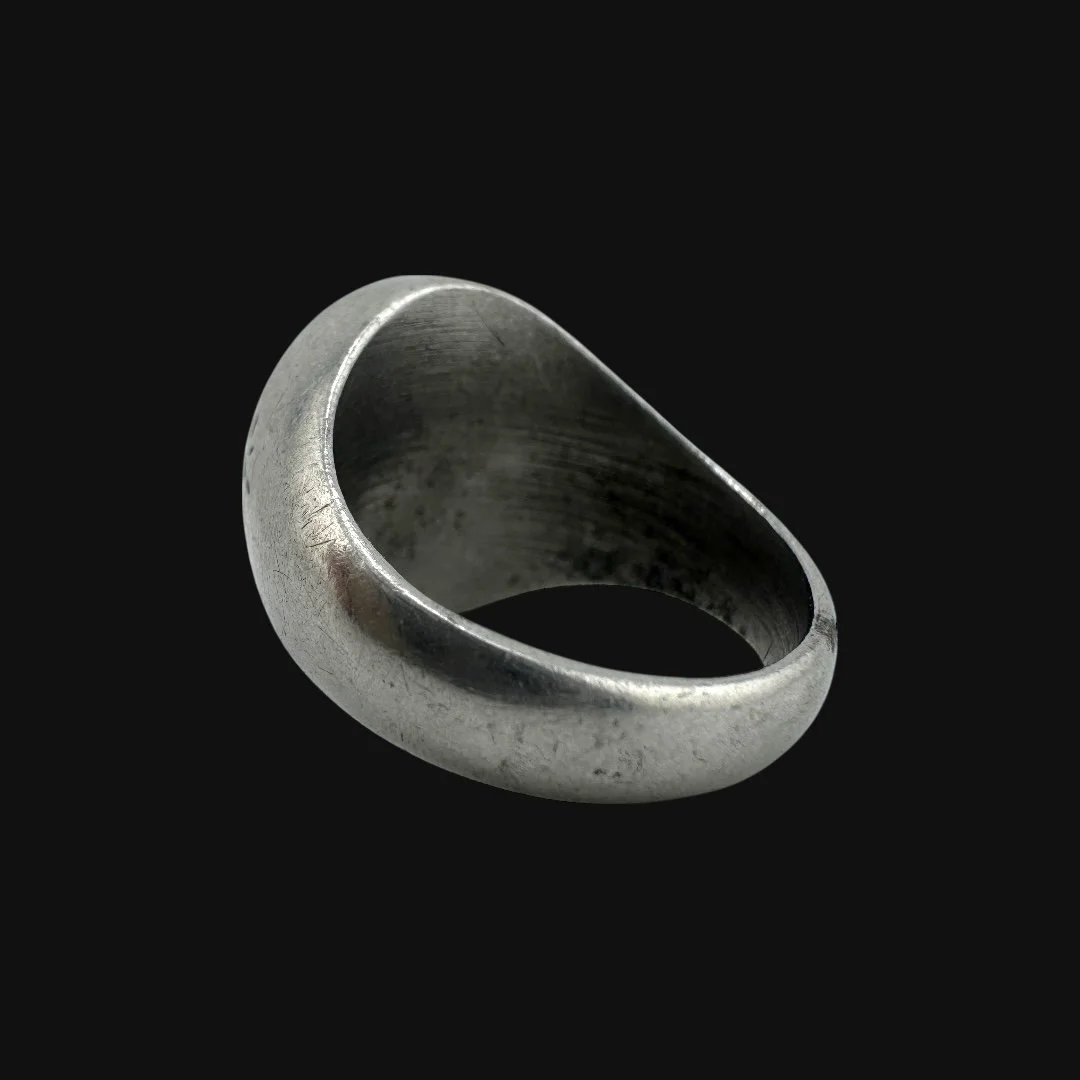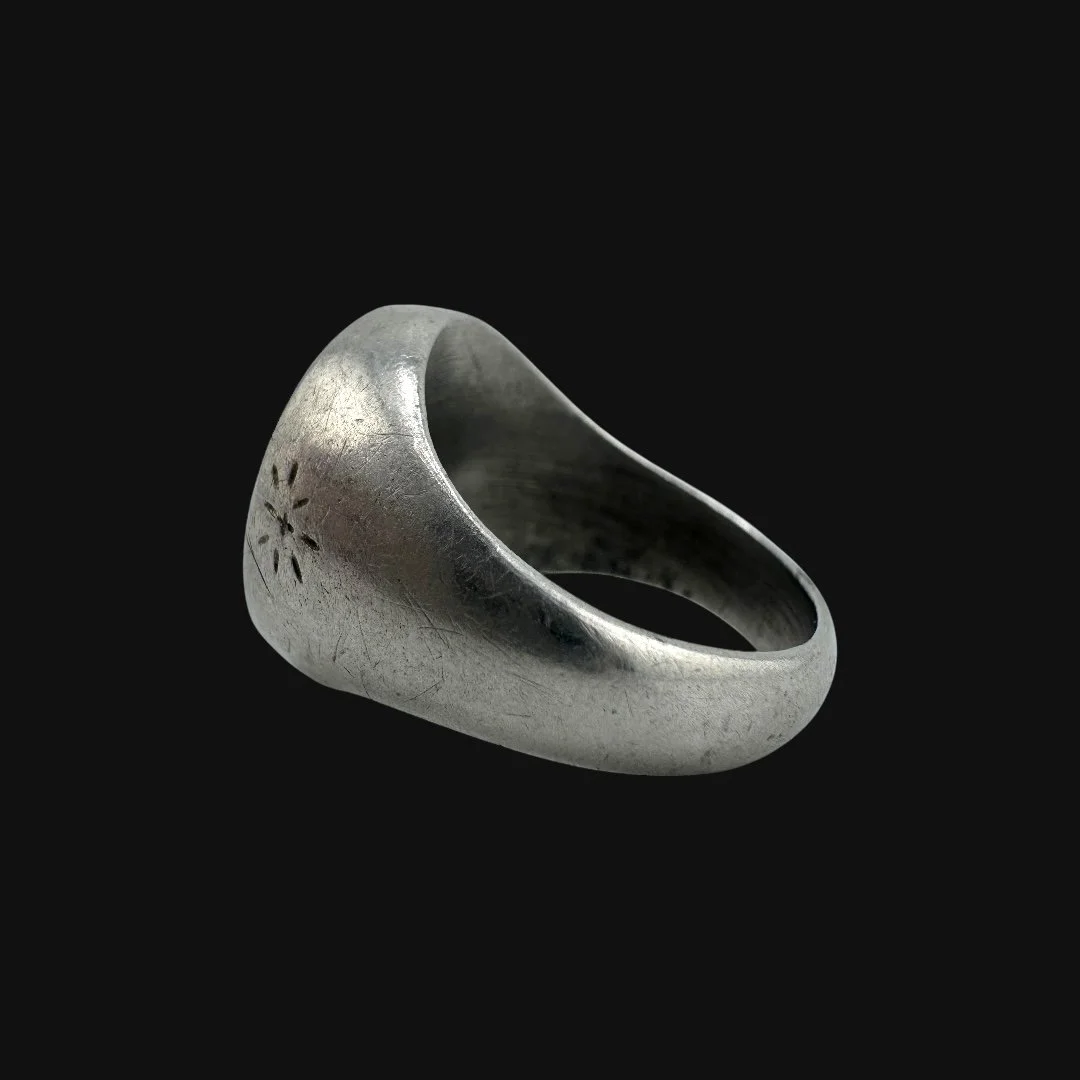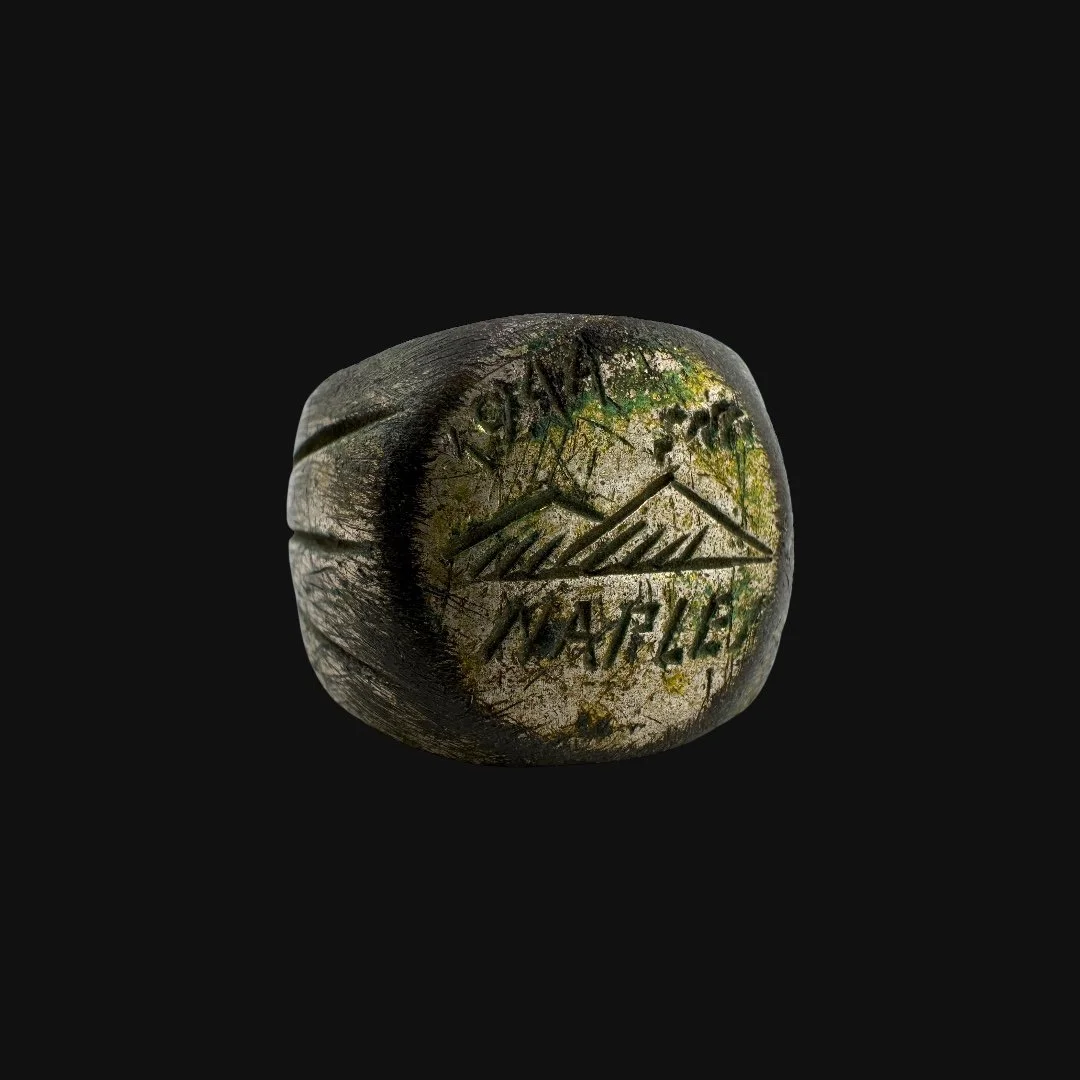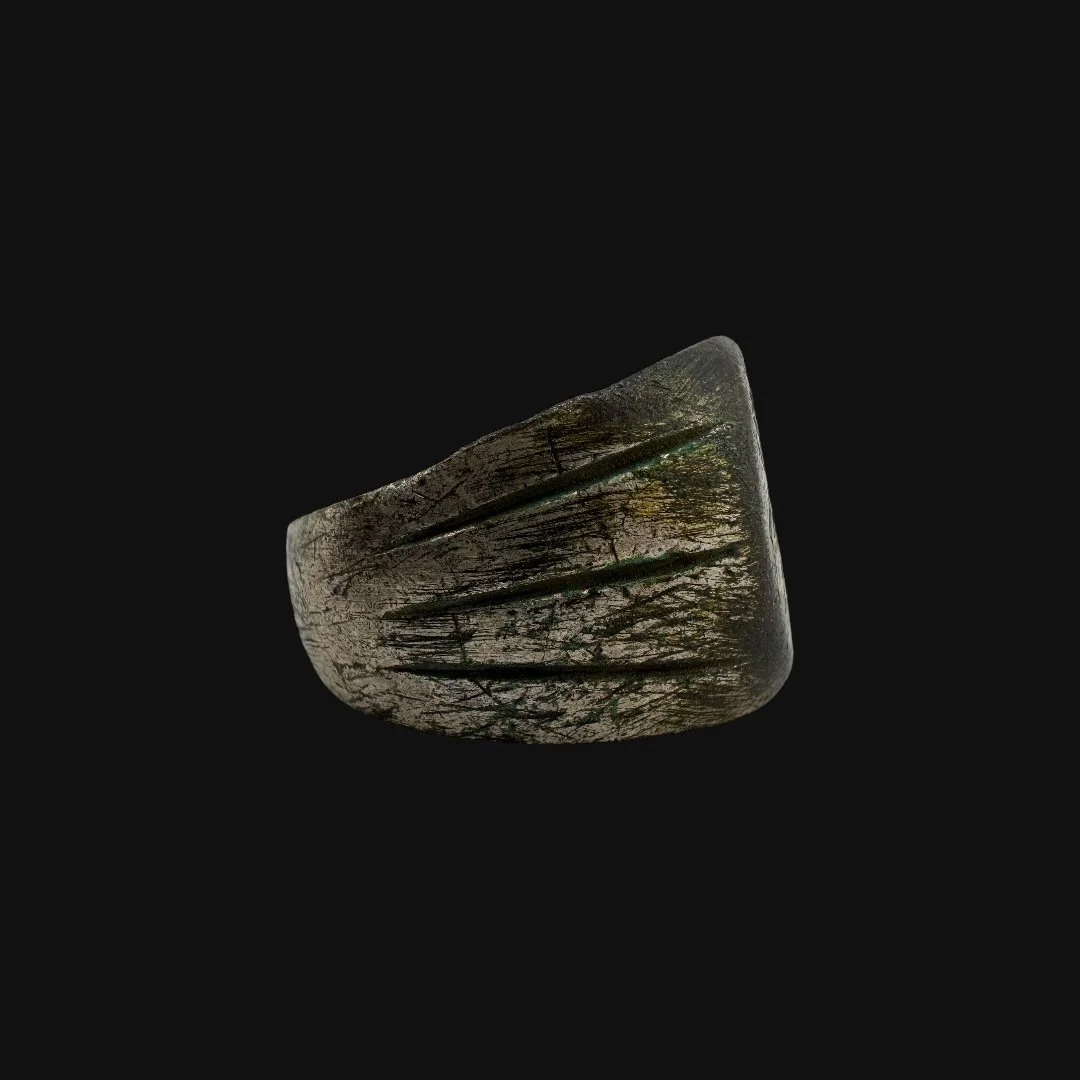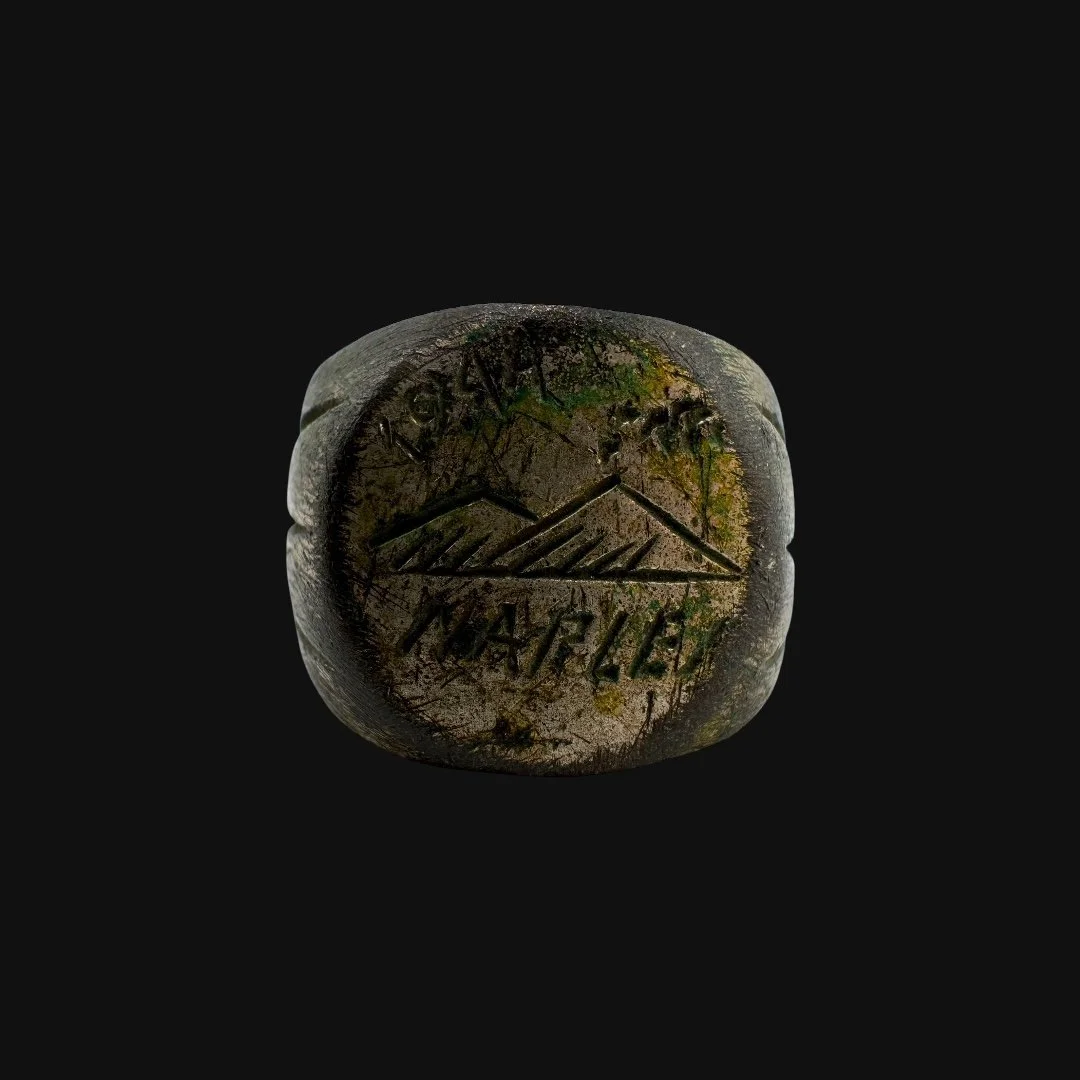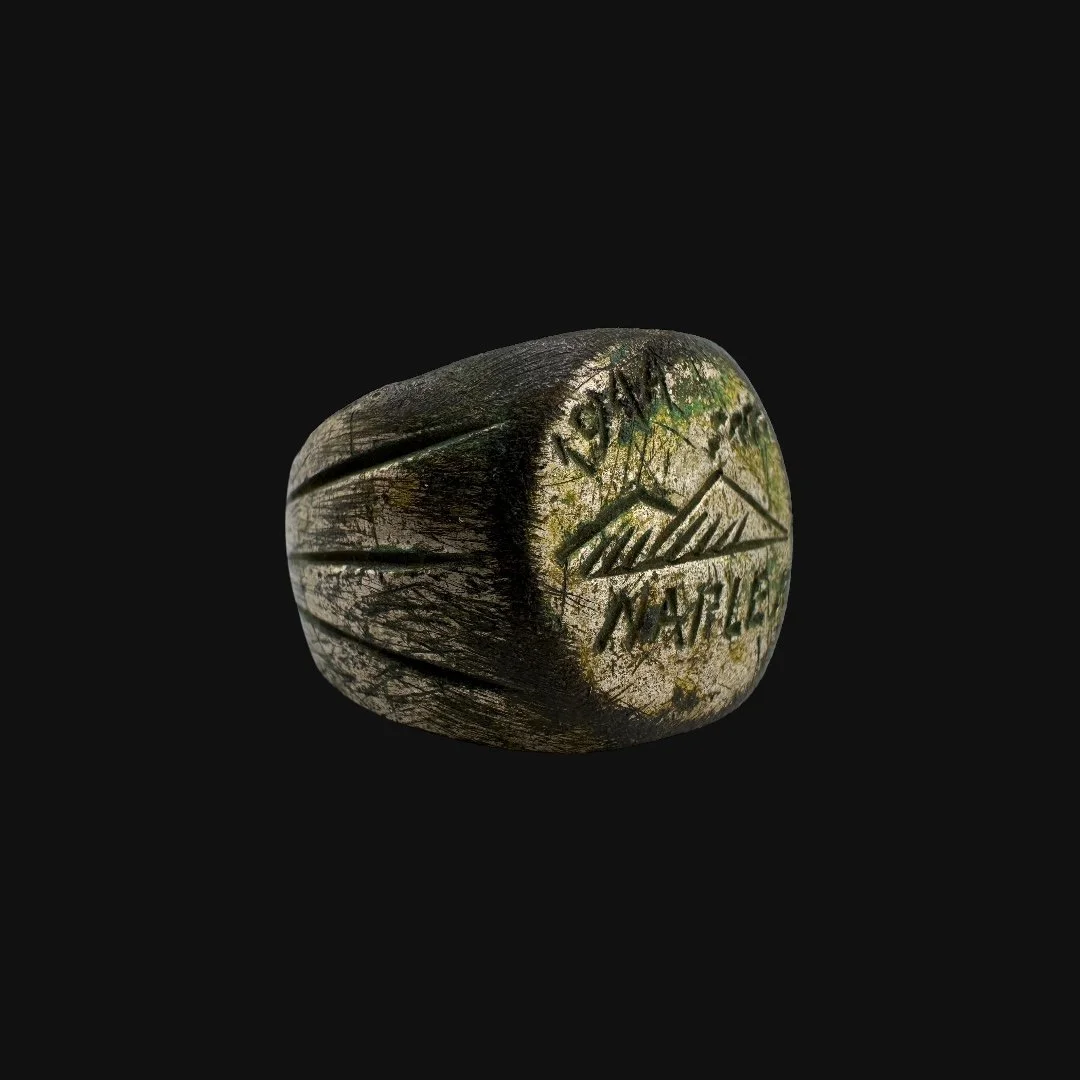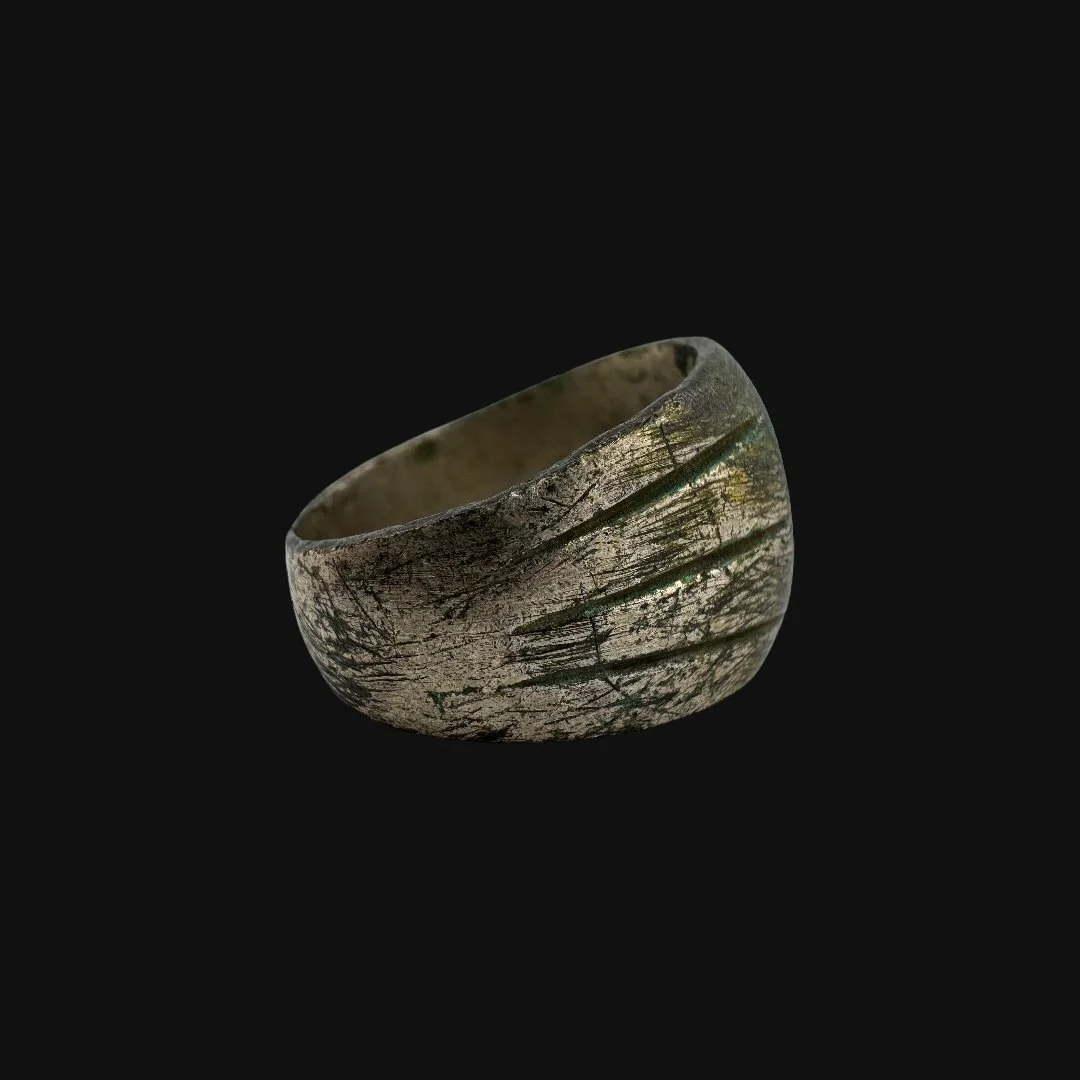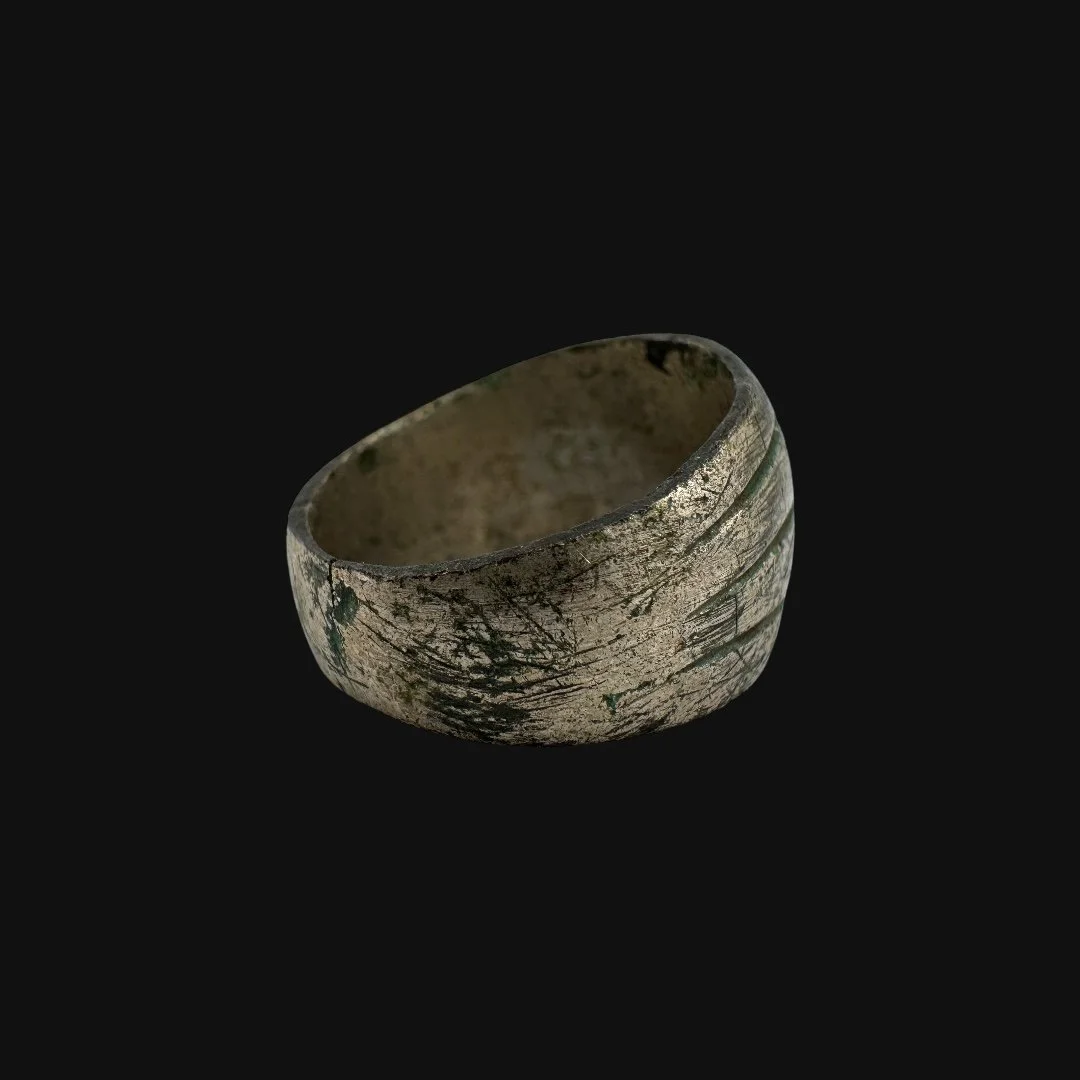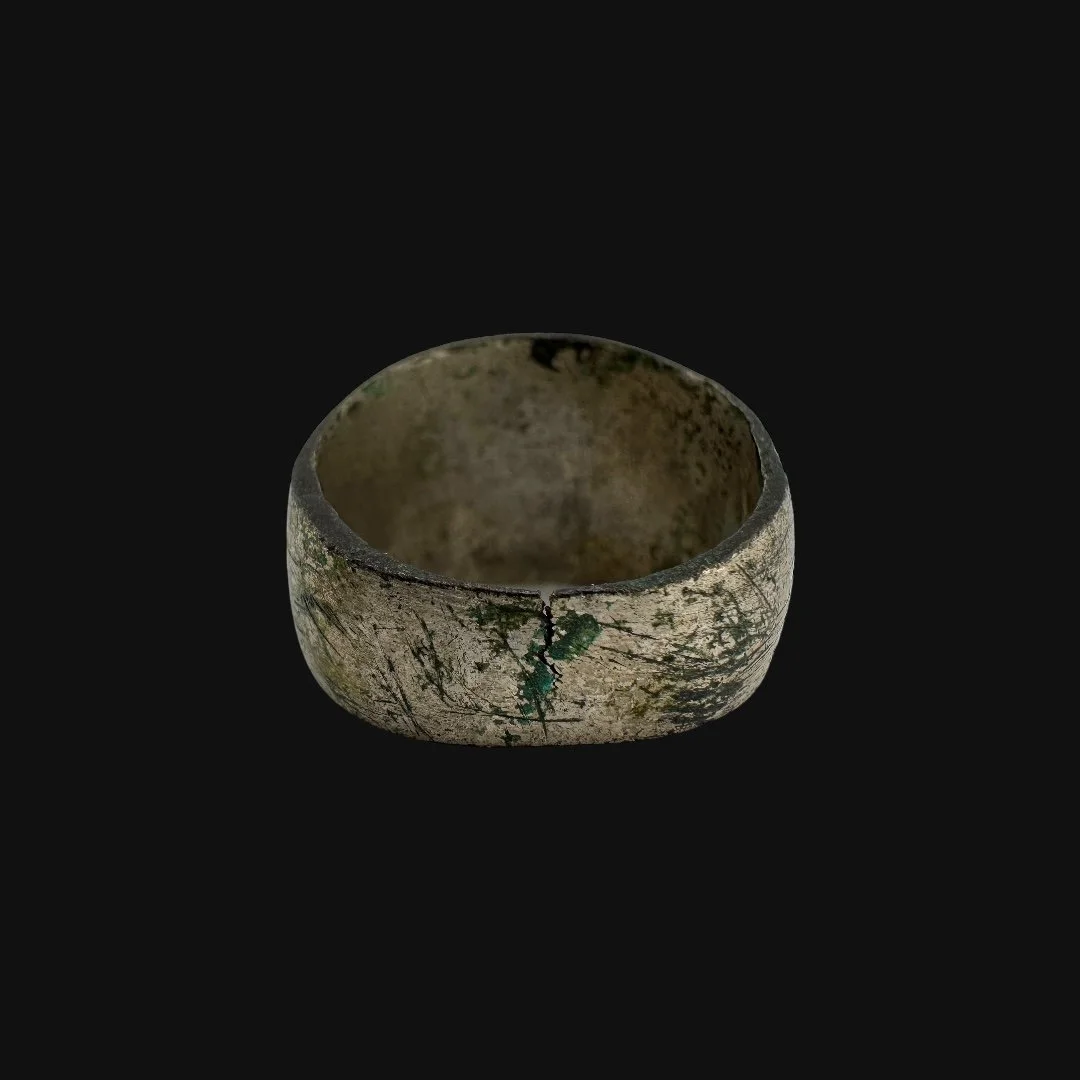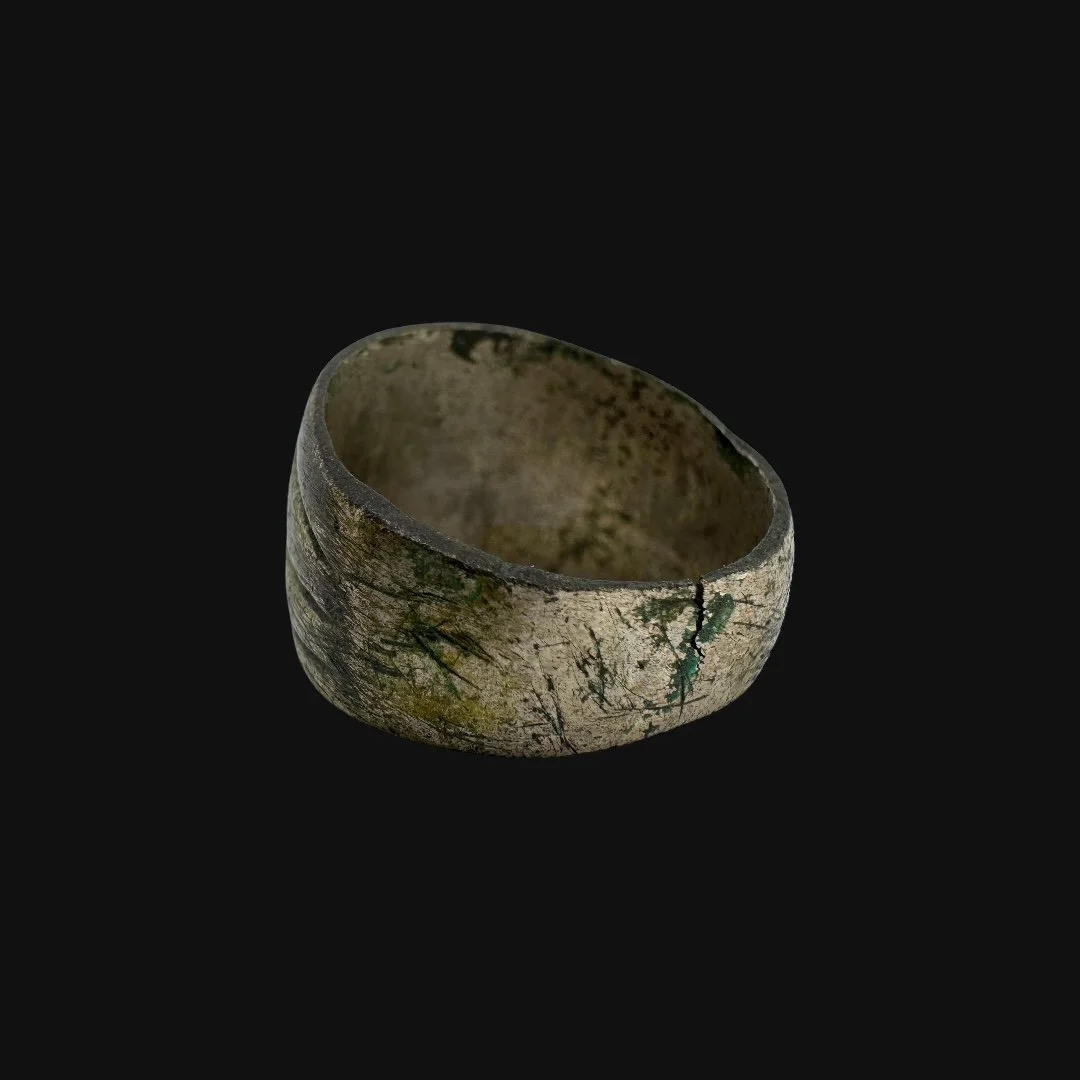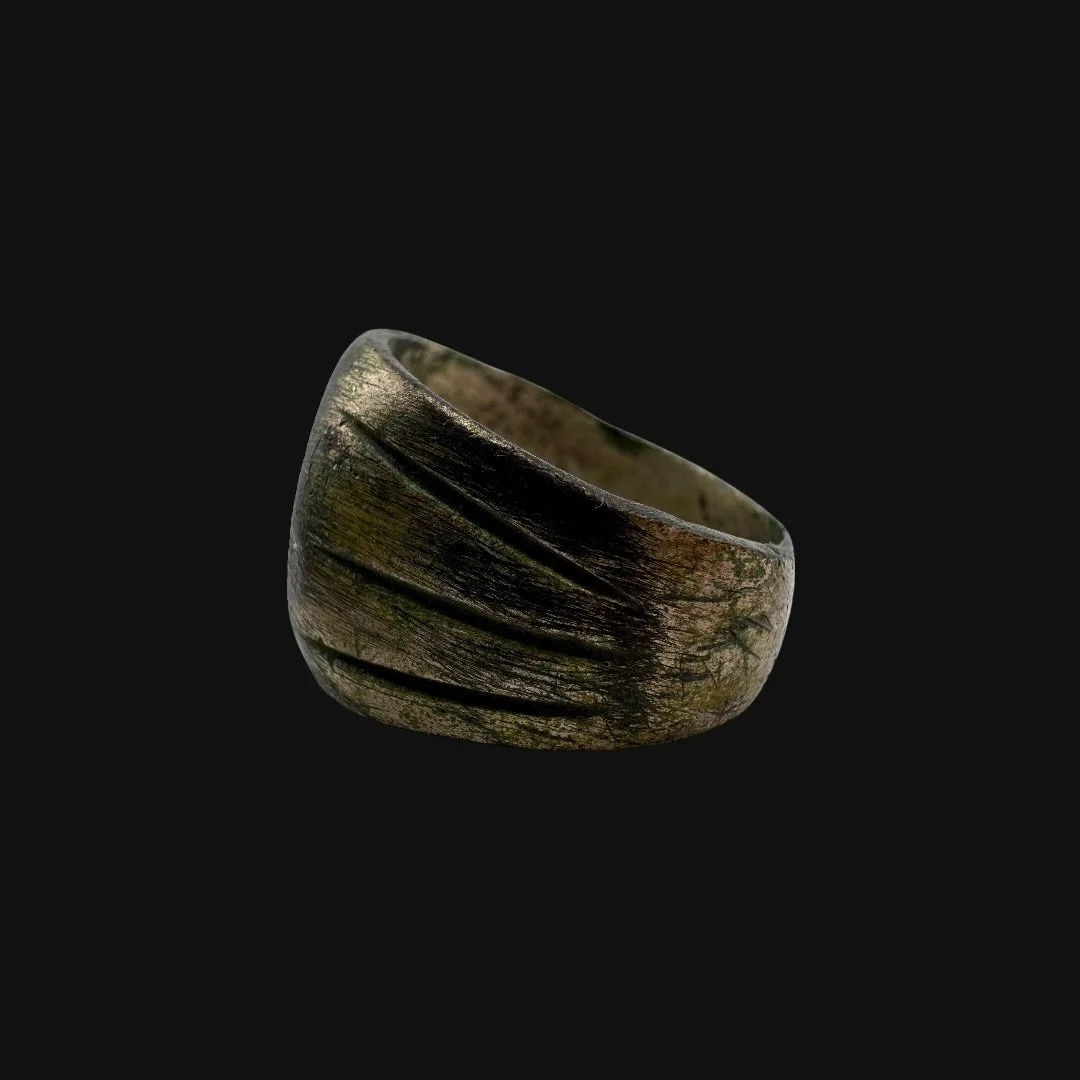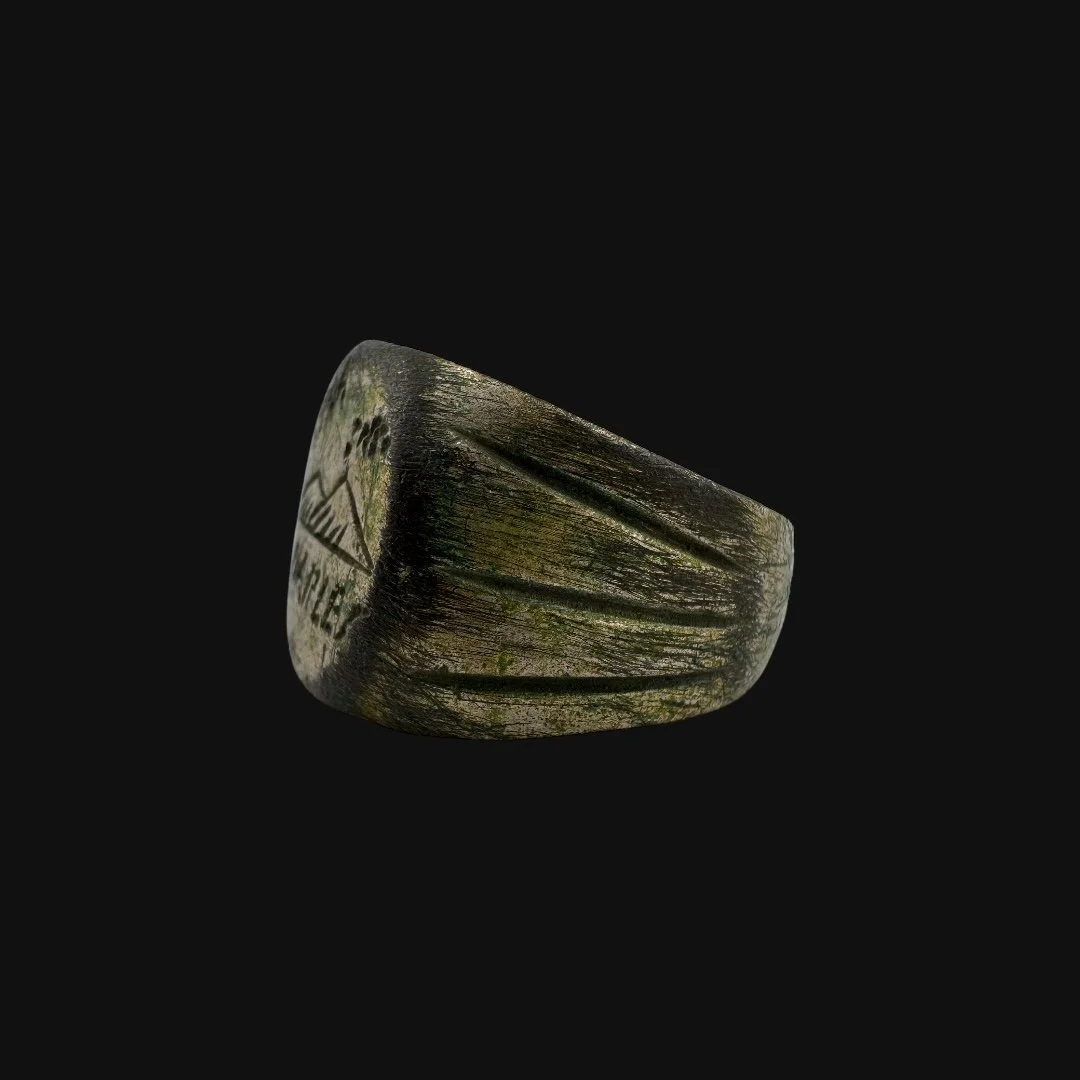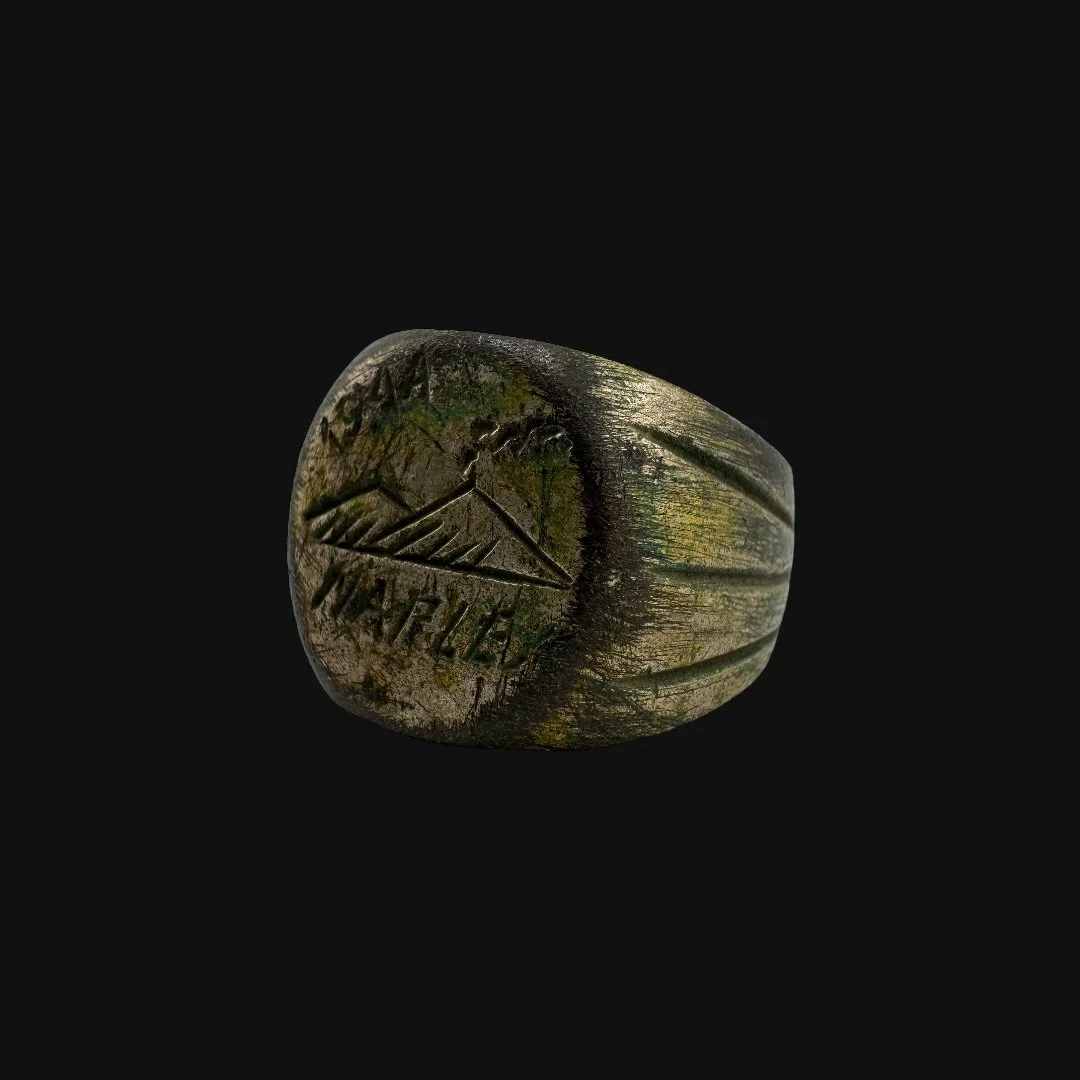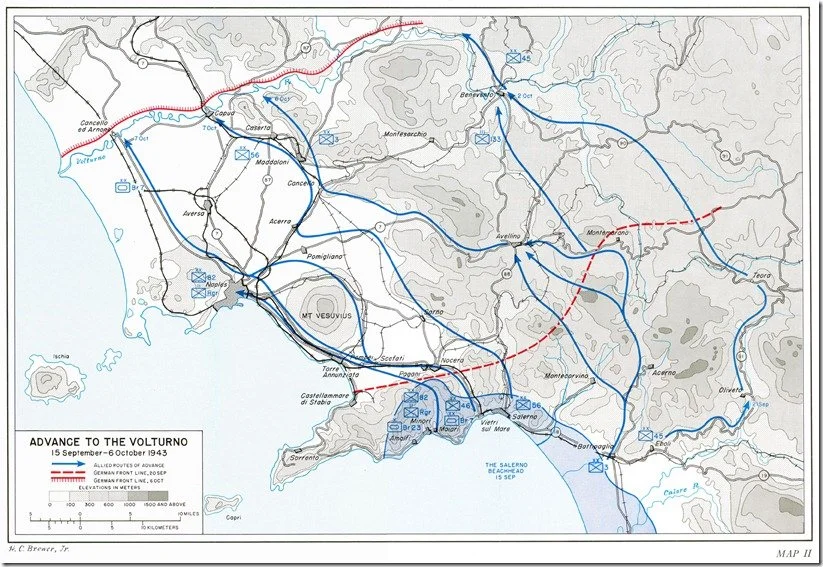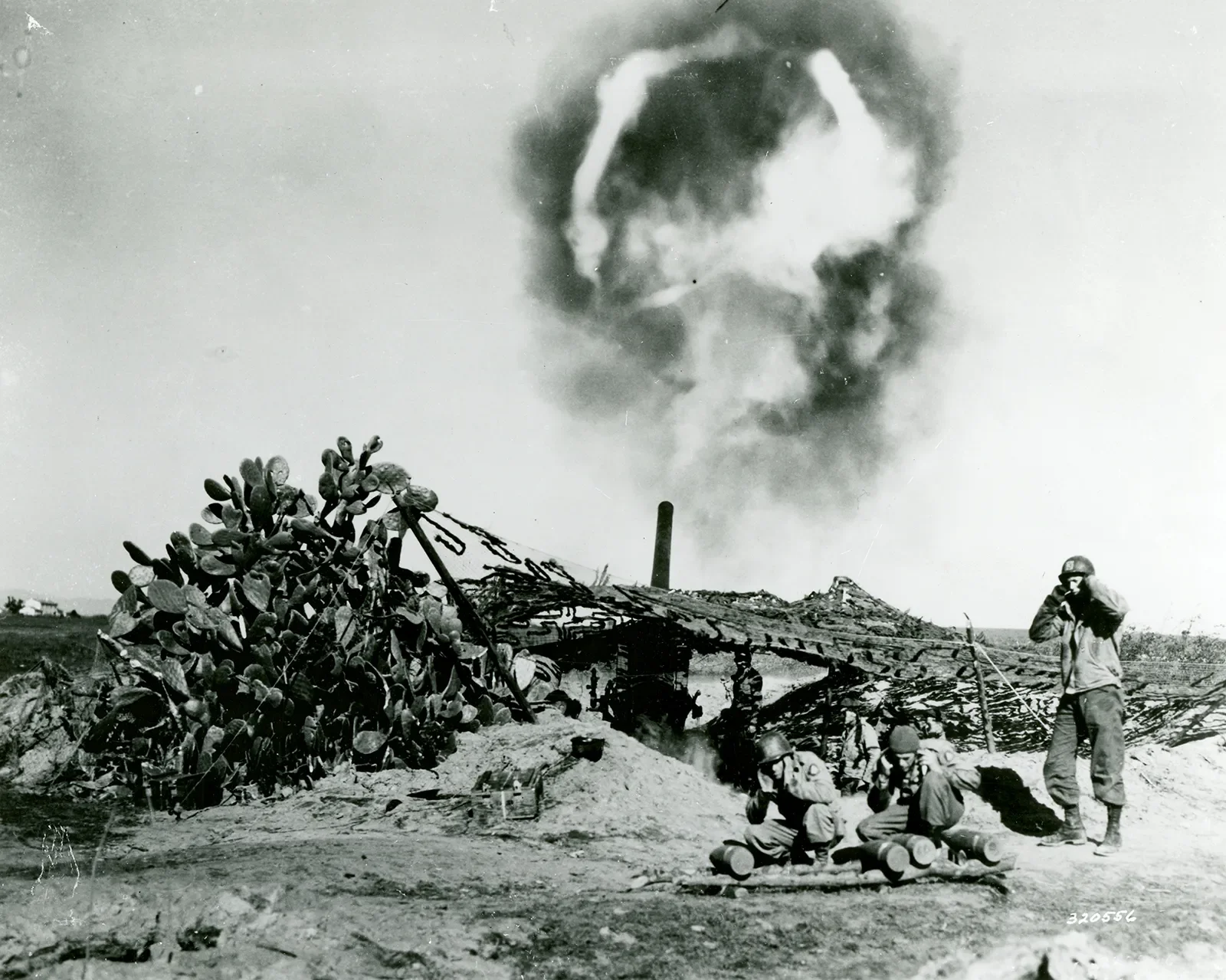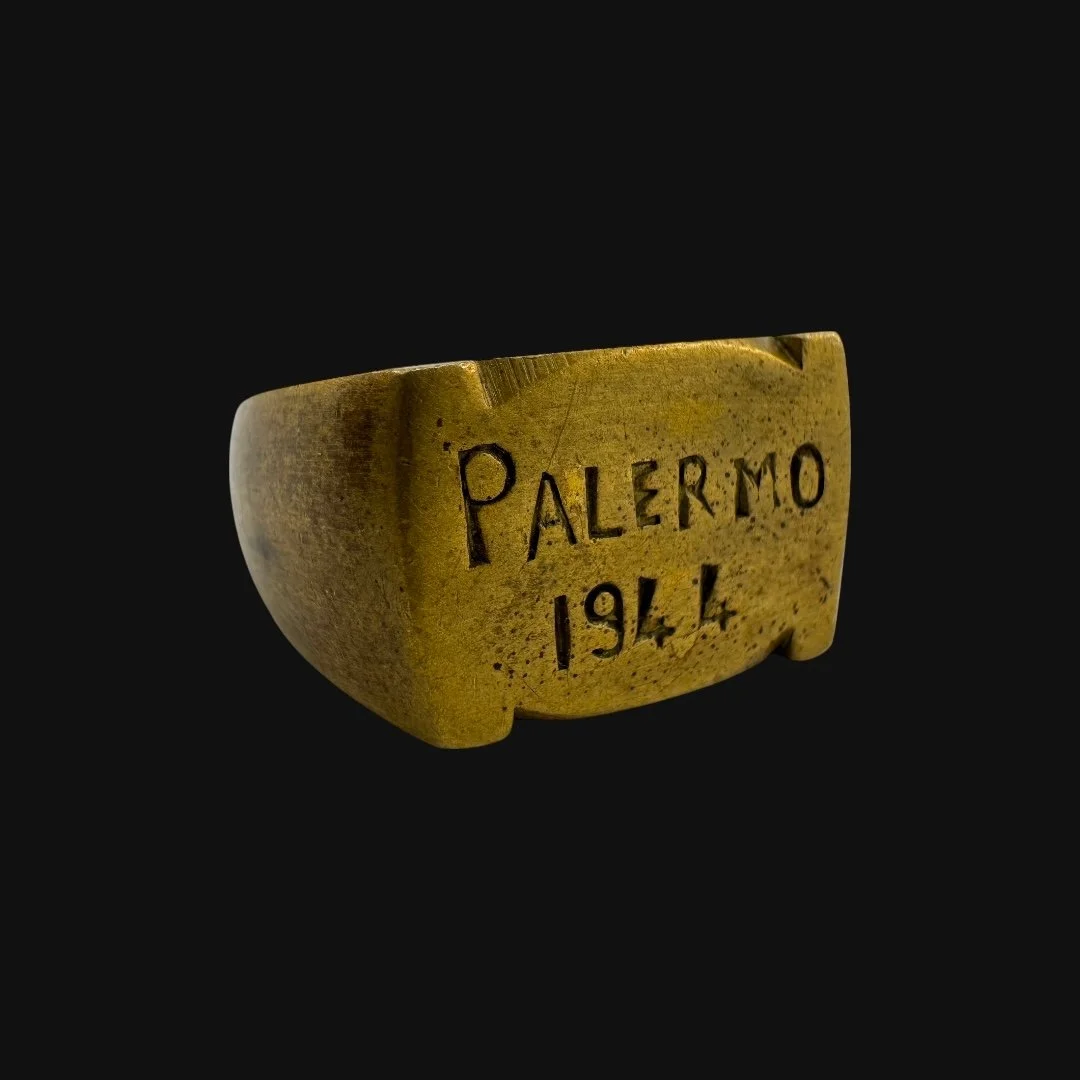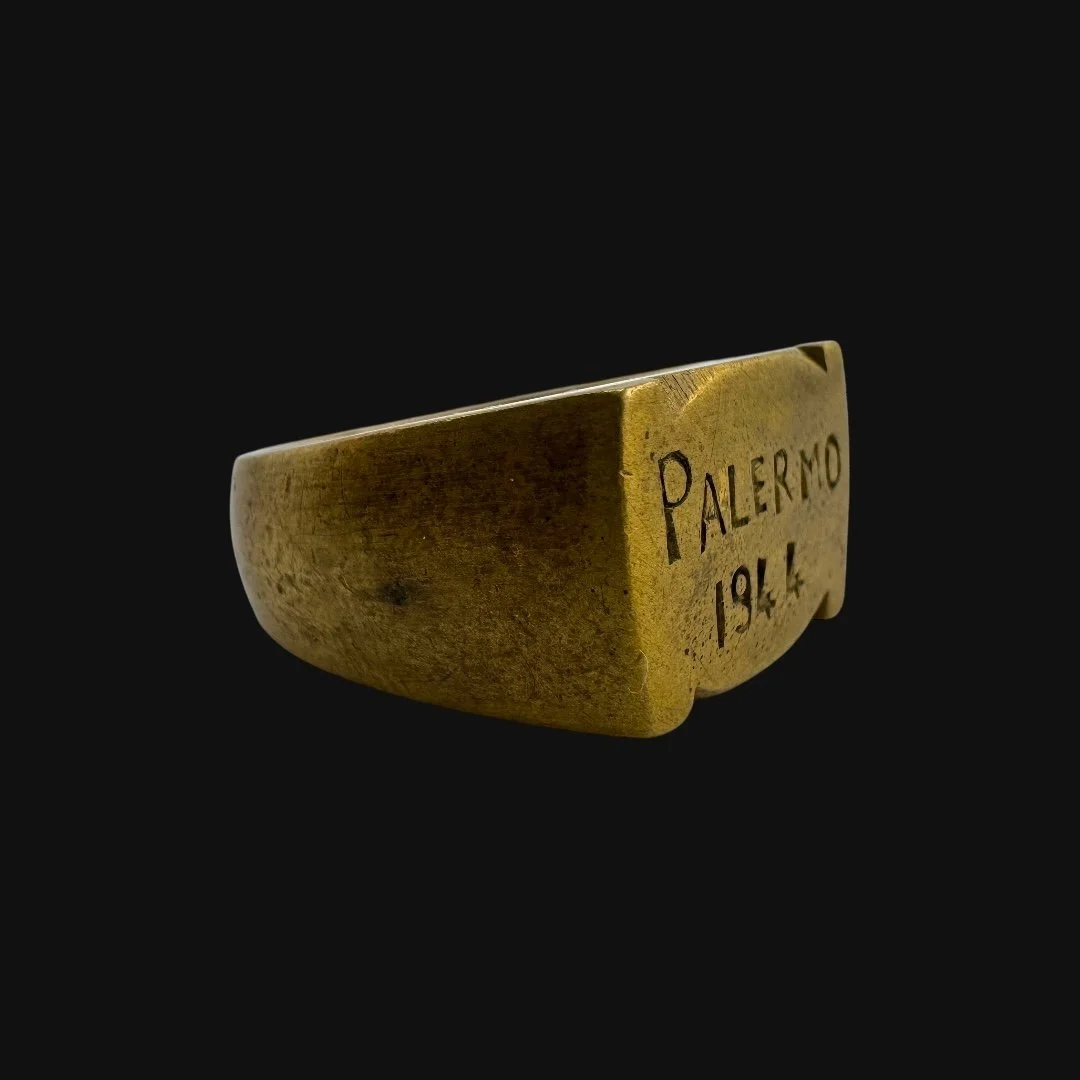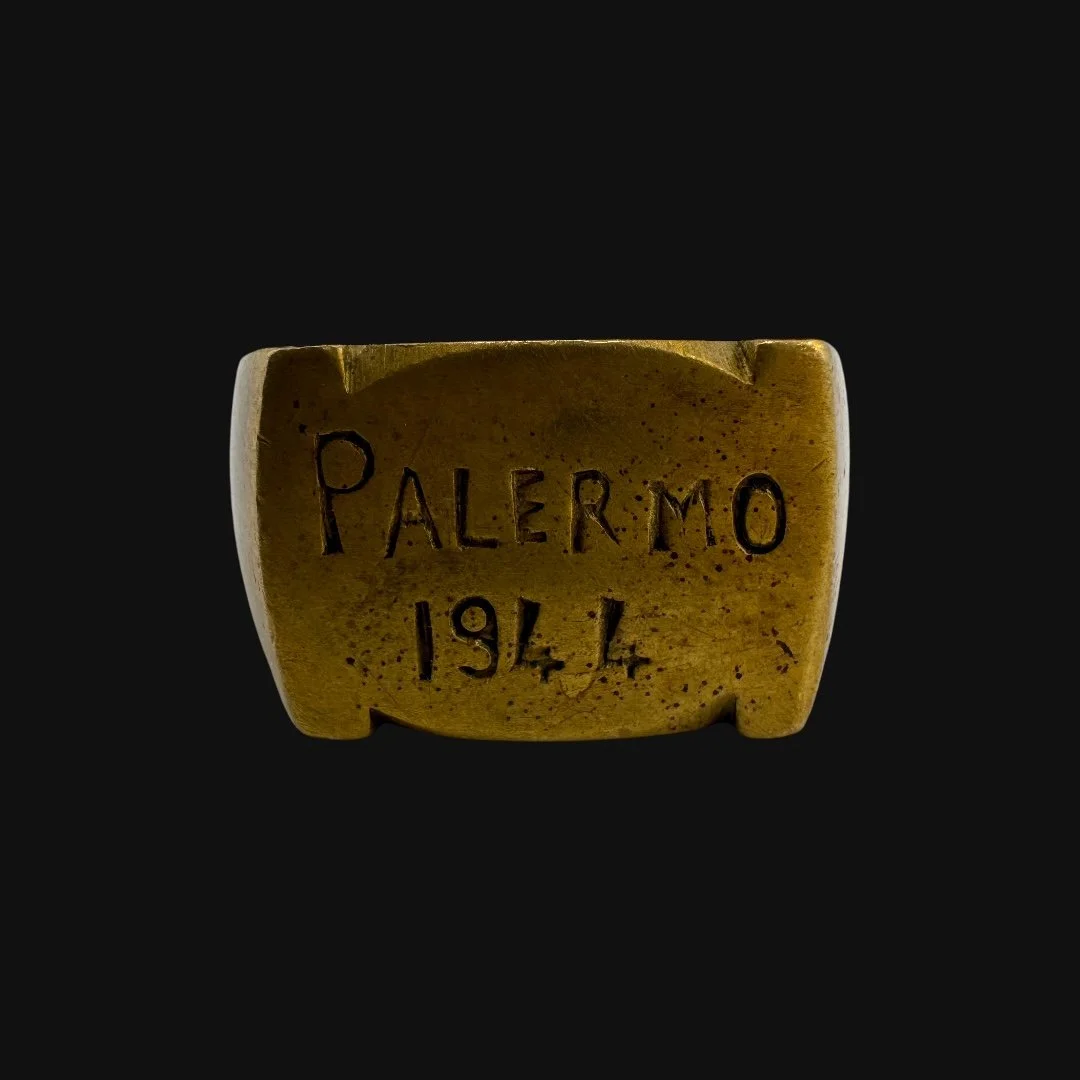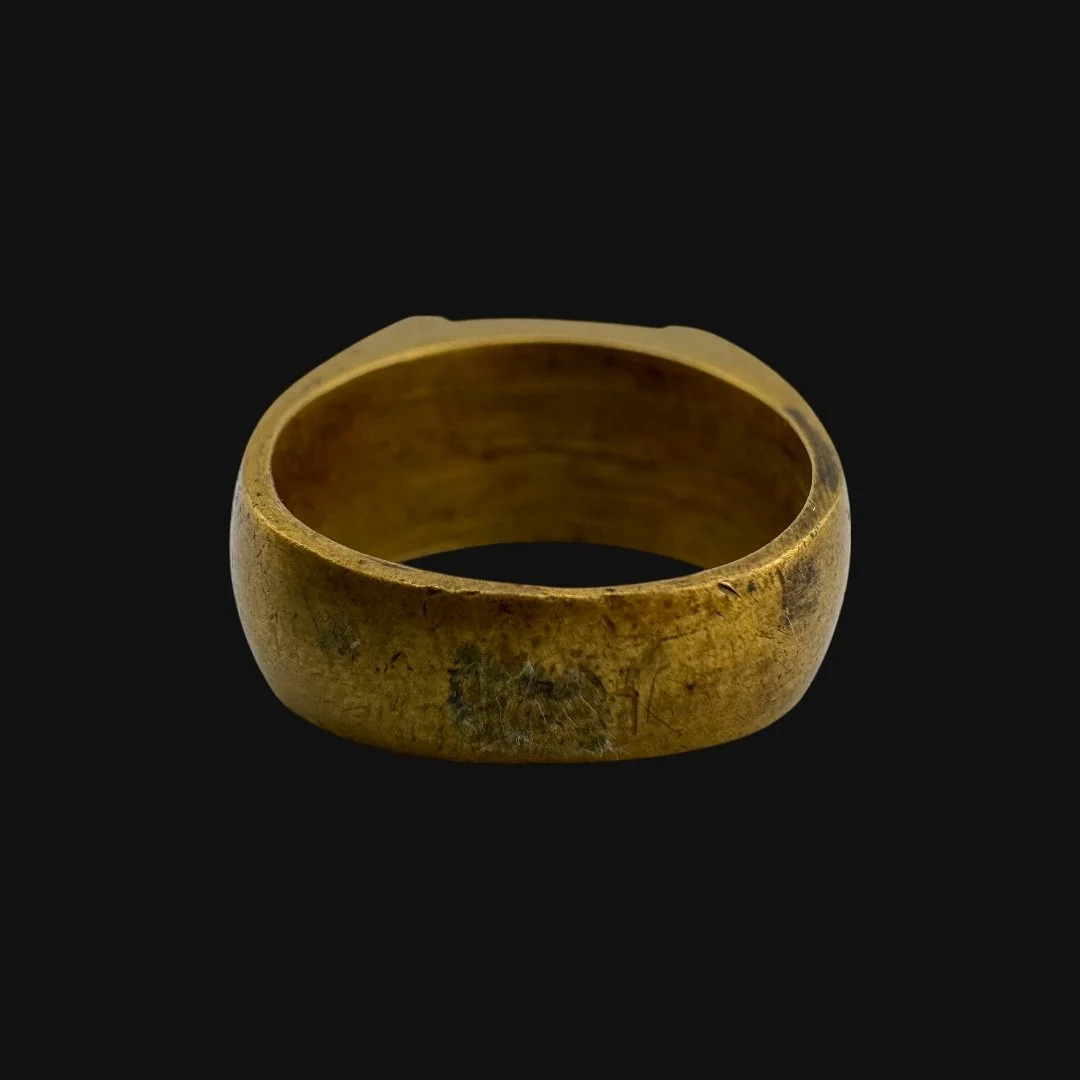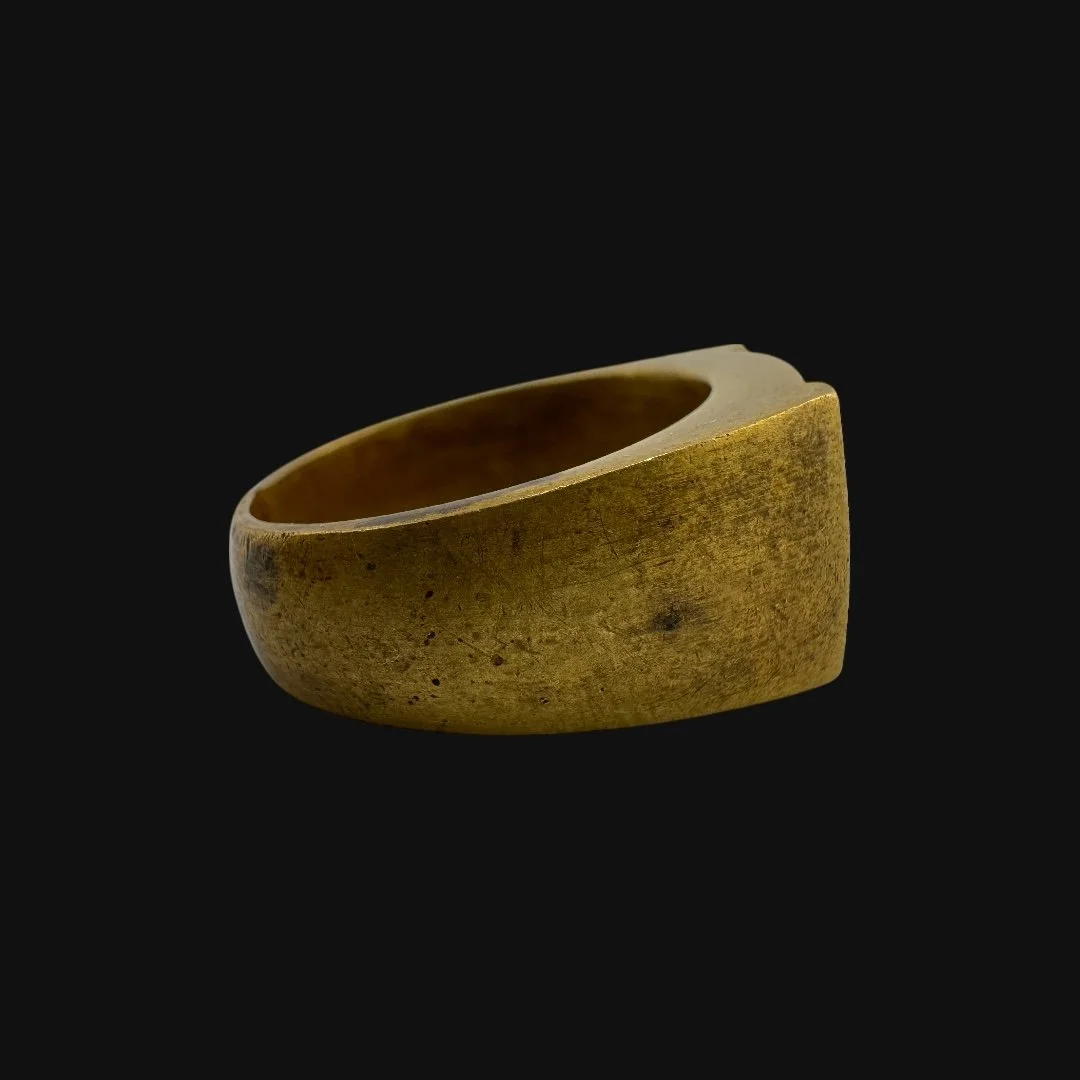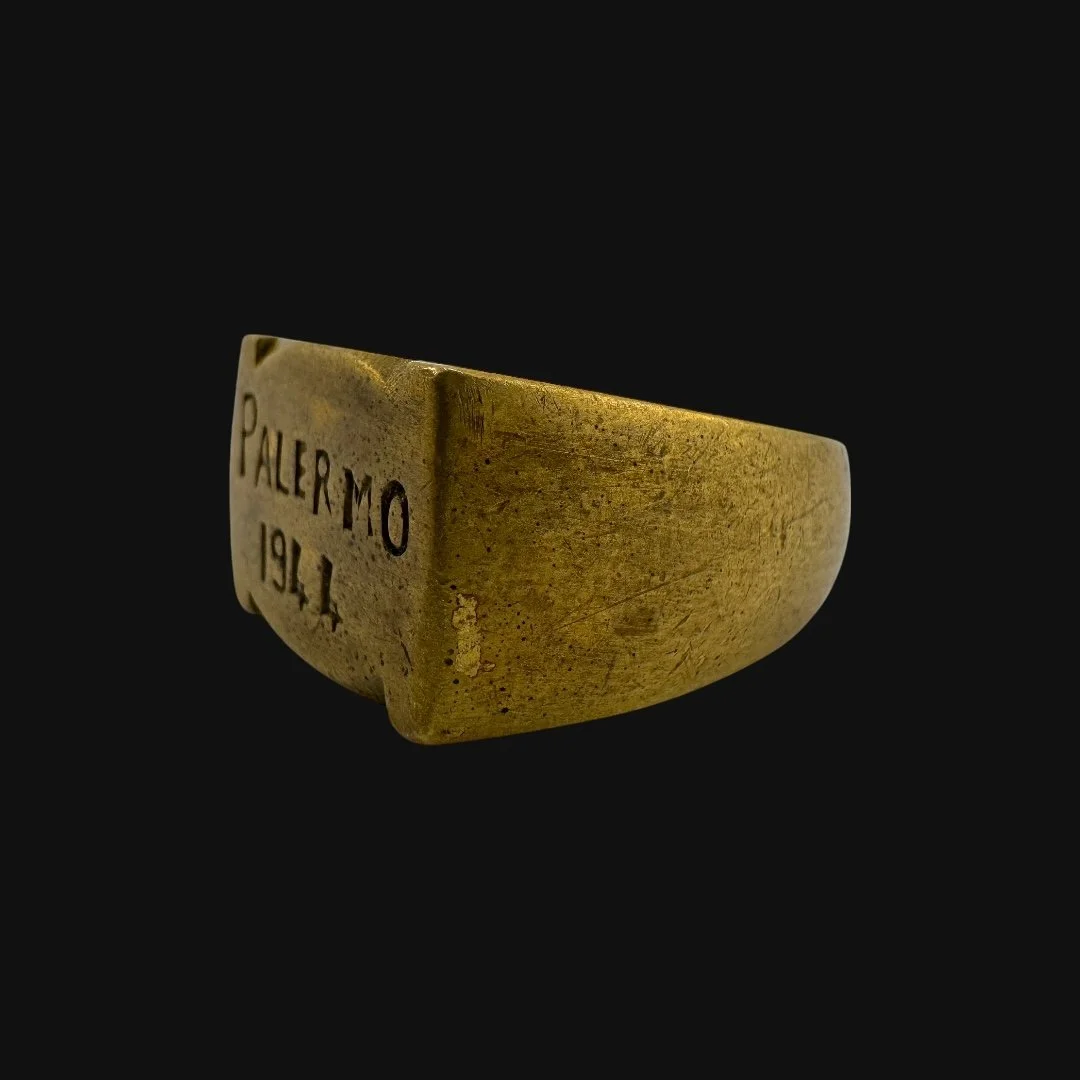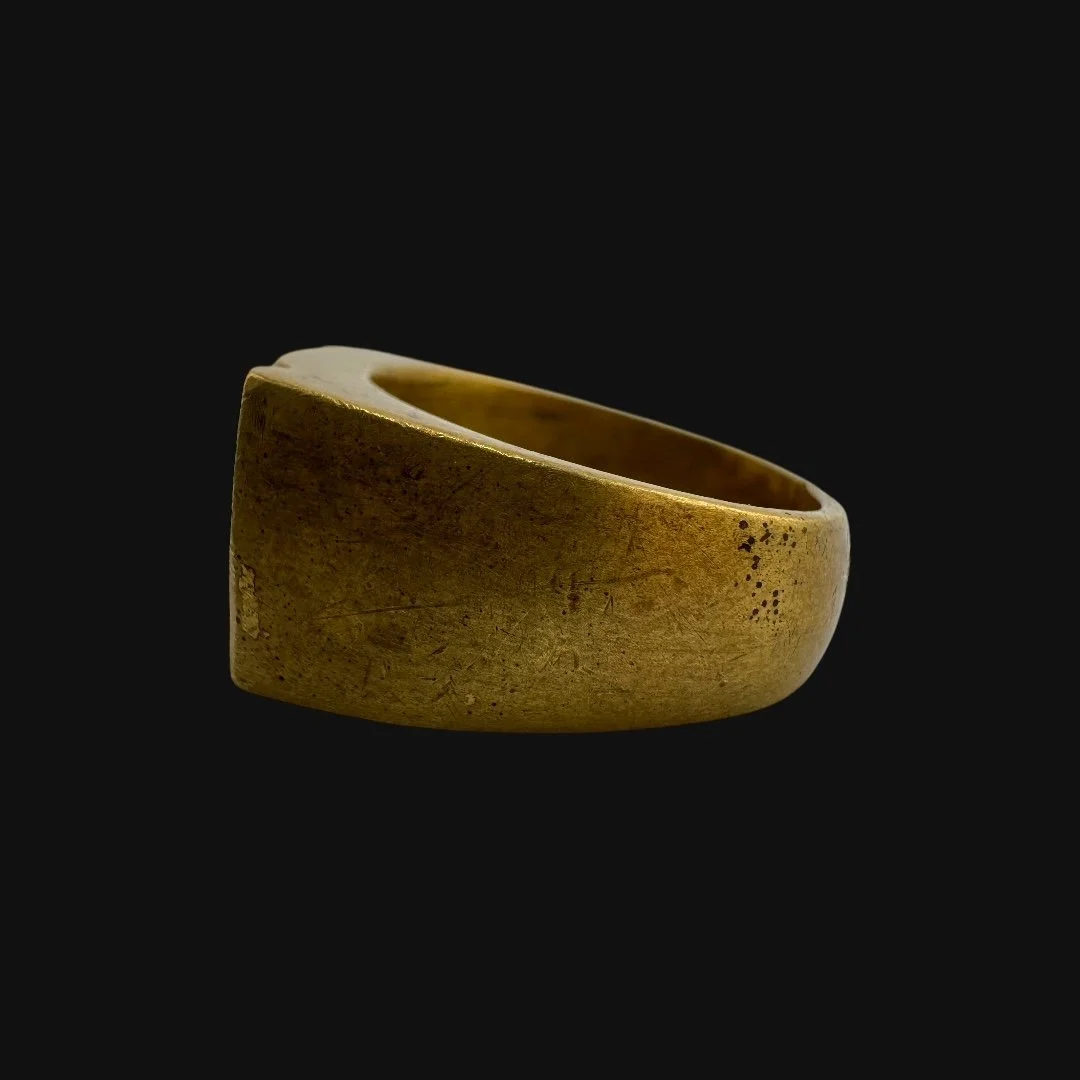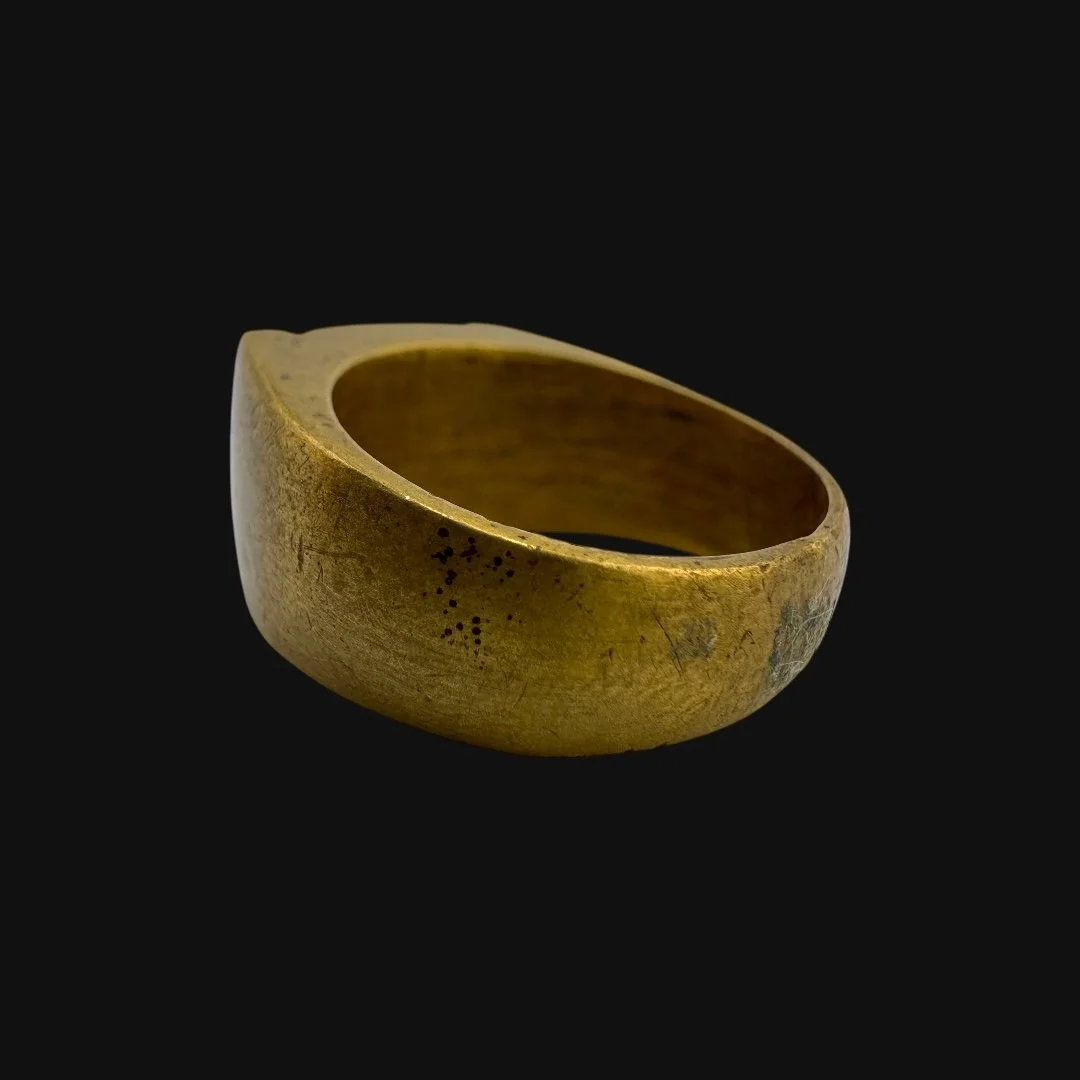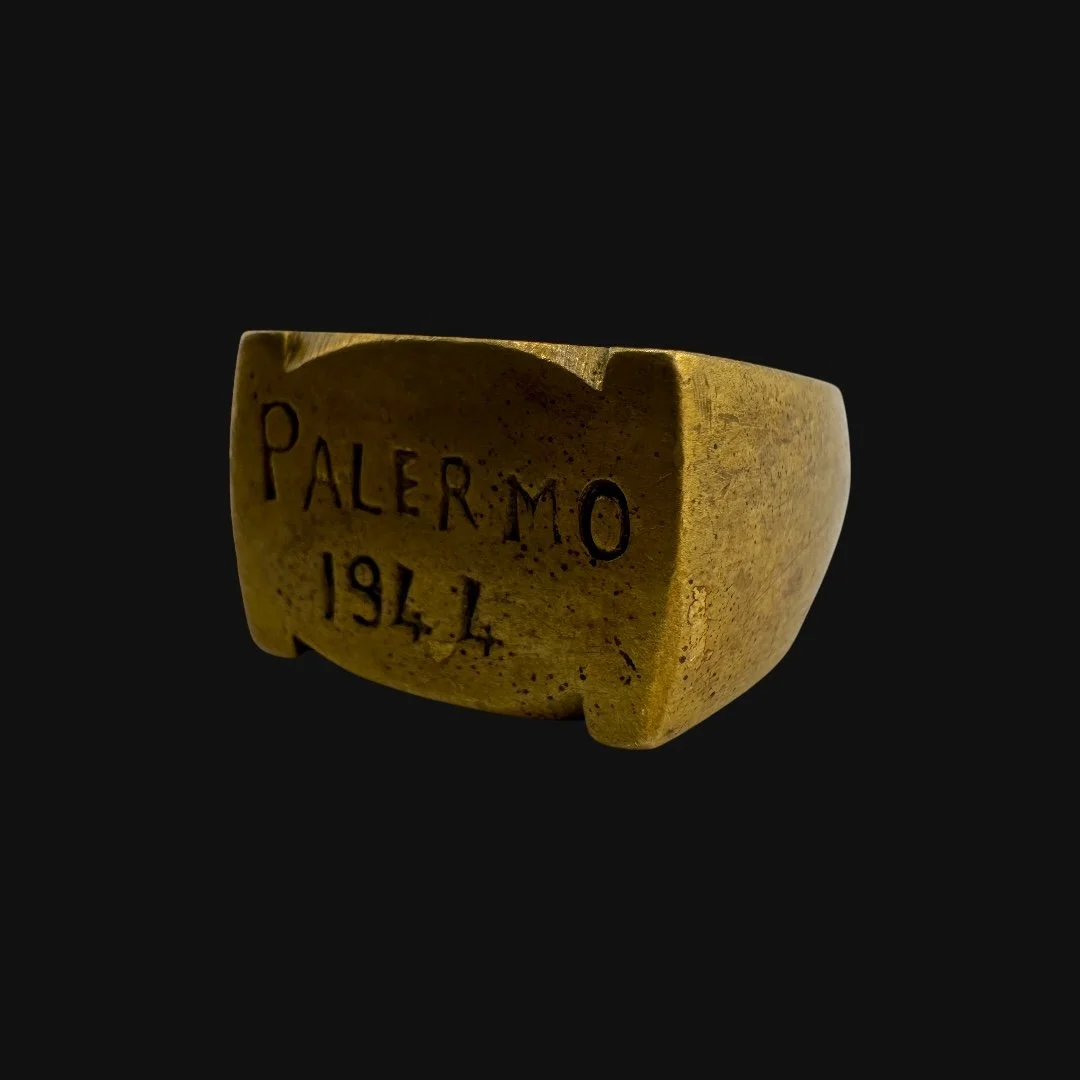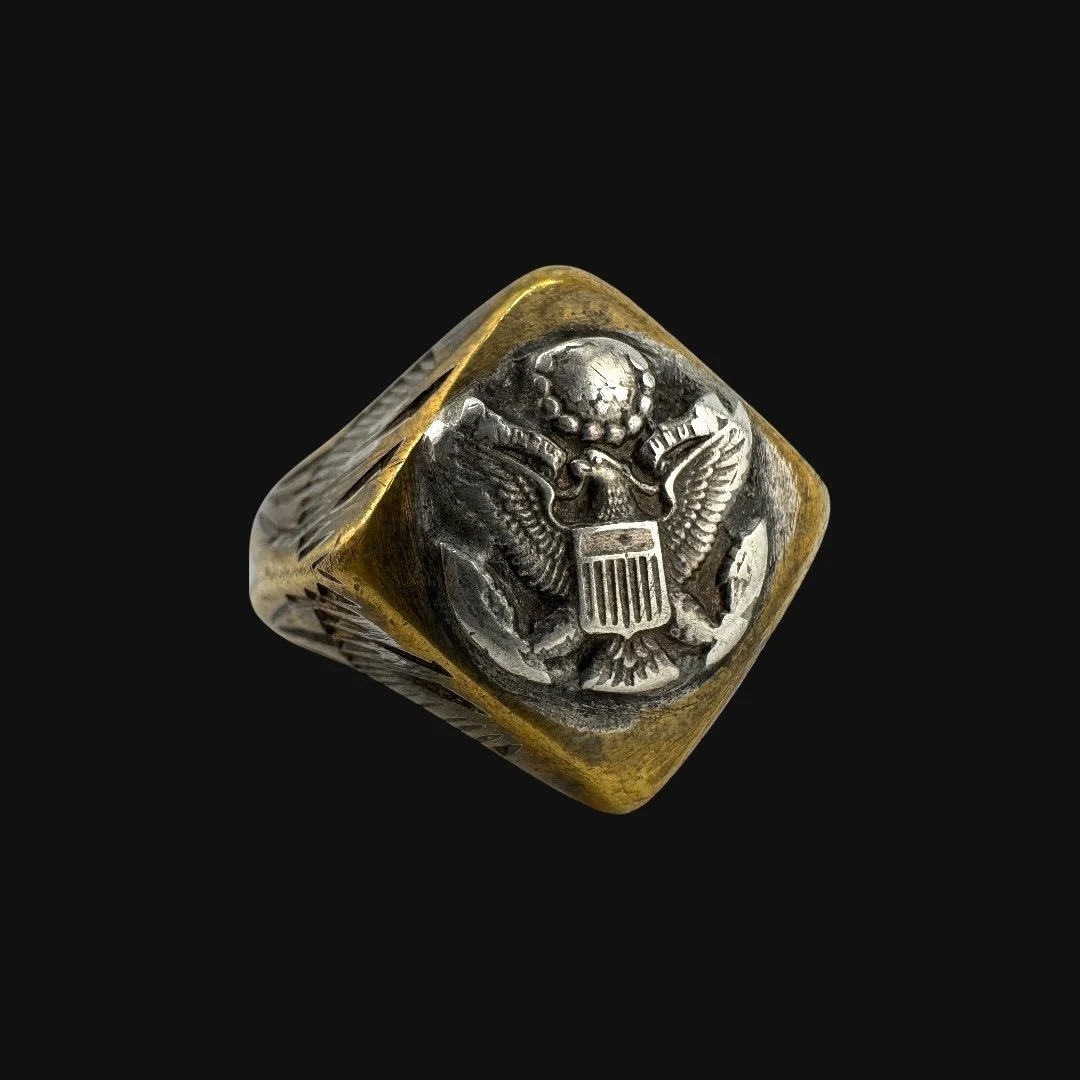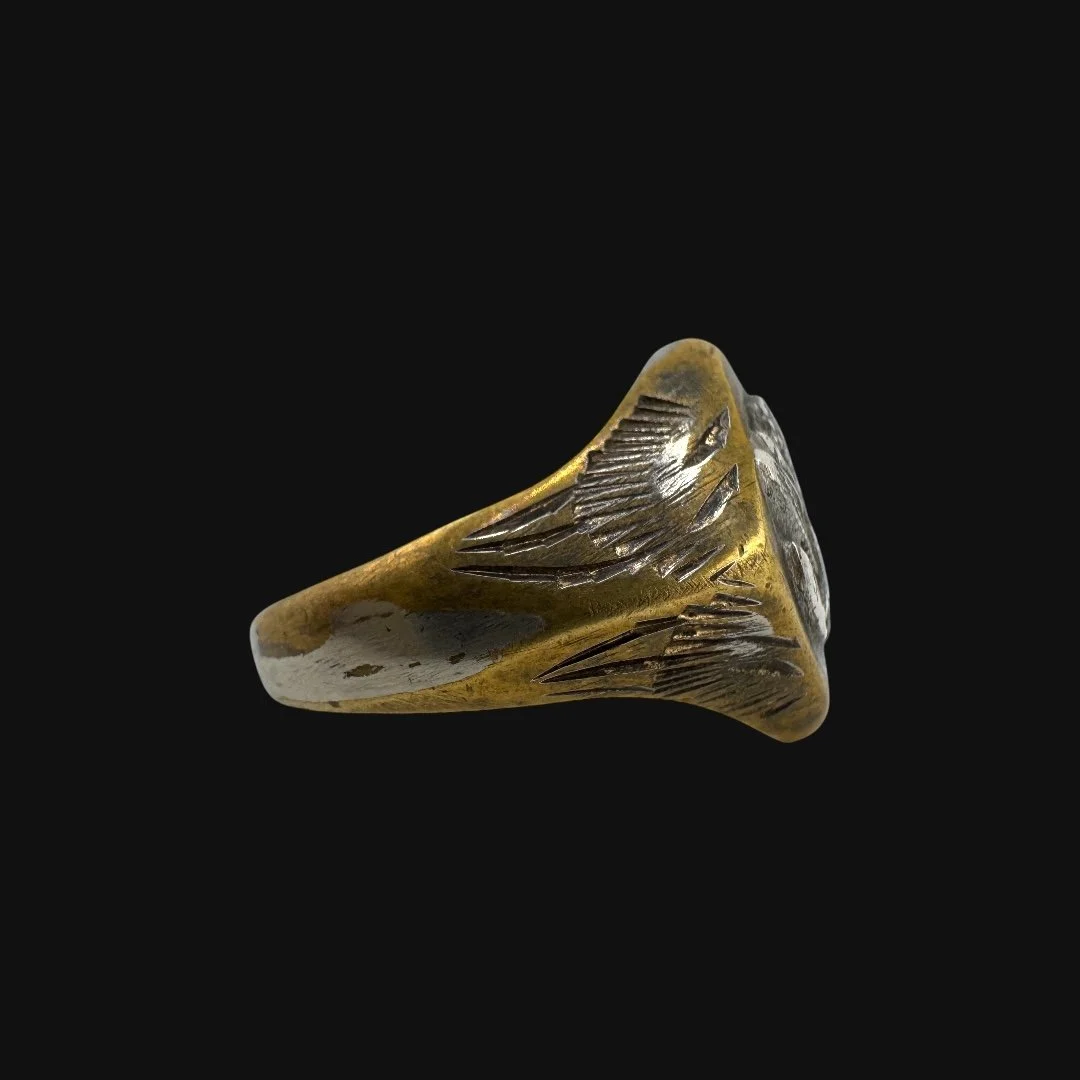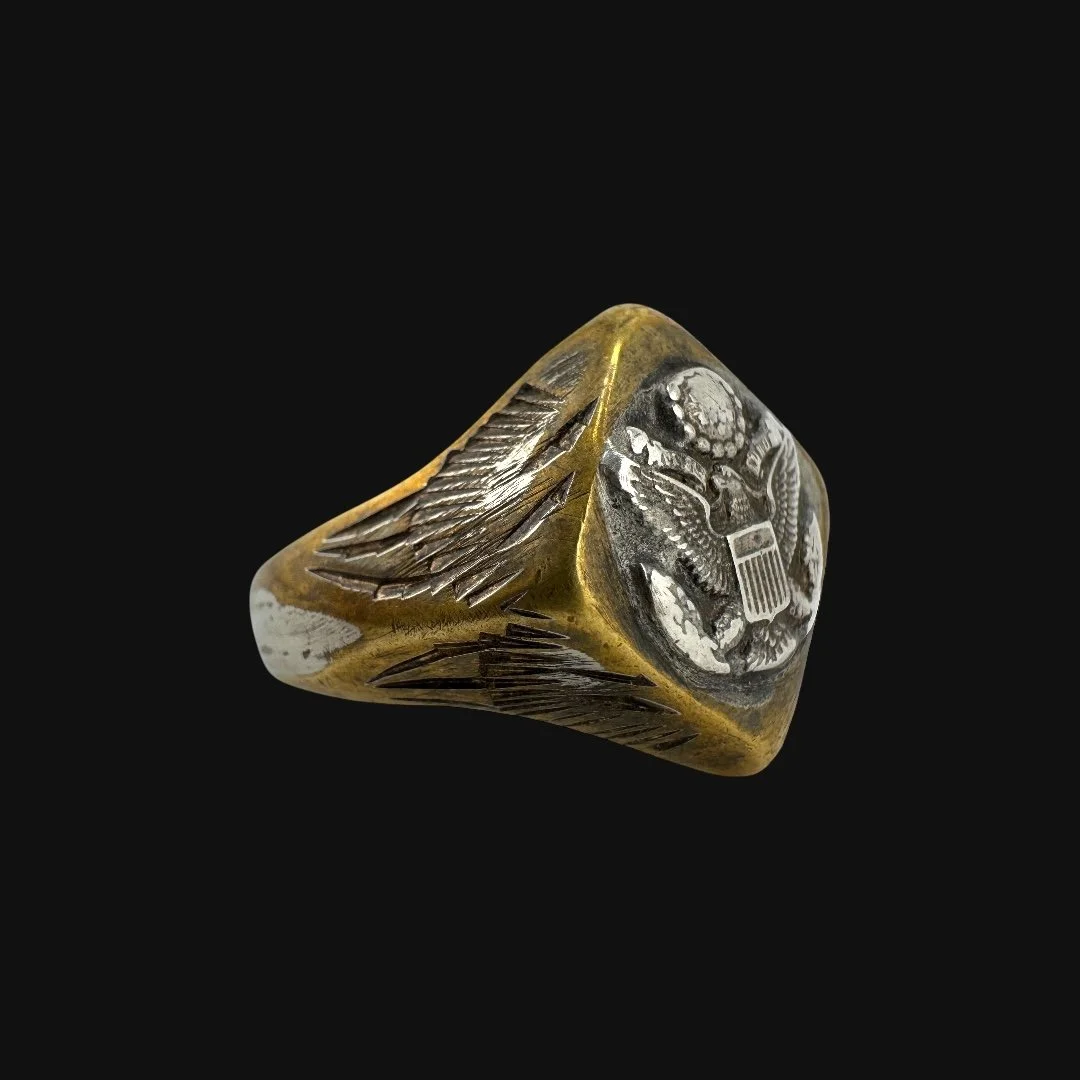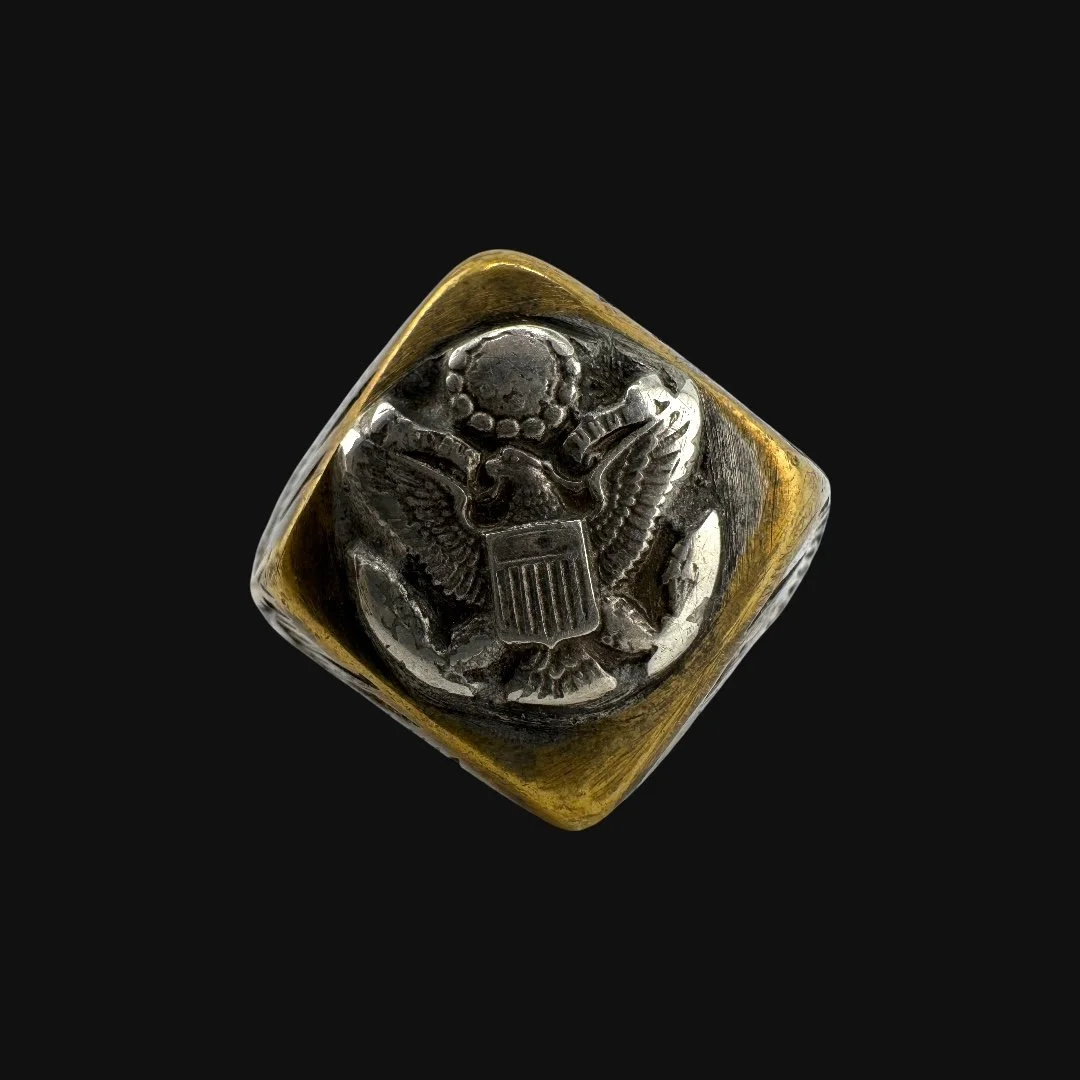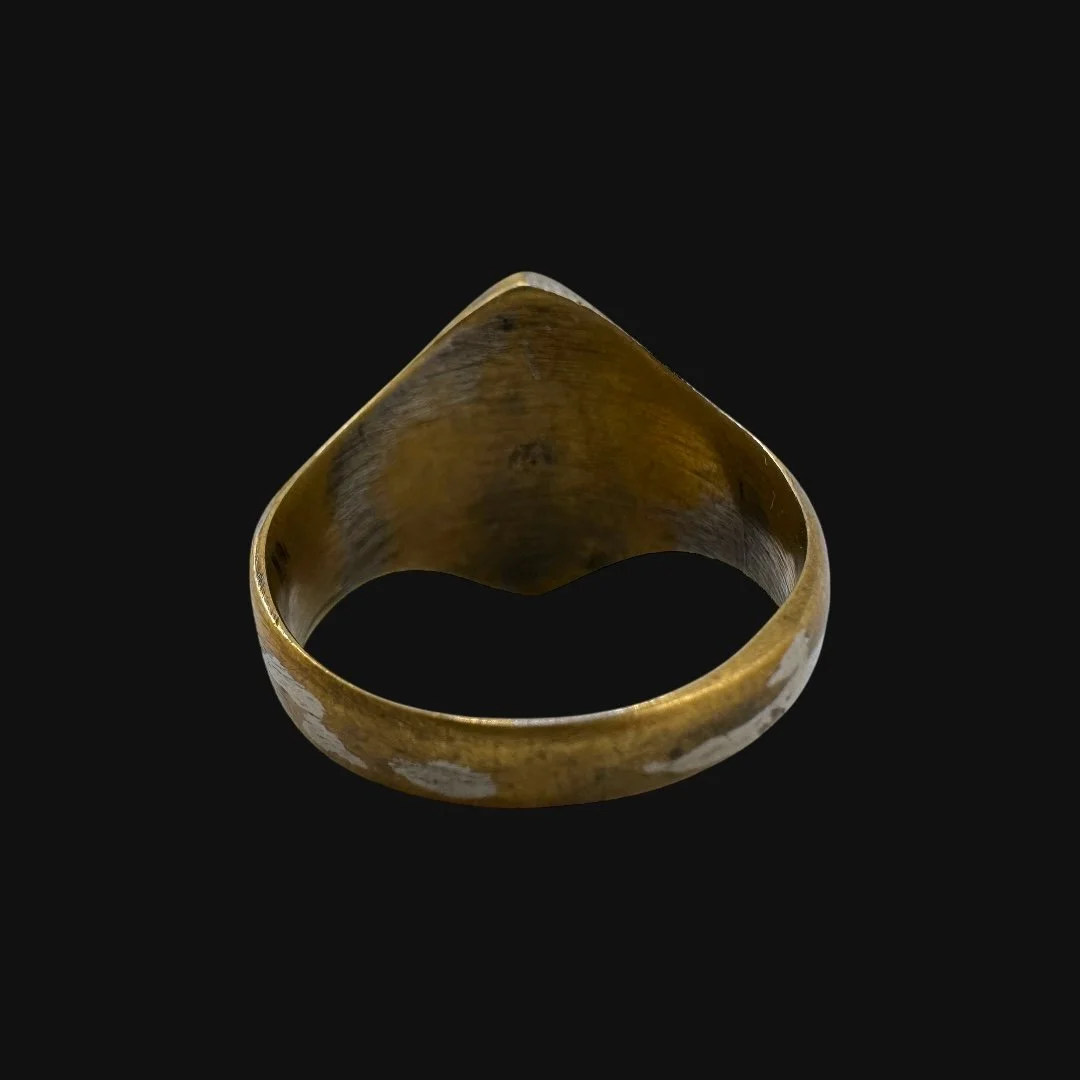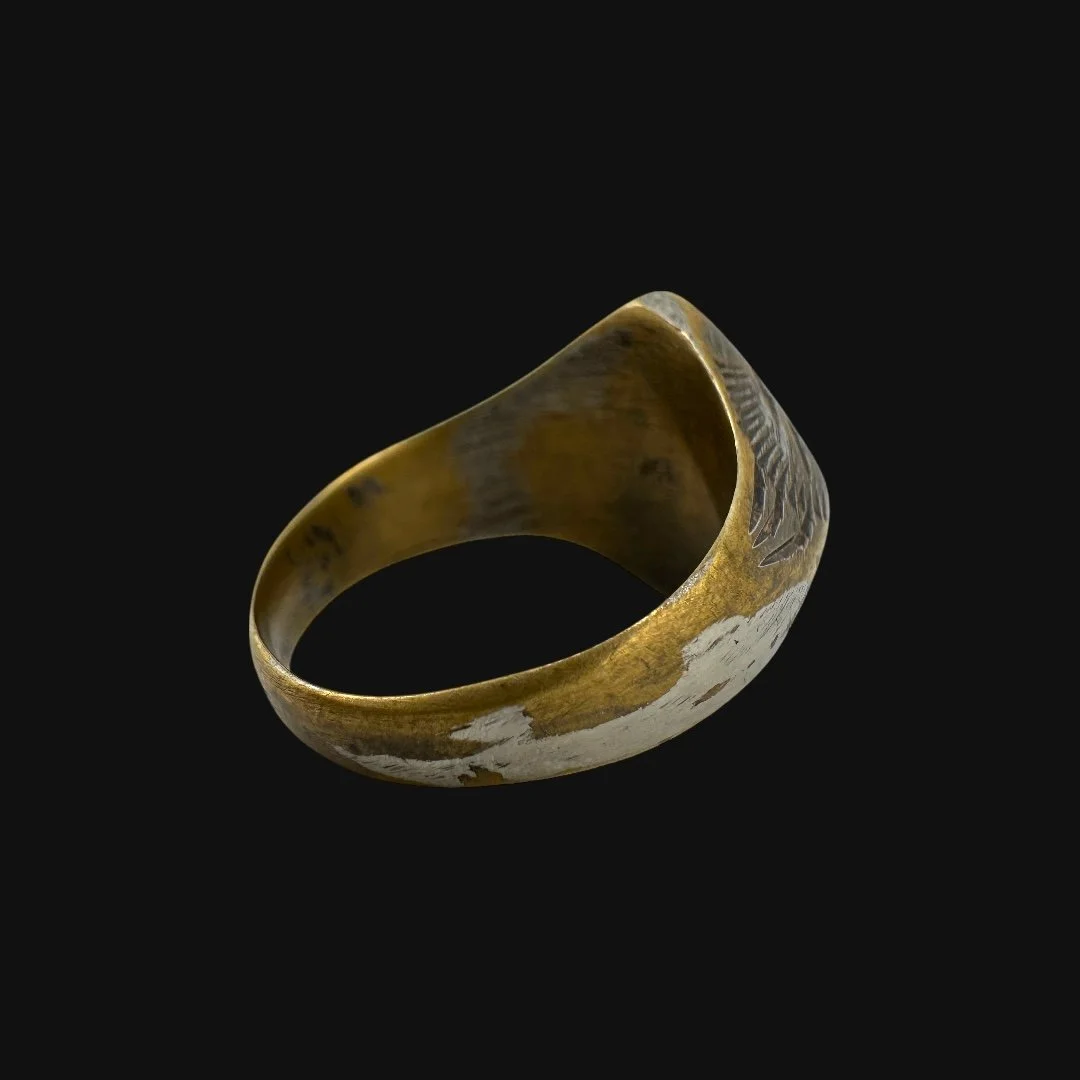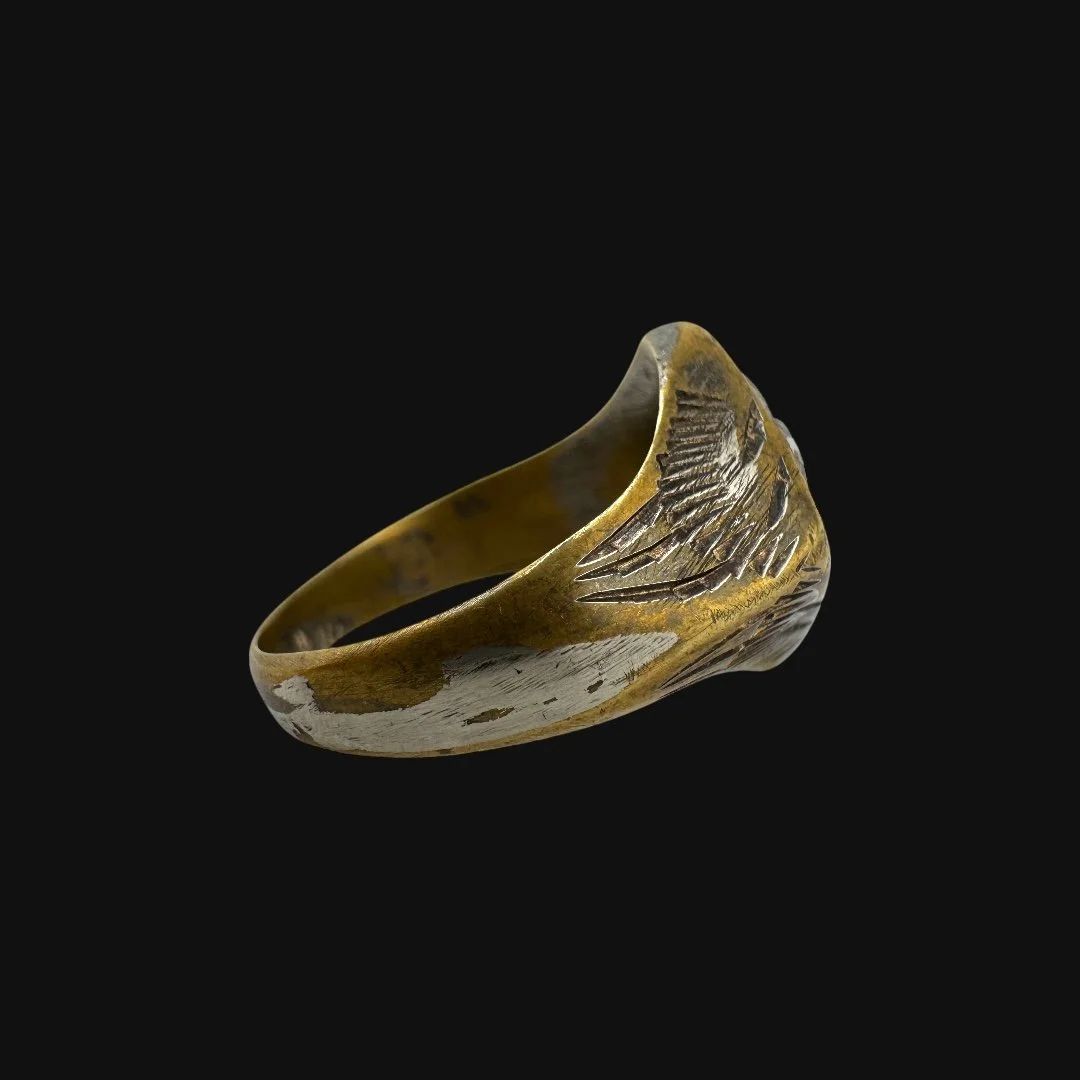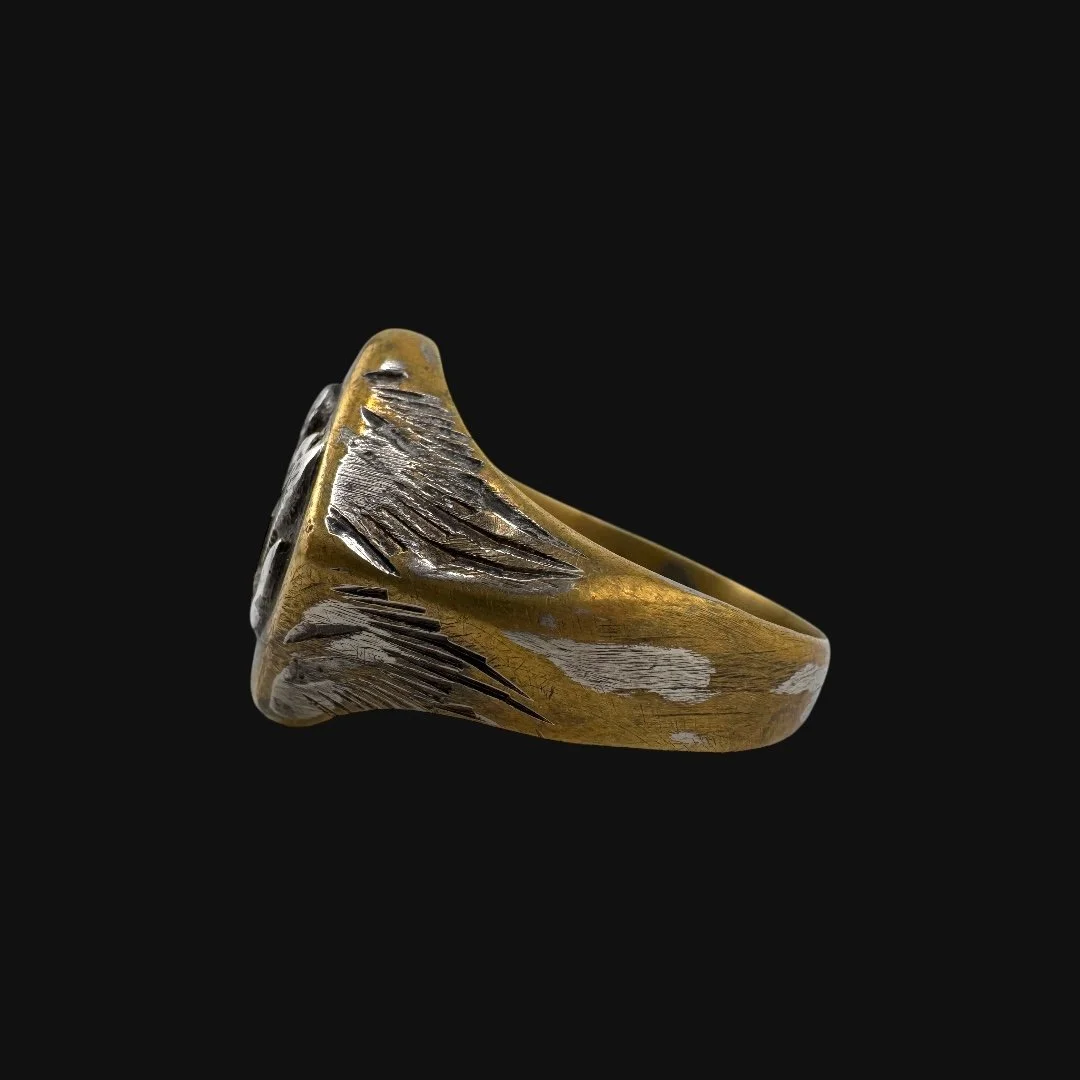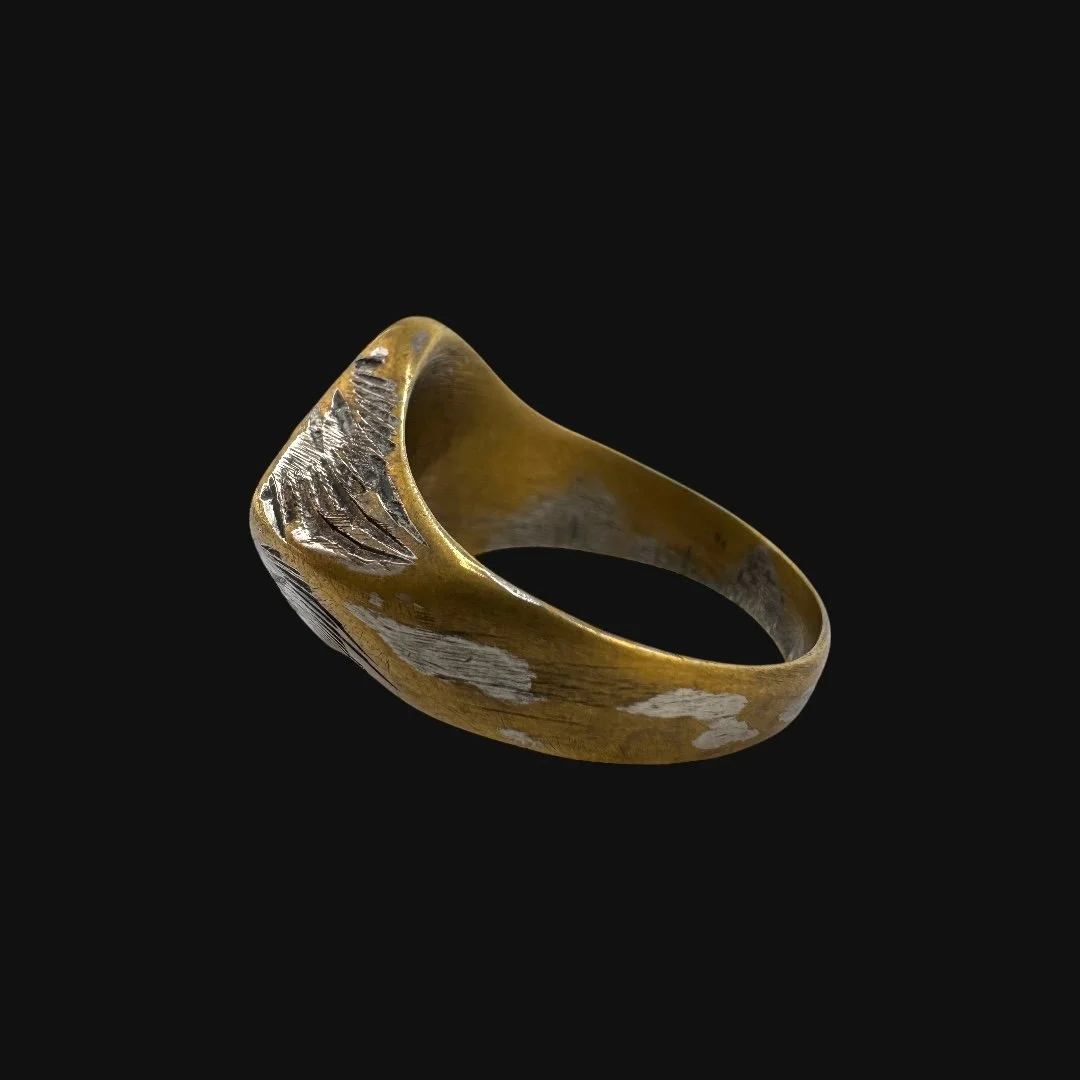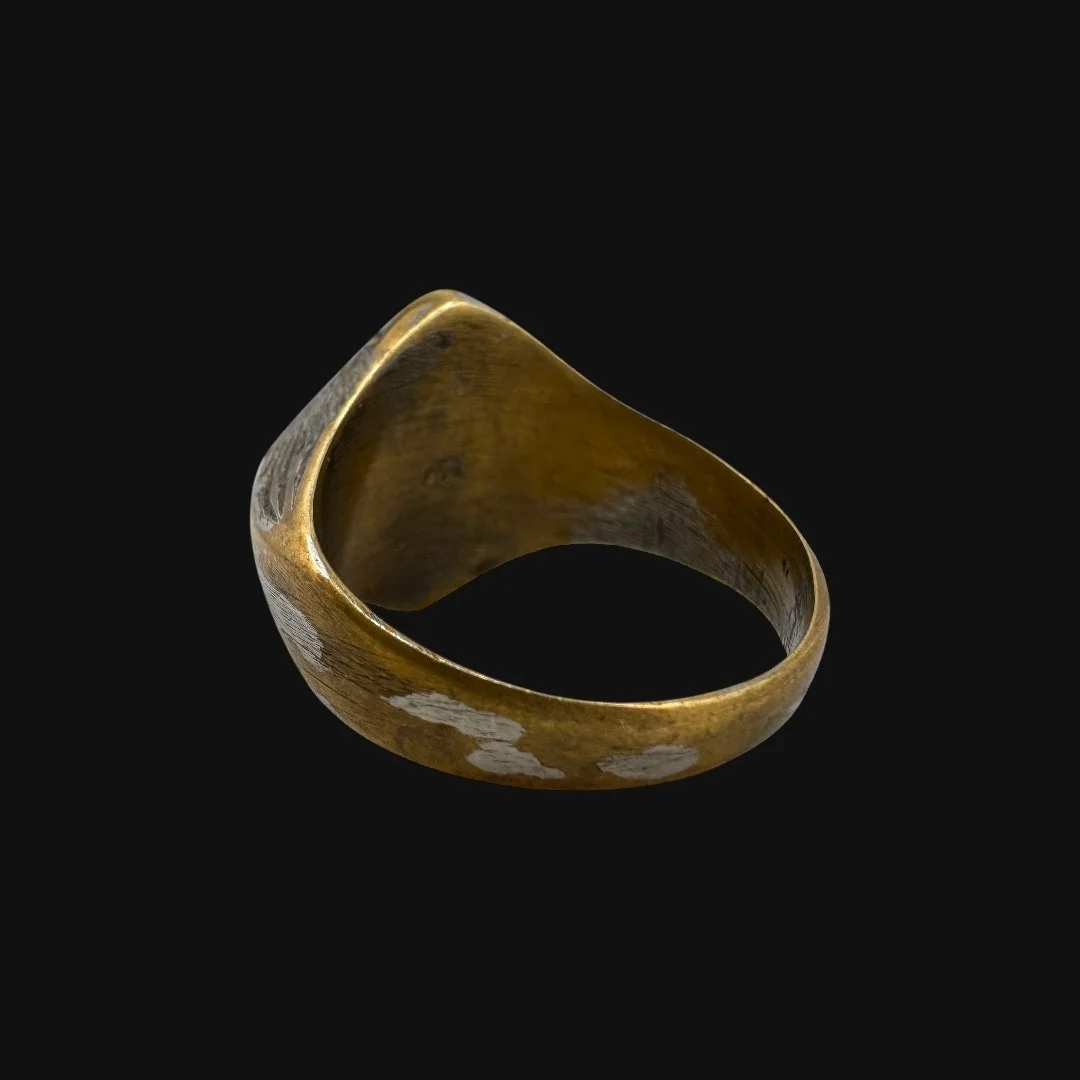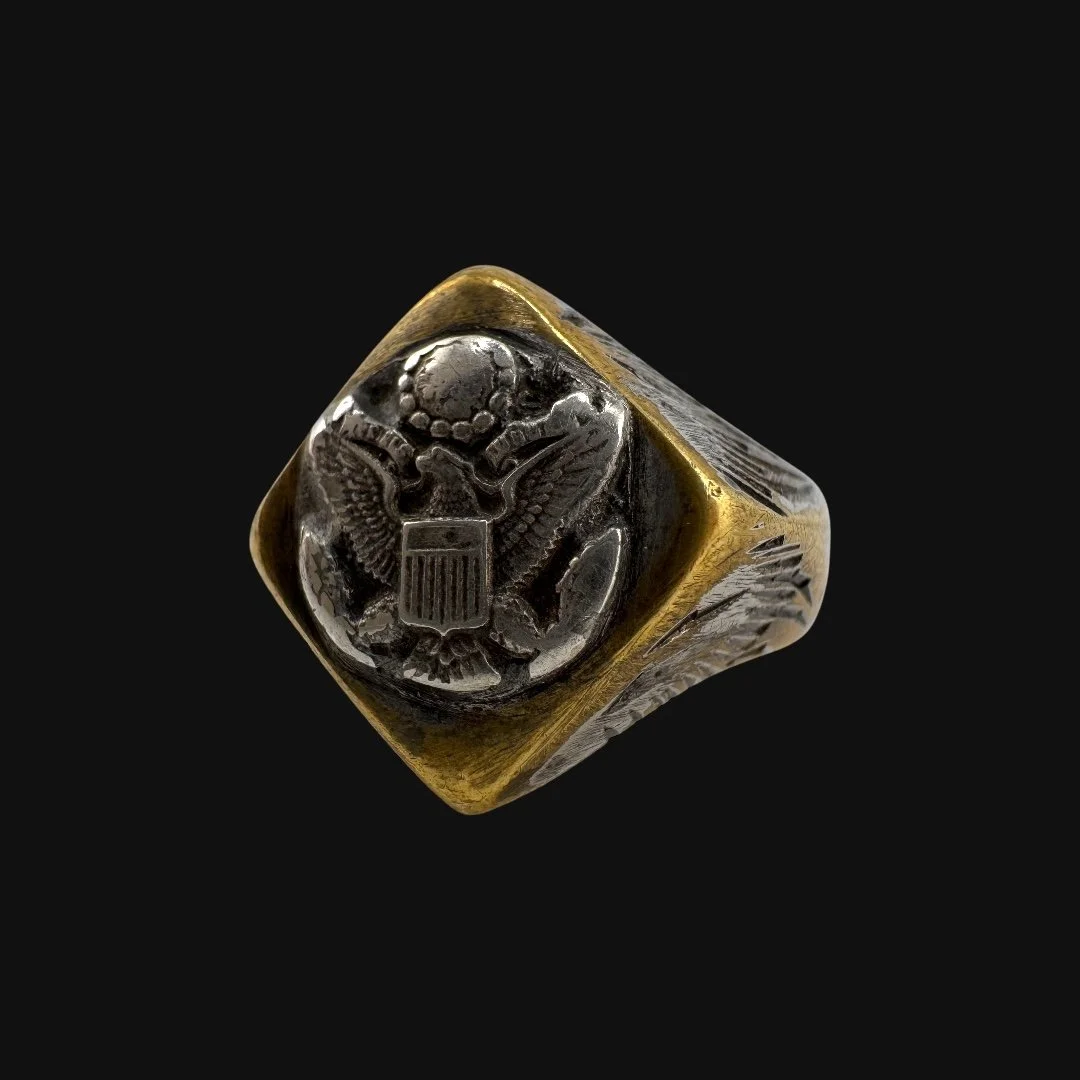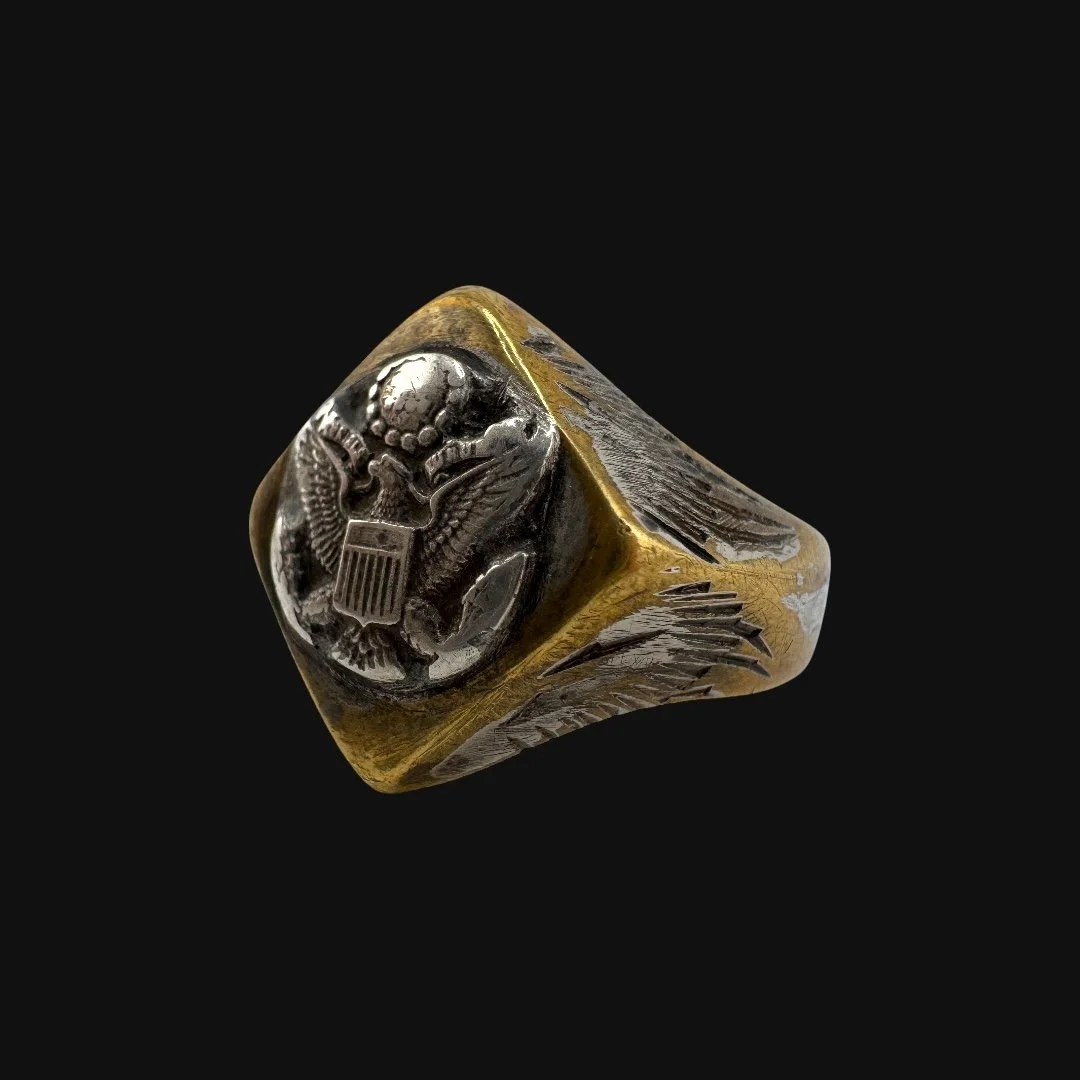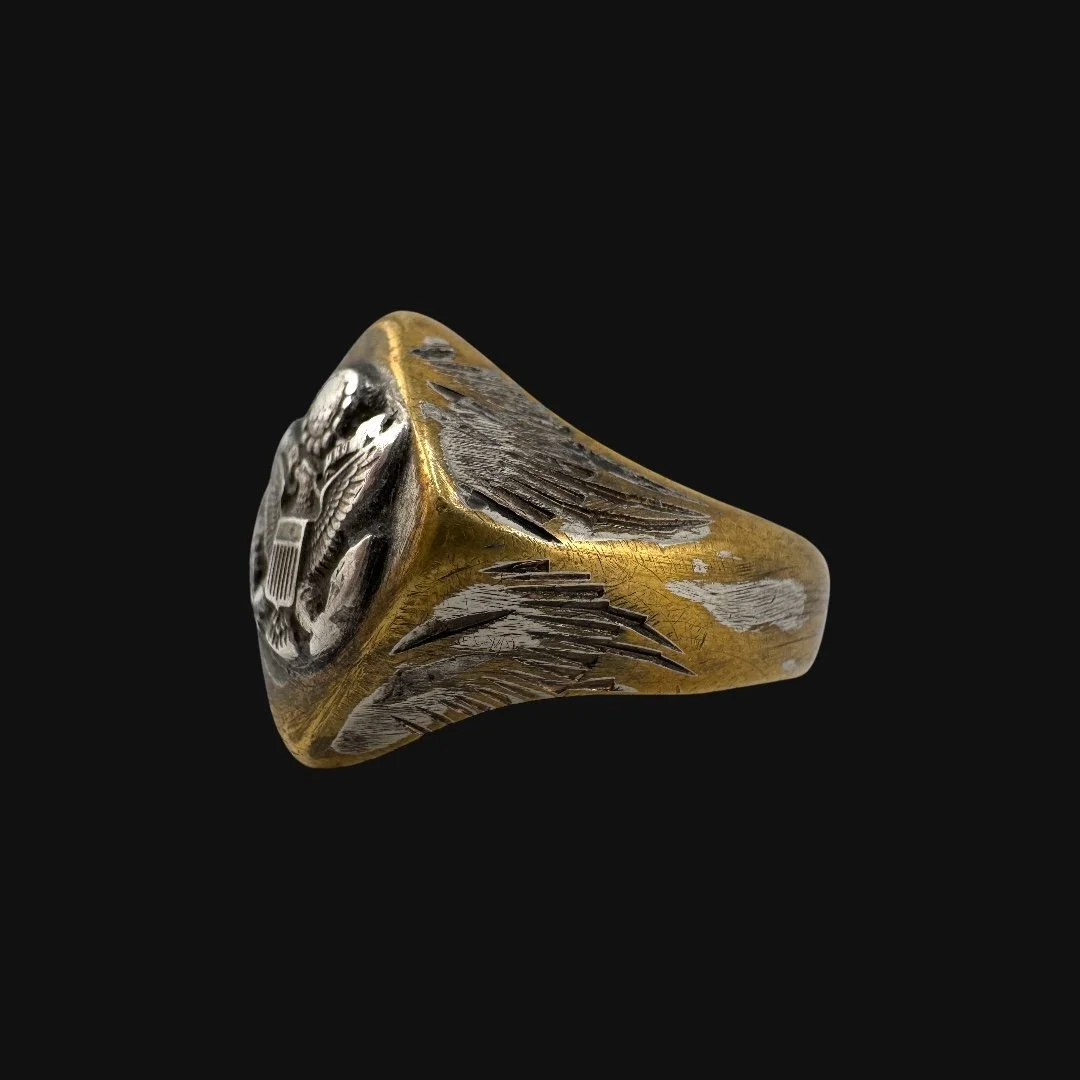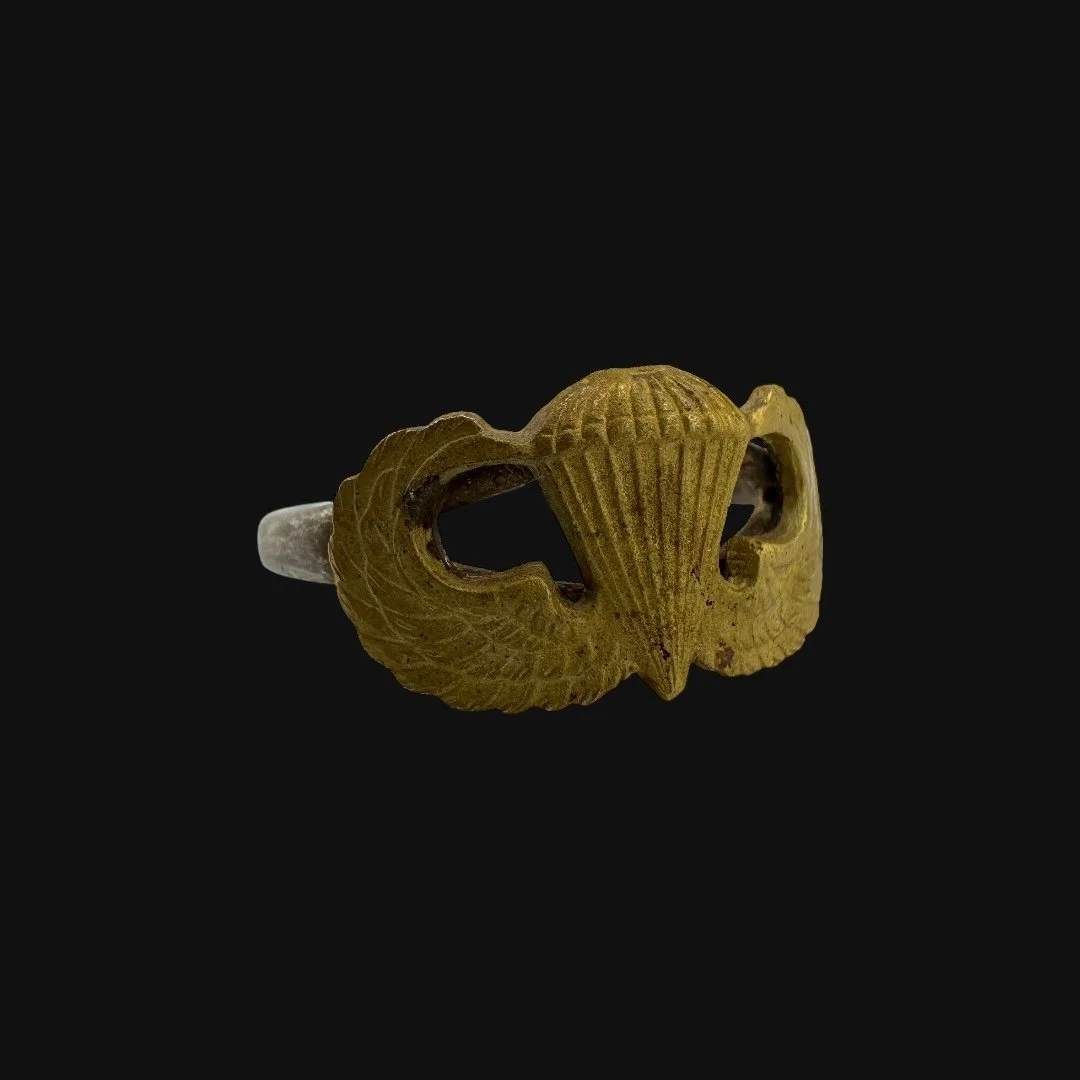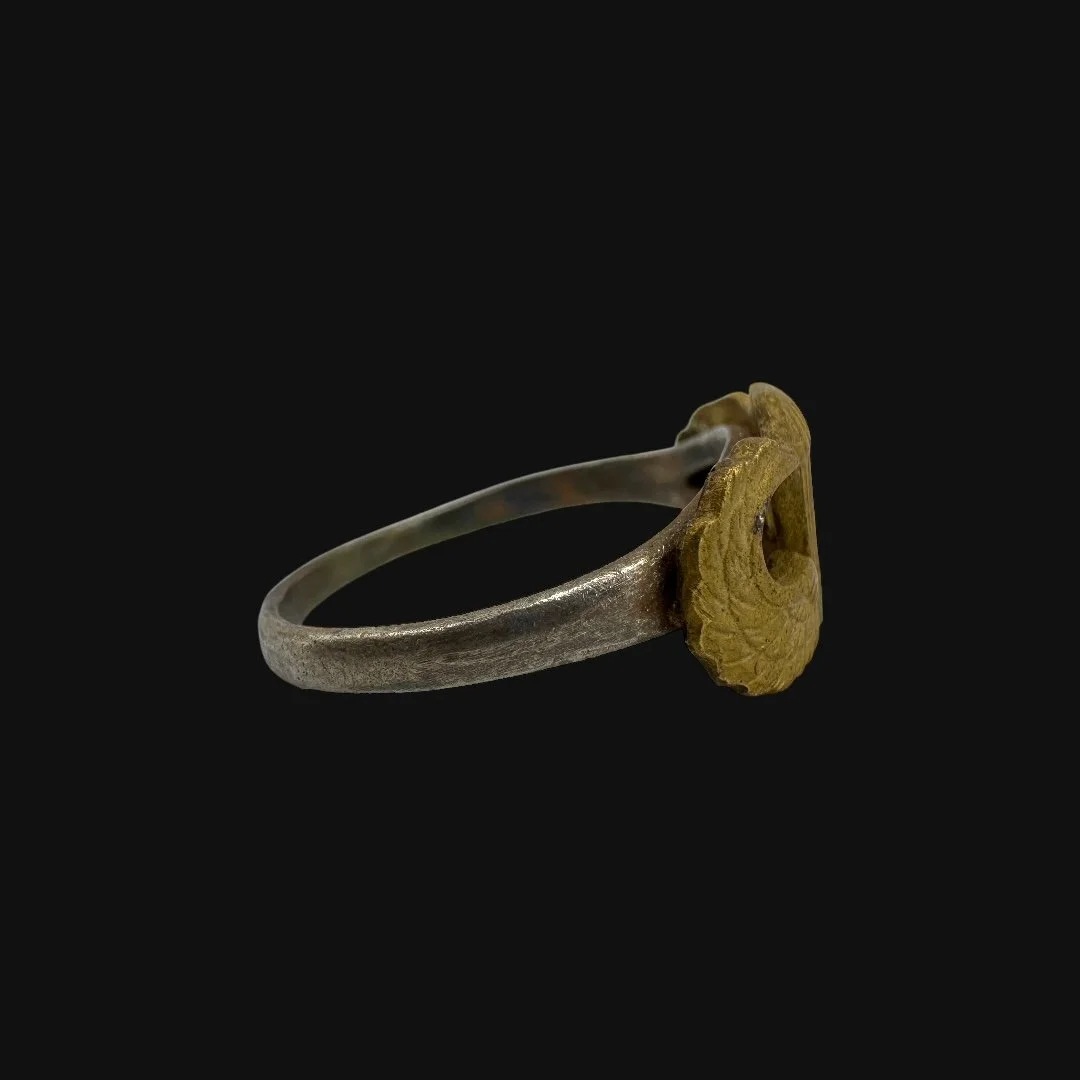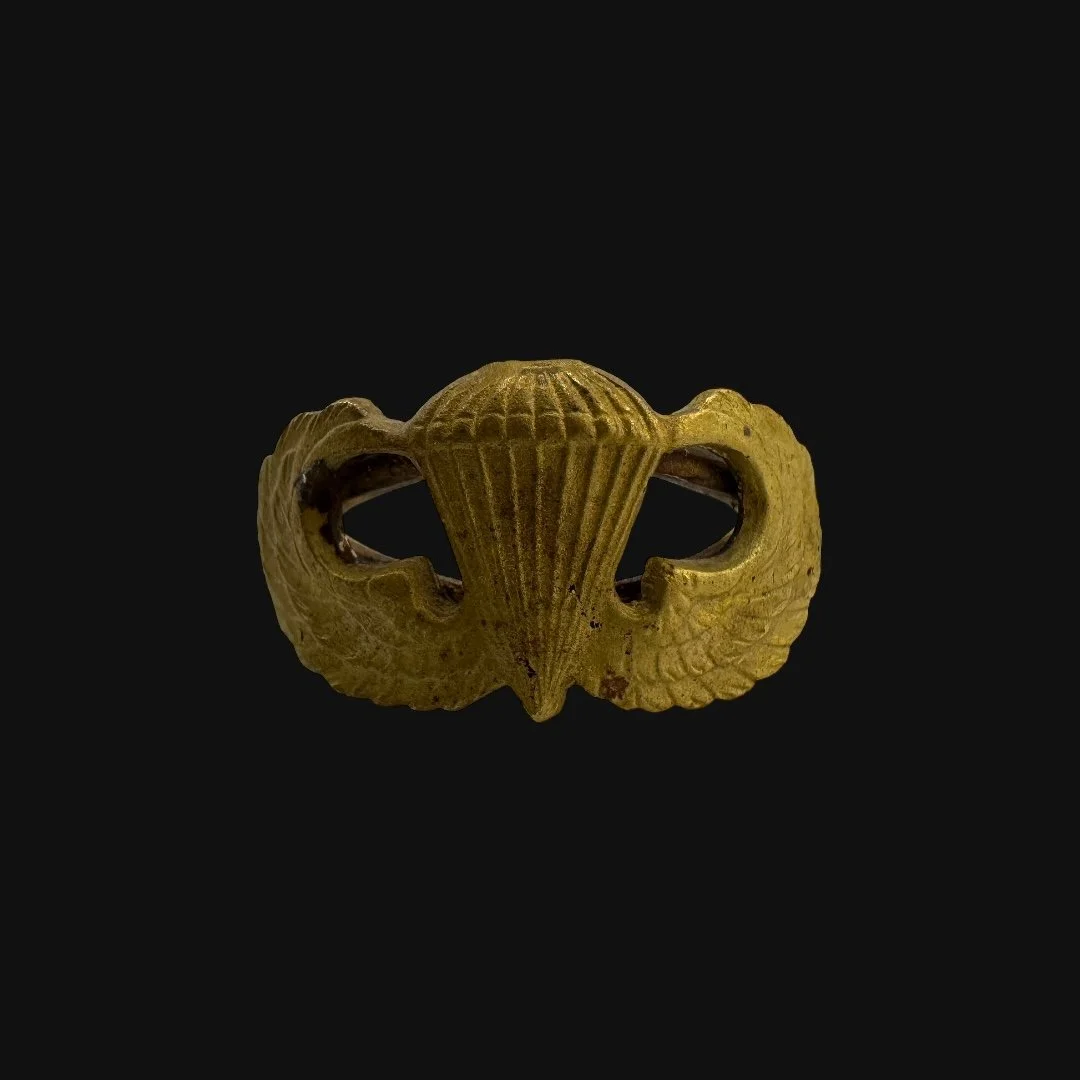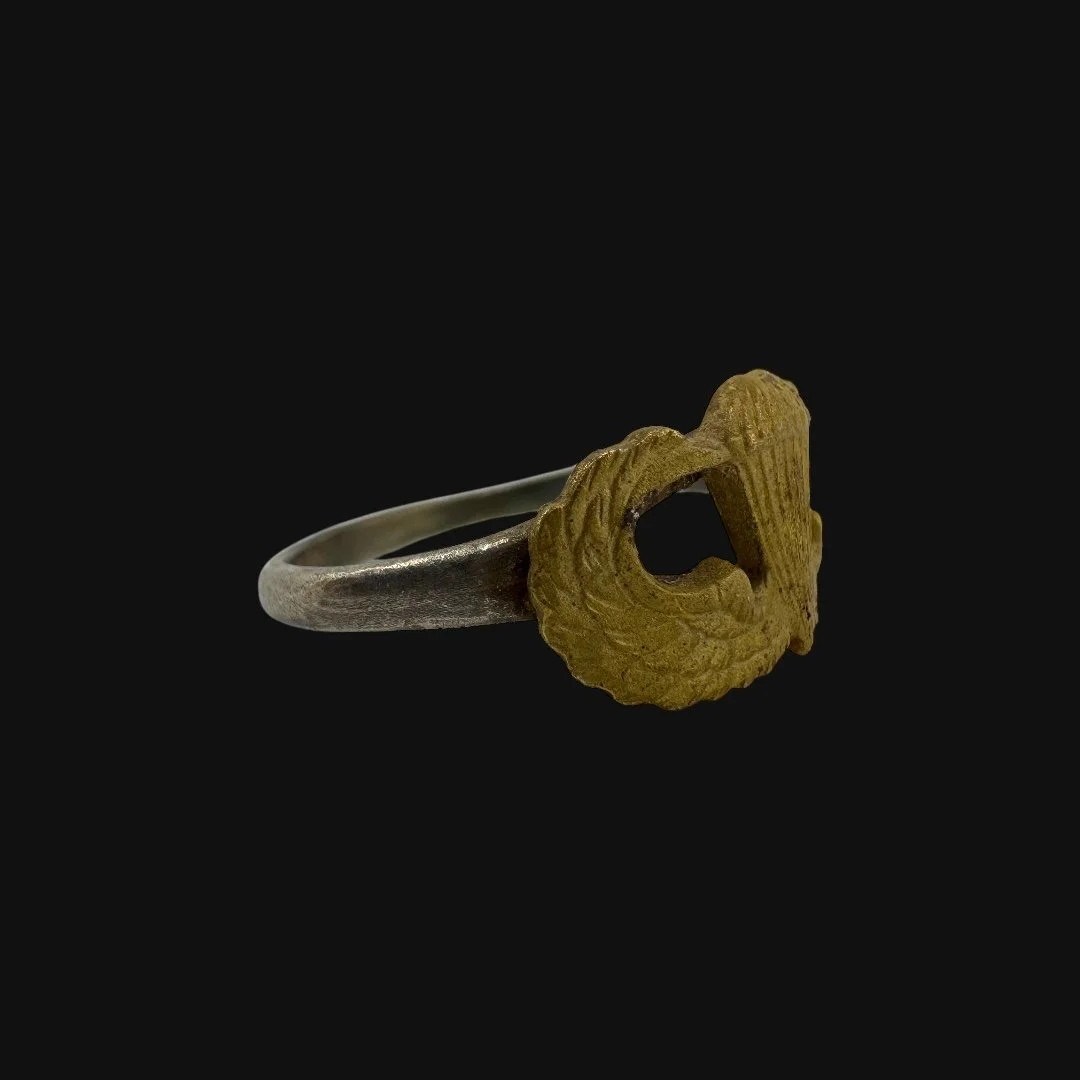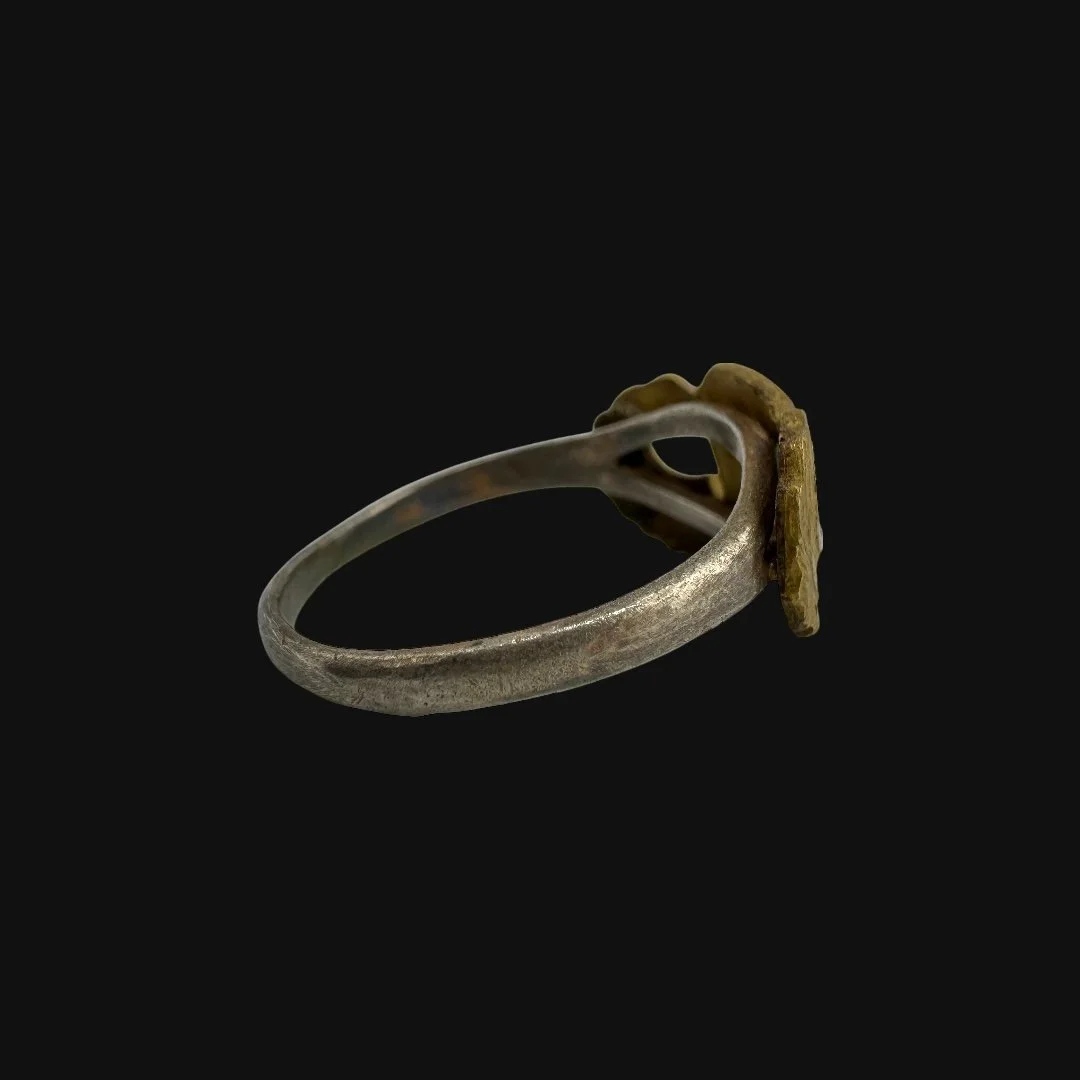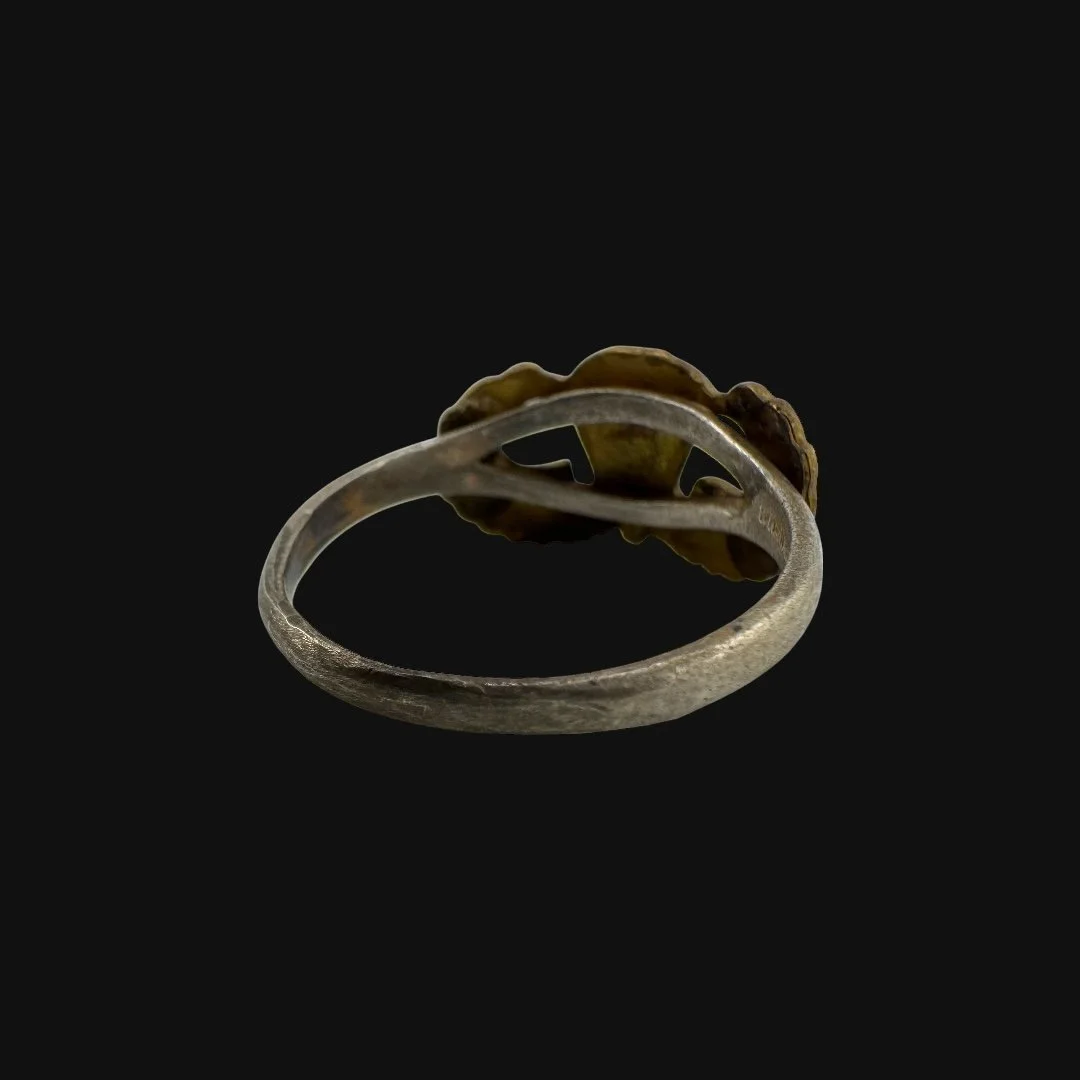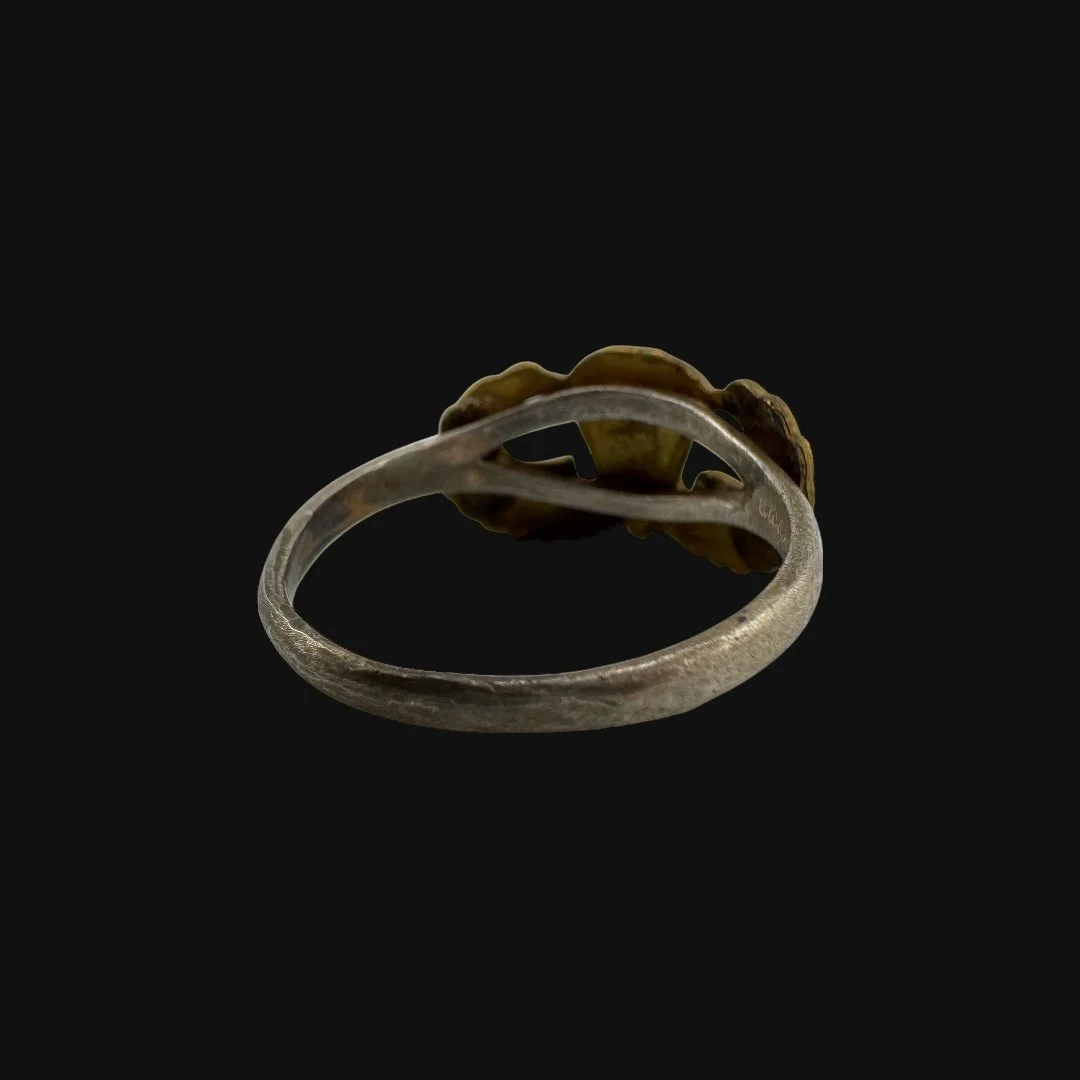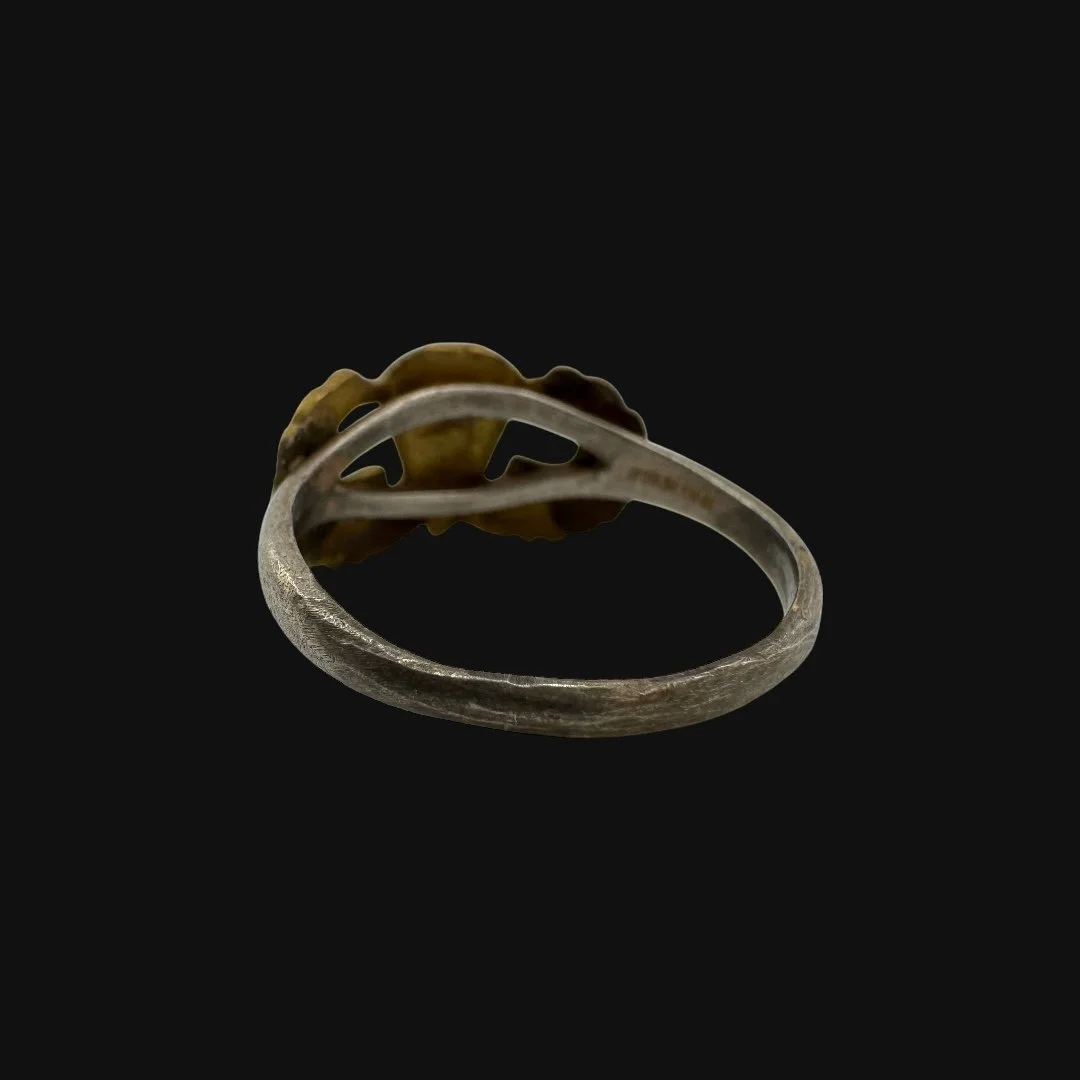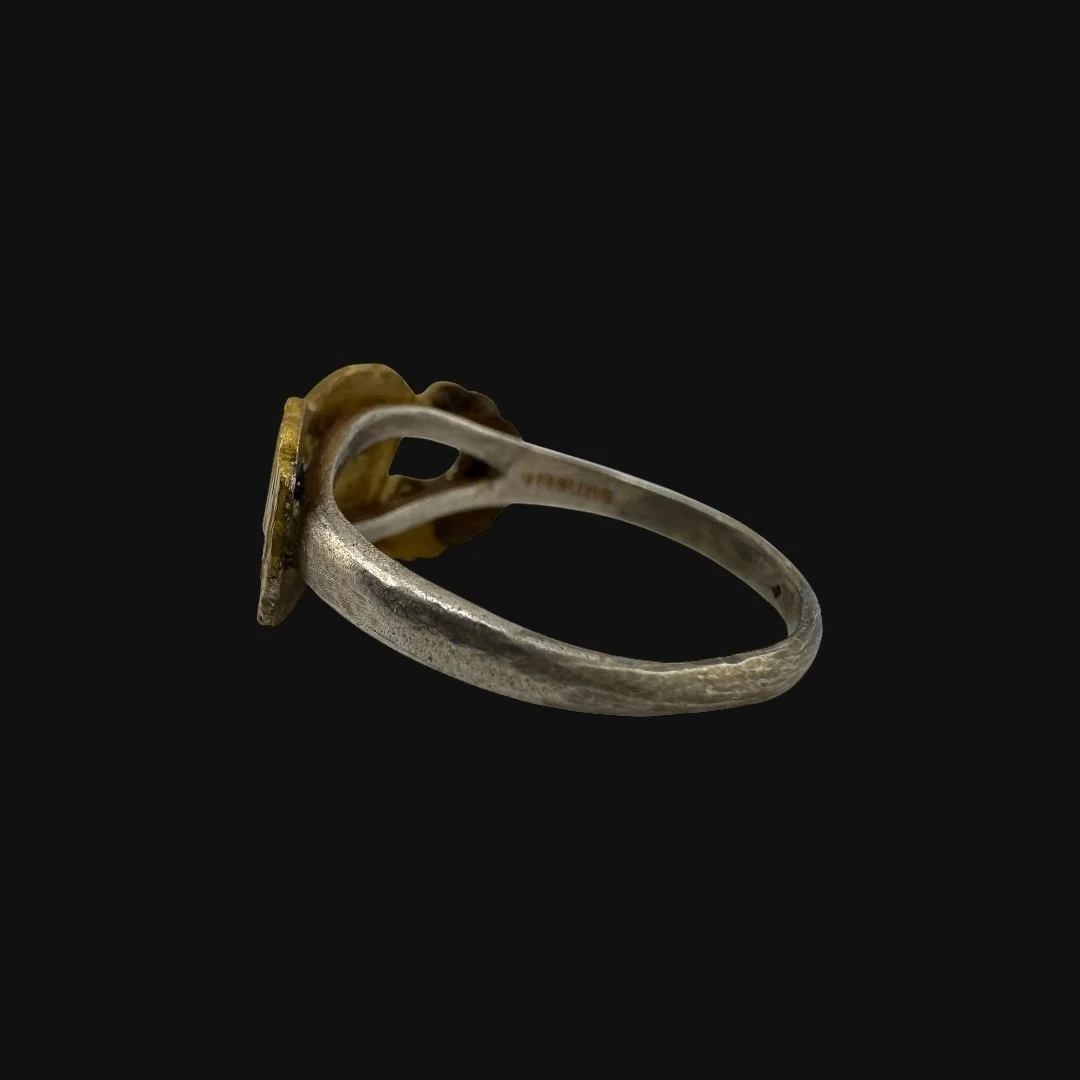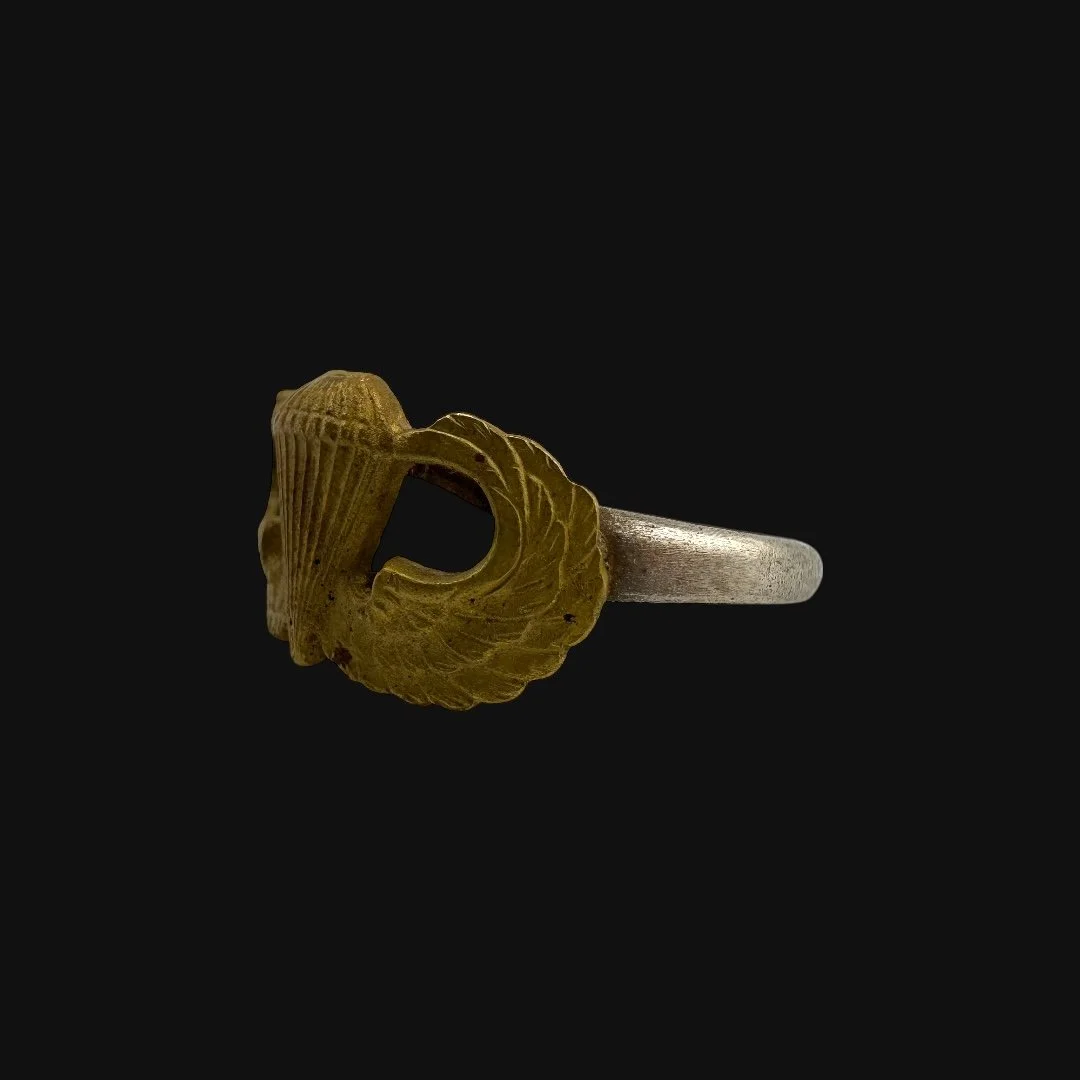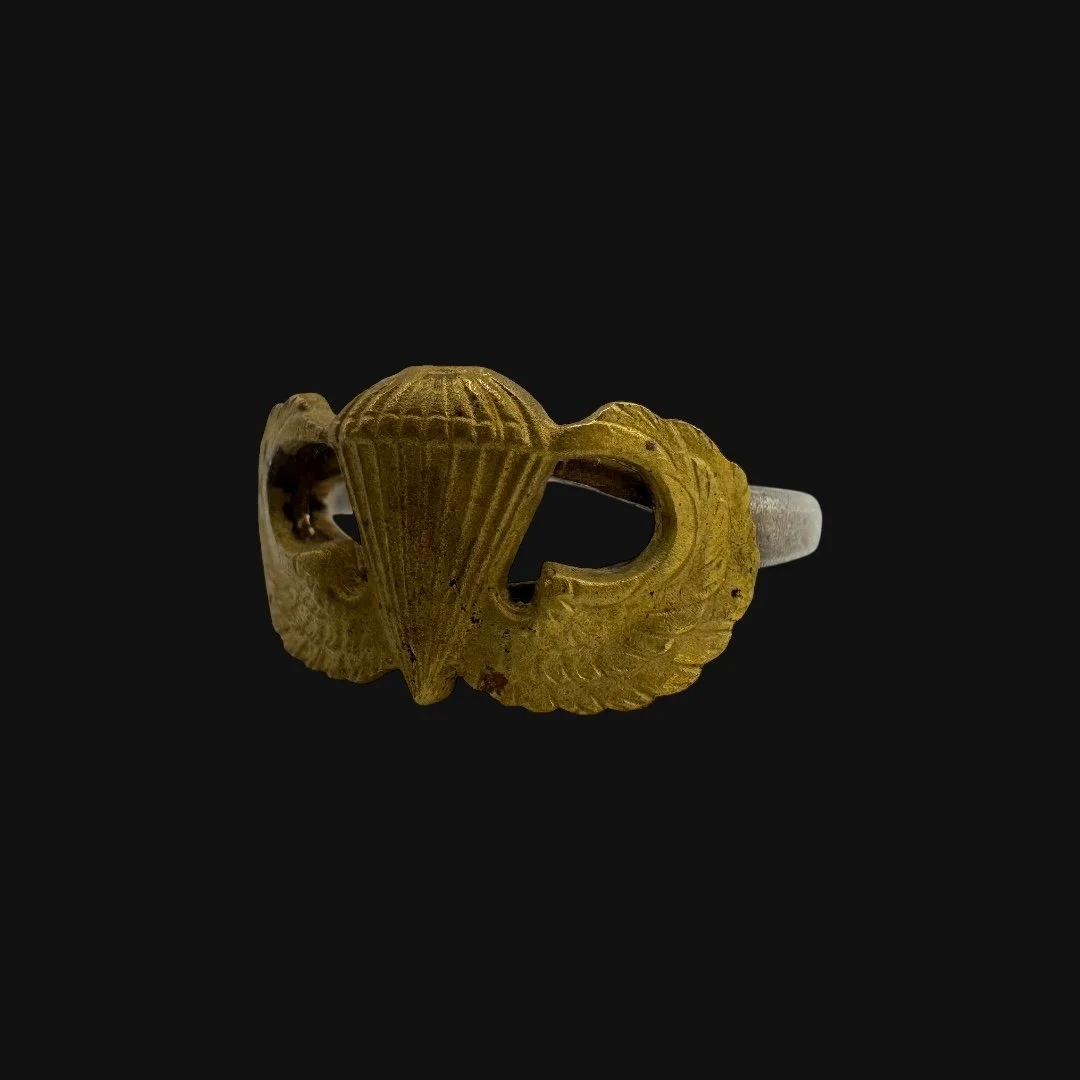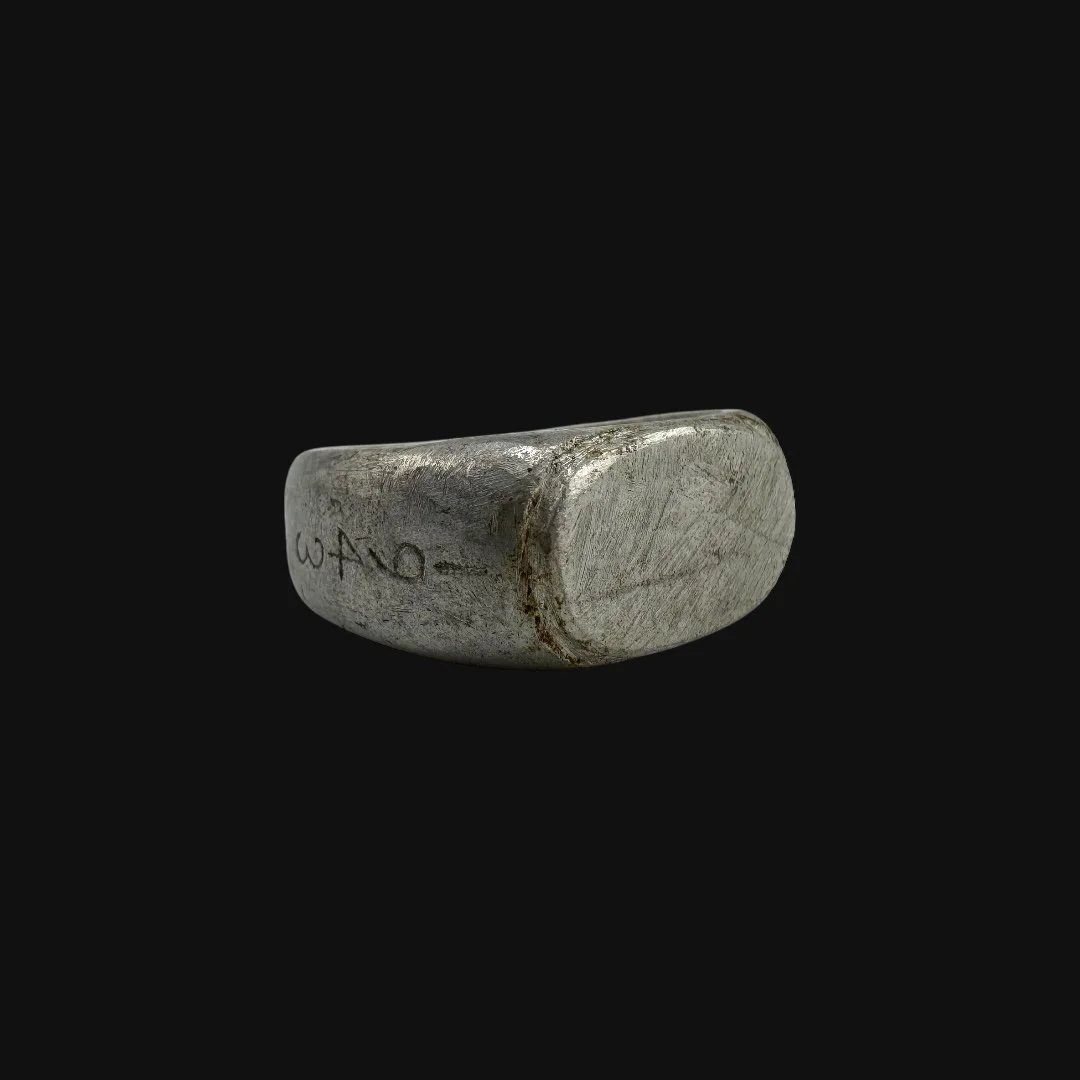 Image 1 of 15
Image 1 of 15

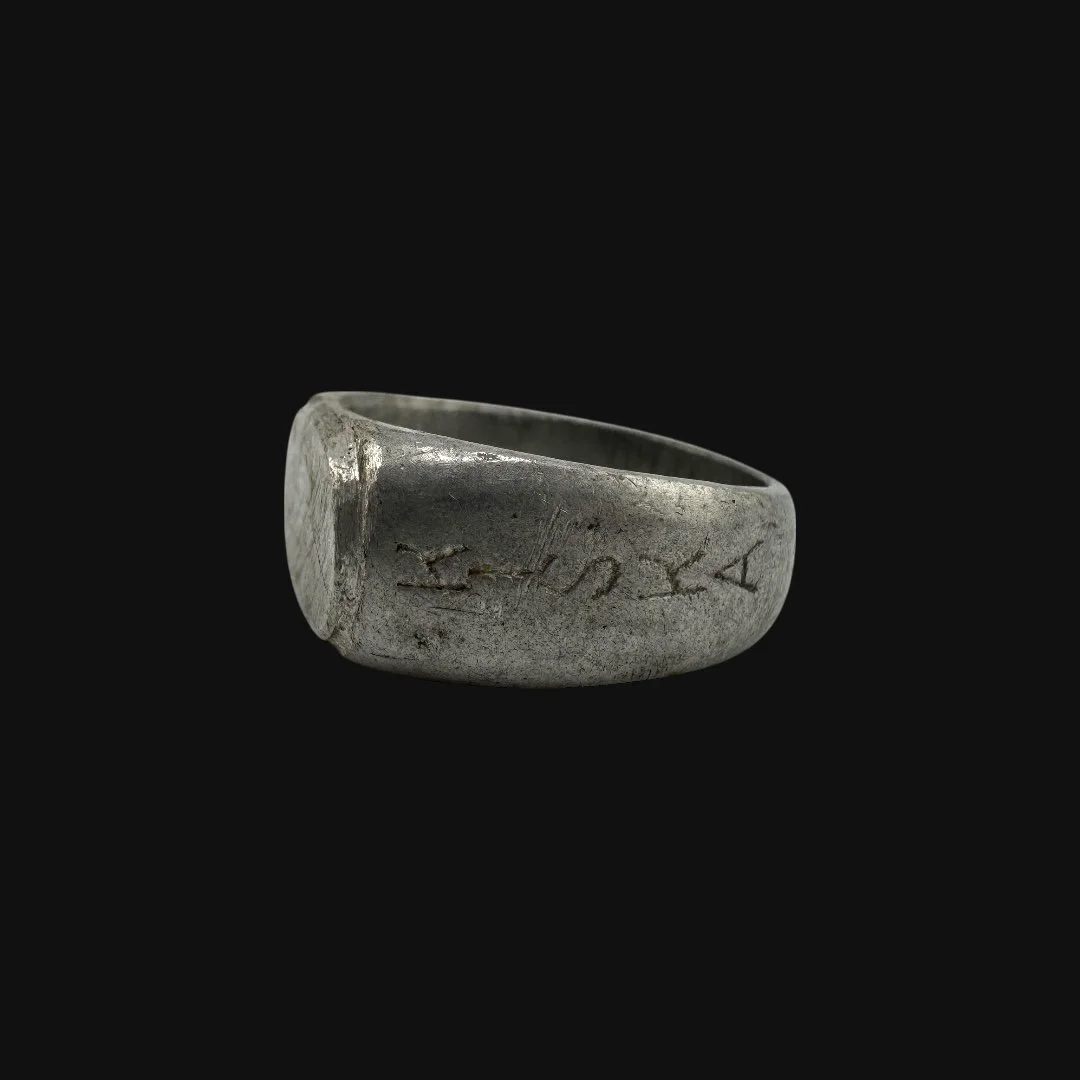 Image 2 of 15
Image 2 of 15

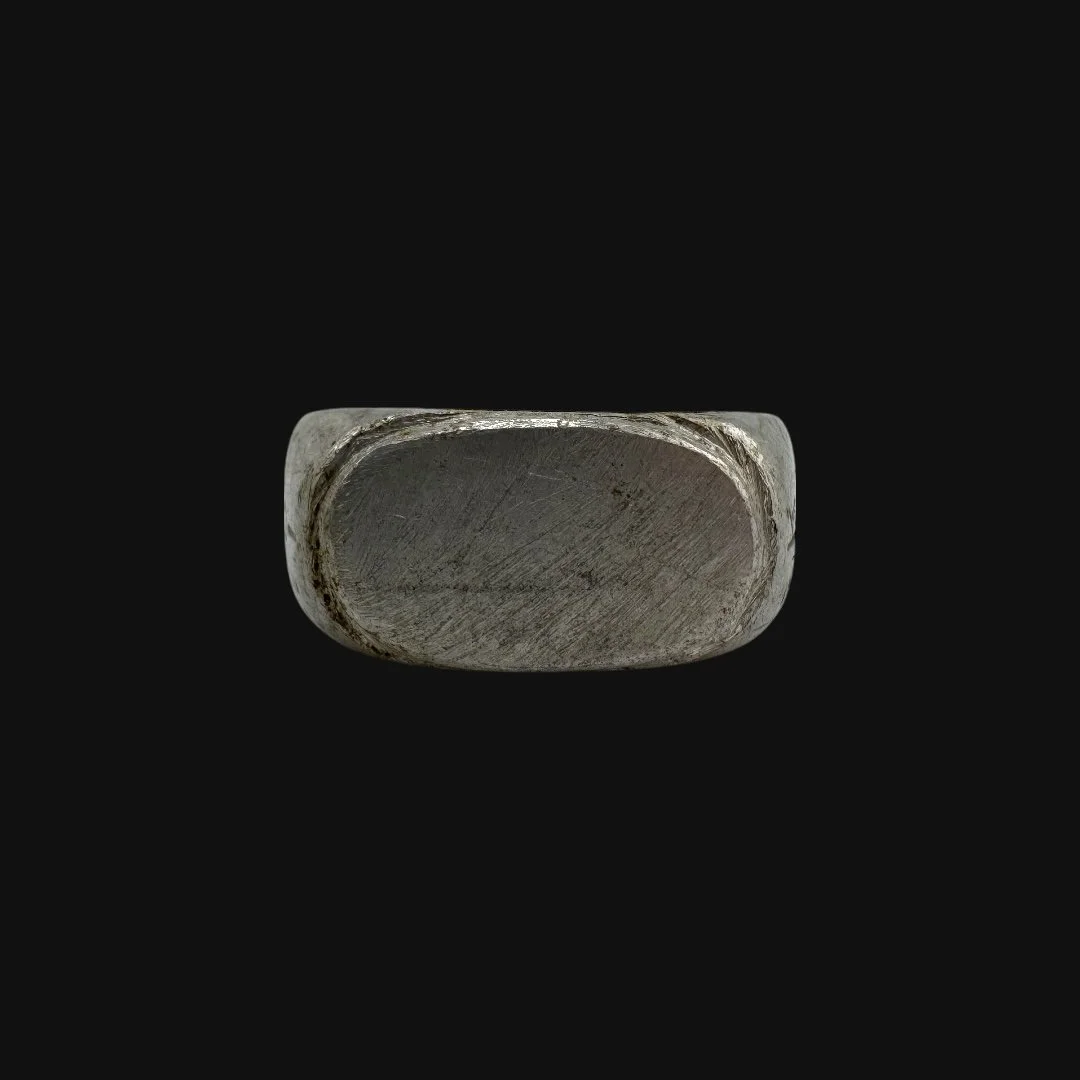 Image 3 of 15
Image 3 of 15

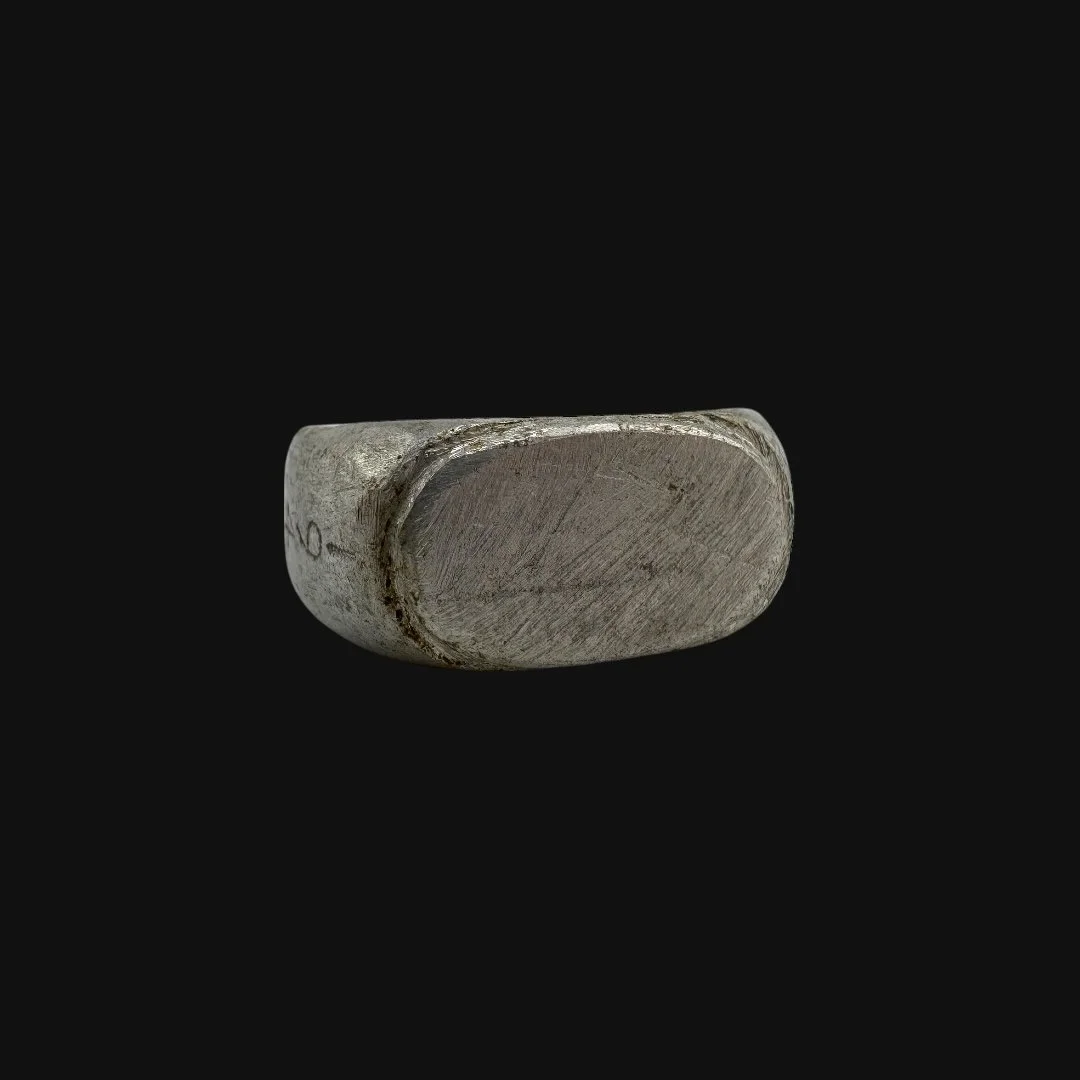 Image 4 of 15
Image 4 of 15

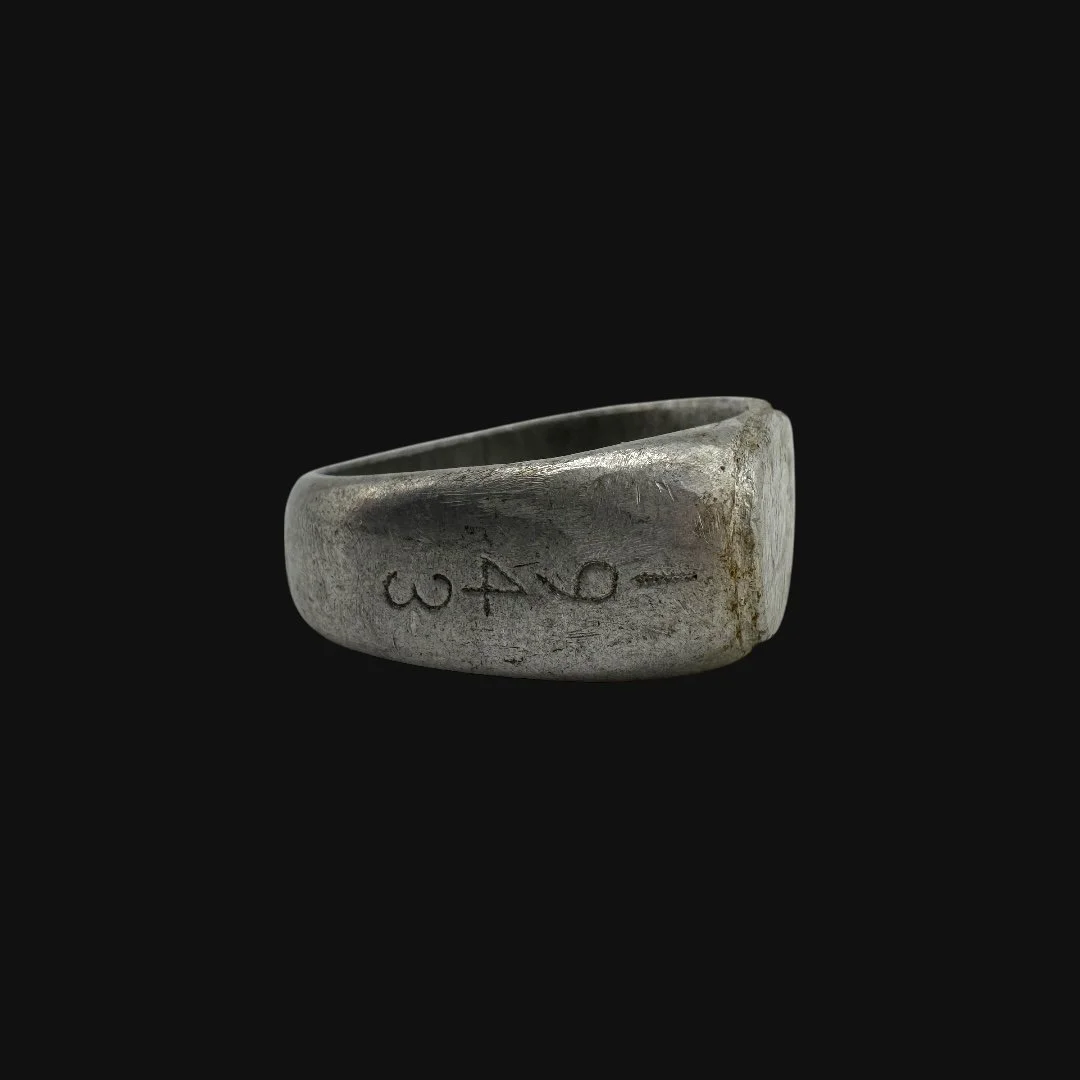 Image 5 of 15
Image 5 of 15

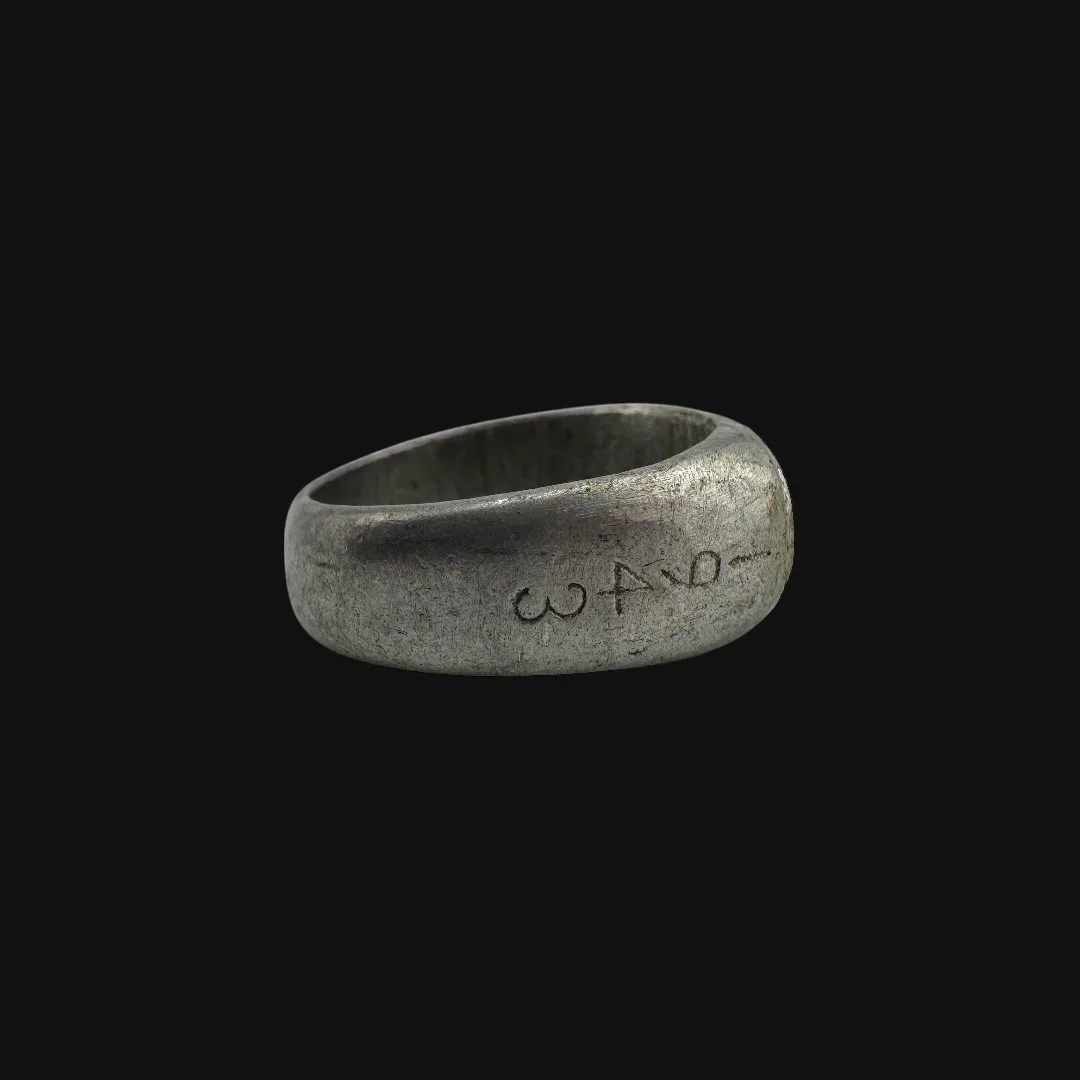 Image 6 of 15
Image 6 of 15

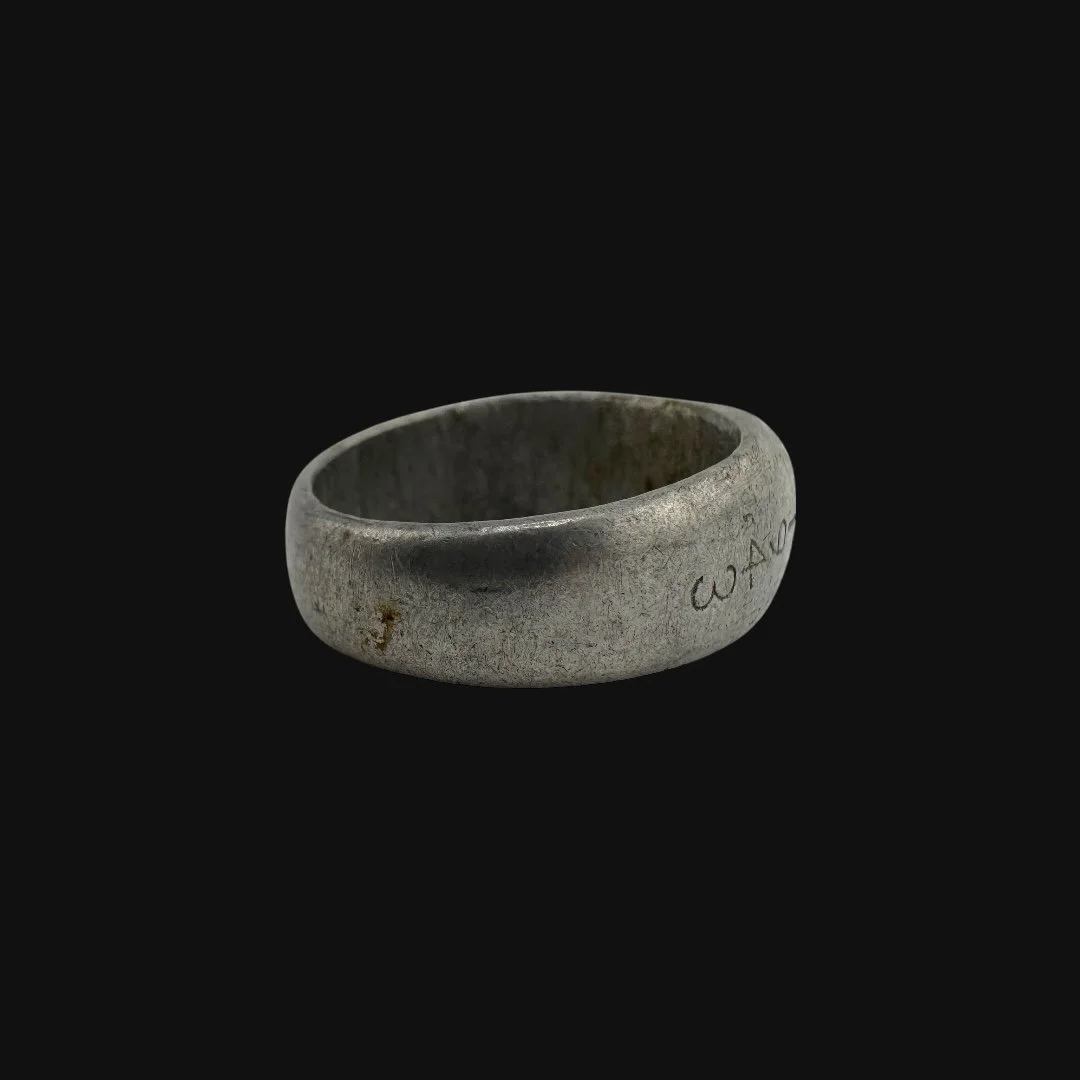 Image 7 of 15
Image 7 of 15

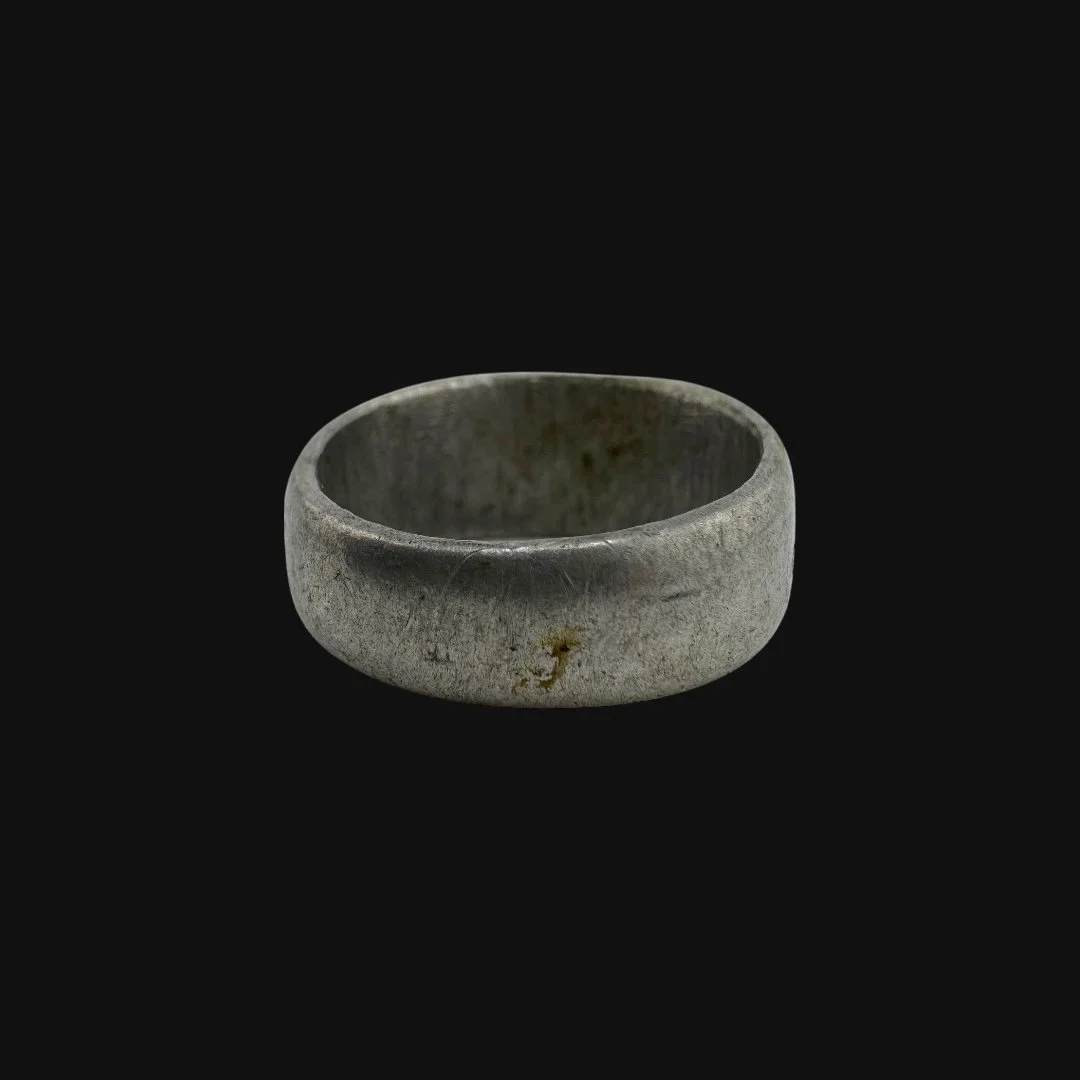 Image 8 of 15
Image 8 of 15

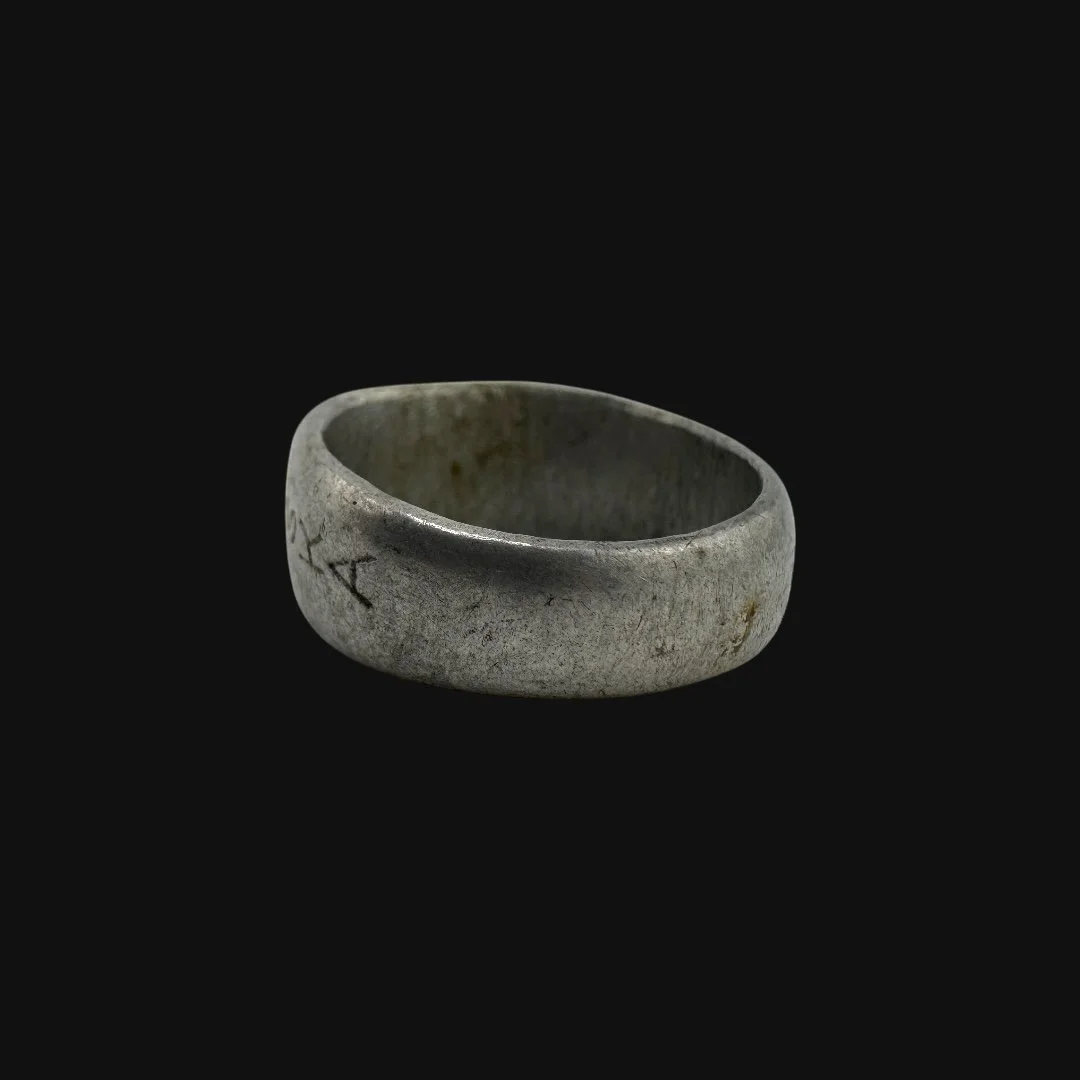 Image 9 of 15
Image 9 of 15

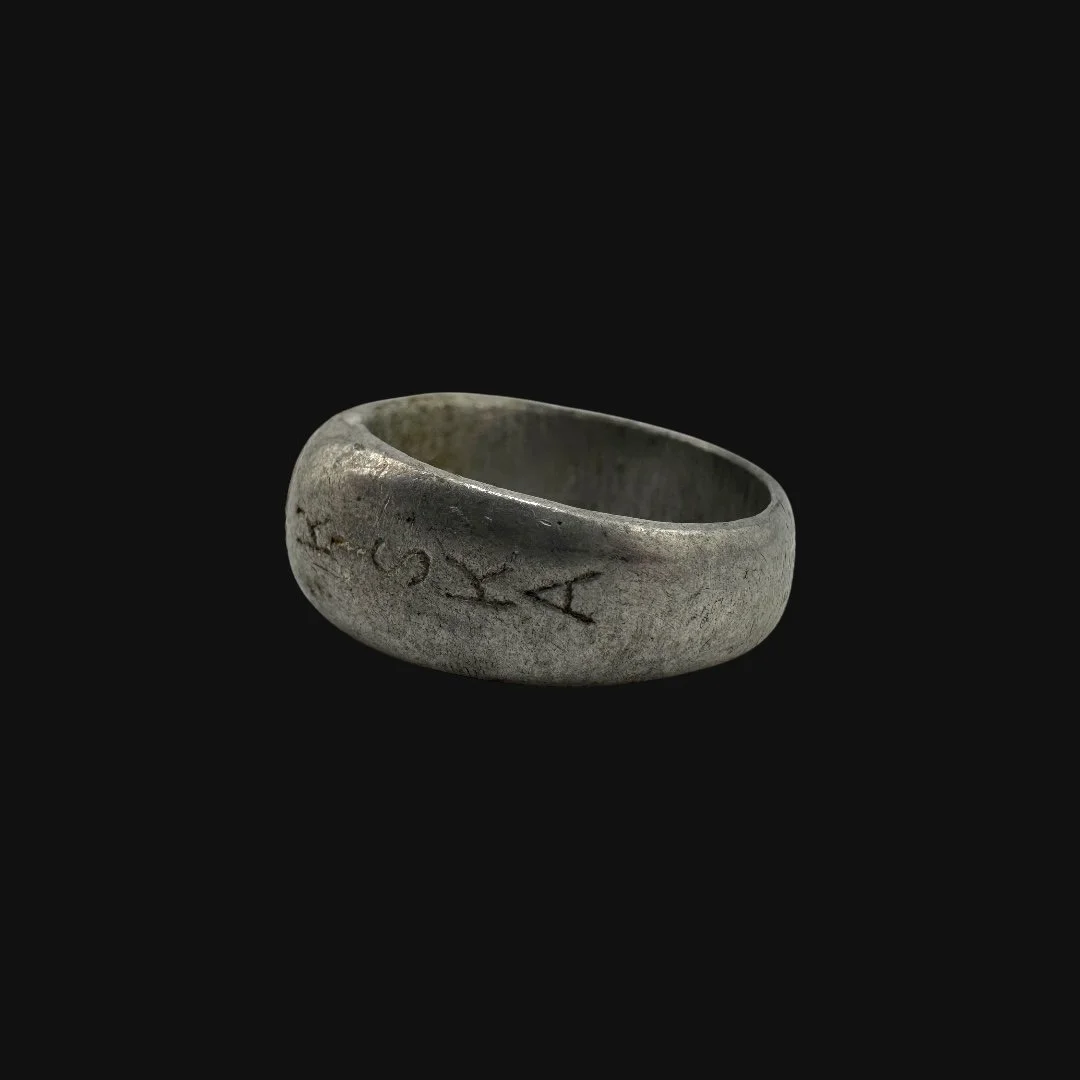 Image 10 of 15
Image 10 of 15

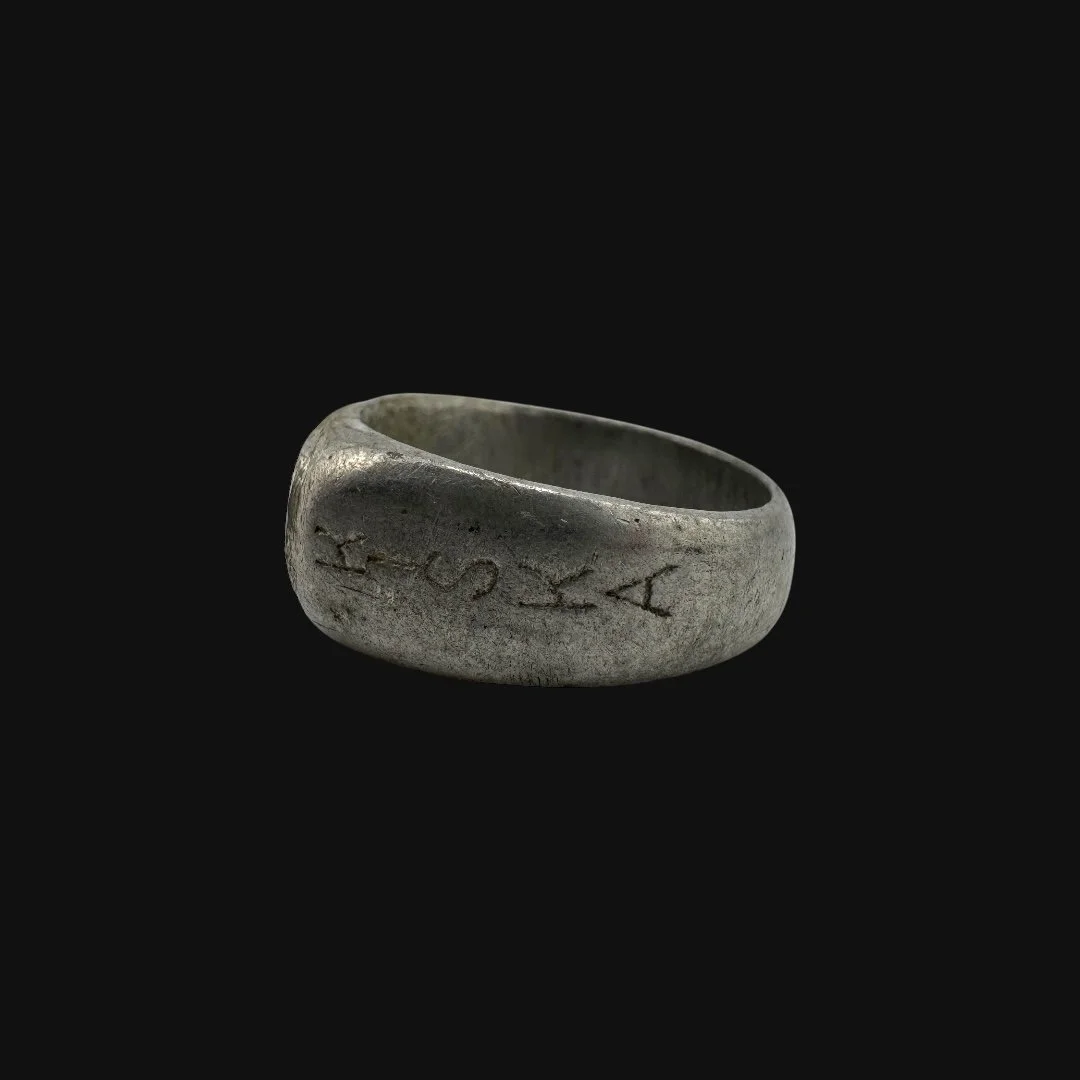 Image 11 of 15
Image 11 of 15

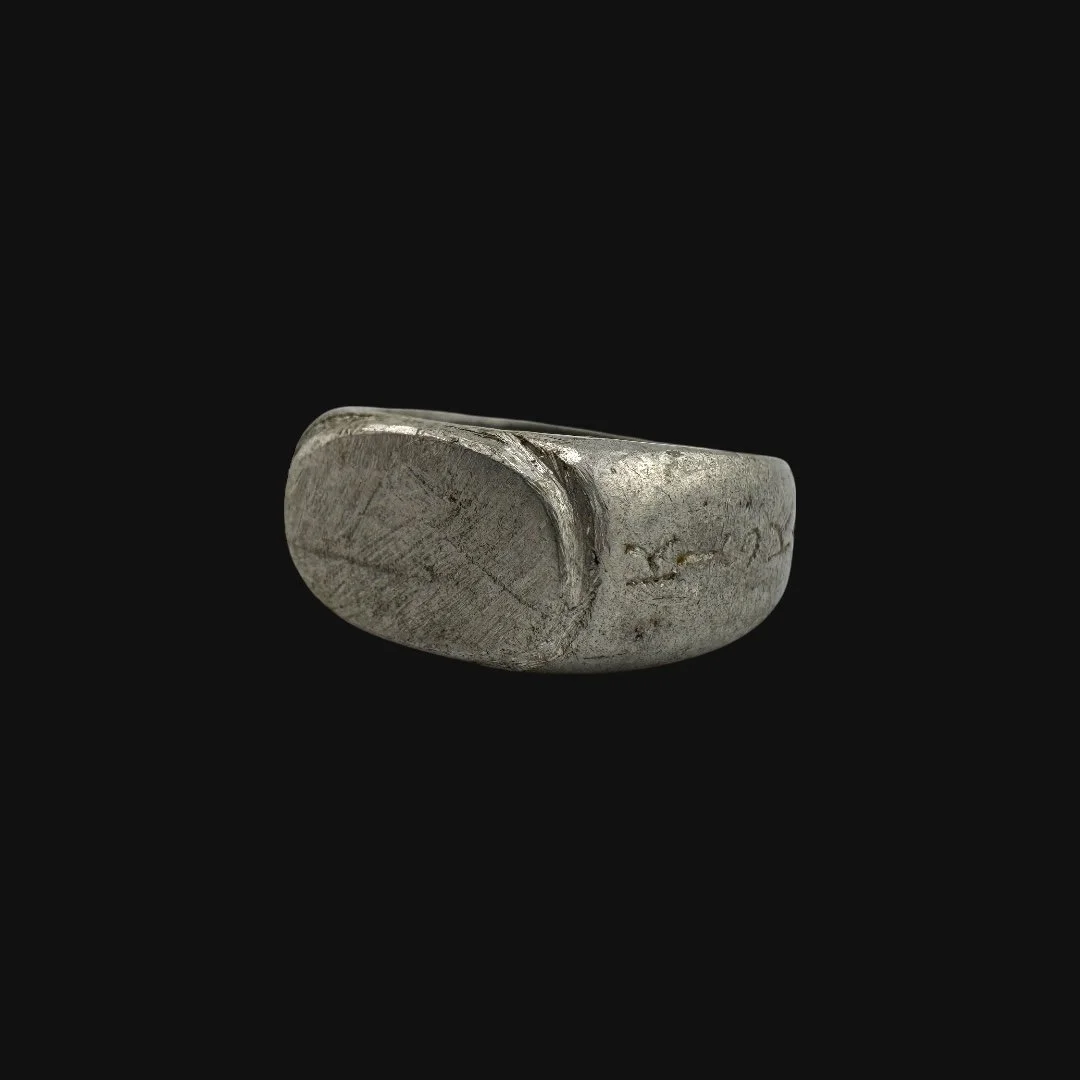 Image 12 of 15
Image 12 of 15

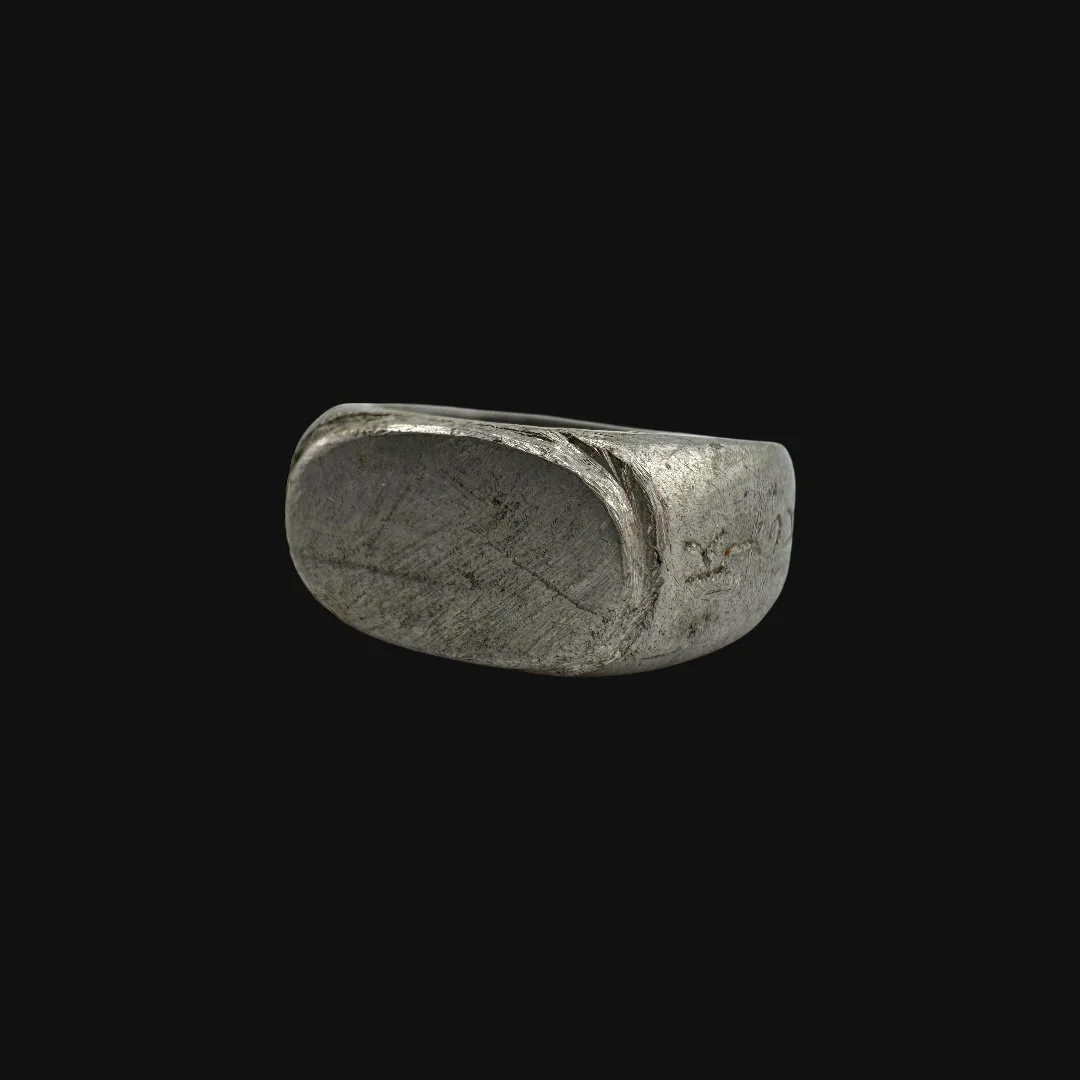 Image 13 of 15
Image 13 of 15

 Image 14 of 15
Image 14 of 15

 Image 15 of 15
Image 15 of 15
















Original WWII Aleutian Islands Campaign “KISKA 1943” U.S. Soldier Handmade Combat Ring – Battlefield Materials (Size 10)
Comes with a hand-signed C.O.A. and a full historical research write-up
From: World War II
Dated: 1943
Ring Size: 10 (US)
Material: Aircraft Skin Wreckage/Discarded Battlefield Material
Theater: Aleutian Islands Campaign (Alaska)
Wearable History Collection:
This authentic 1943 WWII-era ring, preserved in its original and unaltered condition, combines exceptional craftsmanship with lasting durability, making it fully suitable for modern wear today. As part of our exclusive World War II “Wearable History Ring Collection,” it offers the rare opportunity to own and wear a genuine piece of World War II. Both a timeless accessory and a tangible link to the past, this truly one-of-a-kind ring stands as a wearable tribute to the courage and sacrifice of a generation.
Historical Significance to Kiska and the Aleutian Islands Campaign :
The Aleutian Islands Campaign of 1943 stands as one of the most overlooked yet significant operations of World War II. Stretching across the remote northern Pacific, the Aleutians held strategic importance as potential bases for controlling sea lanes and for long-range air operations. In June 1942, Japanese forces occupied Attu and Kiska, the first time enemy troops had seized American territory since the War of 1812. Though partly intended as a diversion for the Midway campaign, the occupation carried symbolic weight, threatening Alaska and American security directly.
By 1943, the United States launched a determined effort to reclaim the islands. The Battle of Attu in May became a brutal test of endurance in fog, snow, and treacherous terrain. Nearly 11,000 American troops faced roughly 2,600 Japanese defenders. After weeks of bitter fighting, including one of the largest banzai charges of the war, the Japanese garrison was virtually wiped out. Attu was secured at the cost of over 3,800 American casualties. This victory opened the way to Kiska, where Allied forces prepared a massive invasion in August. Unknown to them, the Japanese had already evacuated under the cover of fog, leaving the island abandoned. Despite this, mines, accidents, and friendly fire still caused over 300 Allied casualties.
The liberation of the Aleutians held far-reaching consequences. Strategically, it removed the Japanese foothold in the North Pacific and secured sea routes vital to both American and Soviet interests. Symbolically, it restored American confidence after the shock of losing territory to the enemy. The campaign also taught hard lessons about warfare in extreme conditions, shaping Allied preparations for later cold-weather operations. Though the islands never became a springboard for an invasion of Japan, they served as important bases for patrols, weather stations, and reconnaissance. The battles of Attu and Kiska, particularly in 1943, demonstrated that even the most remote and inhospitable battlefields could carry profound significance in the global war.
The Legacy Within This Ring:
This World War II ring, marked “Kiska, 1943,” was crafted in theater during the brutal Aleutian Islands Campaign. Forged from remnants scattered across the fog-shrouded battlefield, it embodies both the harshness and resilience of that campaign. Soldiers in the Aleutians often fashioned such keepsakes as a way to give permanence to their ordeal, transforming the debris of war into lasting symbols of endurance. The inscription ties the piece directly to Kiska, the last Japanese stronghold in the Aleutians, abandoned in August 1943 after months of relentless Allied bombardment and blockade. More than an ornament, the ring preserves the physical essence of one of the most remote and unforgiving fronts of World War II, capturing the ingenuity of its maker and the memory of a campaign fought as much against the elements as against the enemy. It is a wearable relic of survival, sacrifice, and victory on American soil.
Comes with a hand-signed C.O.A. and a full historical research write-up
From: World War II
Dated: 1943
Ring Size: 10 (US)
Material: Aircraft Skin Wreckage/Discarded Battlefield Material
Theater: Aleutian Islands Campaign (Alaska)
Wearable History Collection:
This authentic 1943 WWII-era ring, preserved in its original and unaltered condition, combines exceptional craftsmanship with lasting durability, making it fully suitable for modern wear today. As part of our exclusive World War II “Wearable History Ring Collection,” it offers the rare opportunity to own and wear a genuine piece of World War II. Both a timeless accessory and a tangible link to the past, this truly one-of-a-kind ring stands as a wearable tribute to the courage and sacrifice of a generation.
Historical Significance to Kiska and the Aleutian Islands Campaign :
The Aleutian Islands Campaign of 1943 stands as one of the most overlooked yet significant operations of World War II. Stretching across the remote northern Pacific, the Aleutians held strategic importance as potential bases for controlling sea lanes and for long-range air operations. In June 1942, Japanese forces occupied Attu and Kiska, the first time enemy troops had seized American territory since the War of 1812. Though partly intended as a diversion for the Midway campaign, the occupation carried symbolic weight, threatening Alaska and American security directly.
By 1943, the United States launched a determined effort to reclaim the islands. The Battle of Attu in May became a brutal test of endurance in fog, snow, and treacherous terrain. Nearly 11,000 American troops faced roughly 2,600 Japanese defenders. After weeks of bitter fighting, including one of the largest banzai charges of the war, the Japanese garrison was virtually wiped out. Attu was secured at the cost of over 3,800 American casualties. This victory opened the way to Kiska, where Allied forces prepared a massive invasion in August. Unknown to them, the Japanese had already evacuated under the cover of fog, leaving the island abandoned. Despite this, mines, accidents, and friendly fire still caused over 300 Allied casualties.
The liberation of the Aleutians held far-reaching consequences. Strategically, it removed the Japanese foothold in the North Pacific and secured sea routes vital to both American and Soviet interests. Symbolically, it restored American confidence after the shock of losing territory to the enemy. The campaign also taught hard lessons about warfare in extreme conditions, shaping Allied preparations for later cold-weather operations. Though the islands never became a springboard for an invasion of Japan, they served as important bases for patrols, weather stations, and reconnaissance. The battles of Attu and Kiska, particularly in 1943, demonstrated that even the most remote and inhospitable battlefields could carry profound significance in the global war.
The Legacy Within This Ring:
This World War II ring, marked “Kiska, 1943,” was crafted in theater during the brutal Aleutian Islands Campaign. Forged from remnants scattered across the fog-shrouded battlefield, it embodies both the harshness and resilience of that campaign. Soldiers in the Aleutians often fashioned such keepsakes as a way to give permanence to their ordeal, transforming the debris of war into lasting symbols of endurance. The inscription ties the piece directly to Kiska, the last Japanese stronghold in the Aleutians, abandoned in August 1943 after months of relentless Allied bombardment and blockade. More than an ornament, the ring preserves the physical essence of one of the most remote and unforgiving fronts of World War II, capturing the ingenuity of its maker and the memory of a campaign fought as much against the elements as against the enemy. It is a wearable relic of survival, sacrifice, and victory on American soil.
